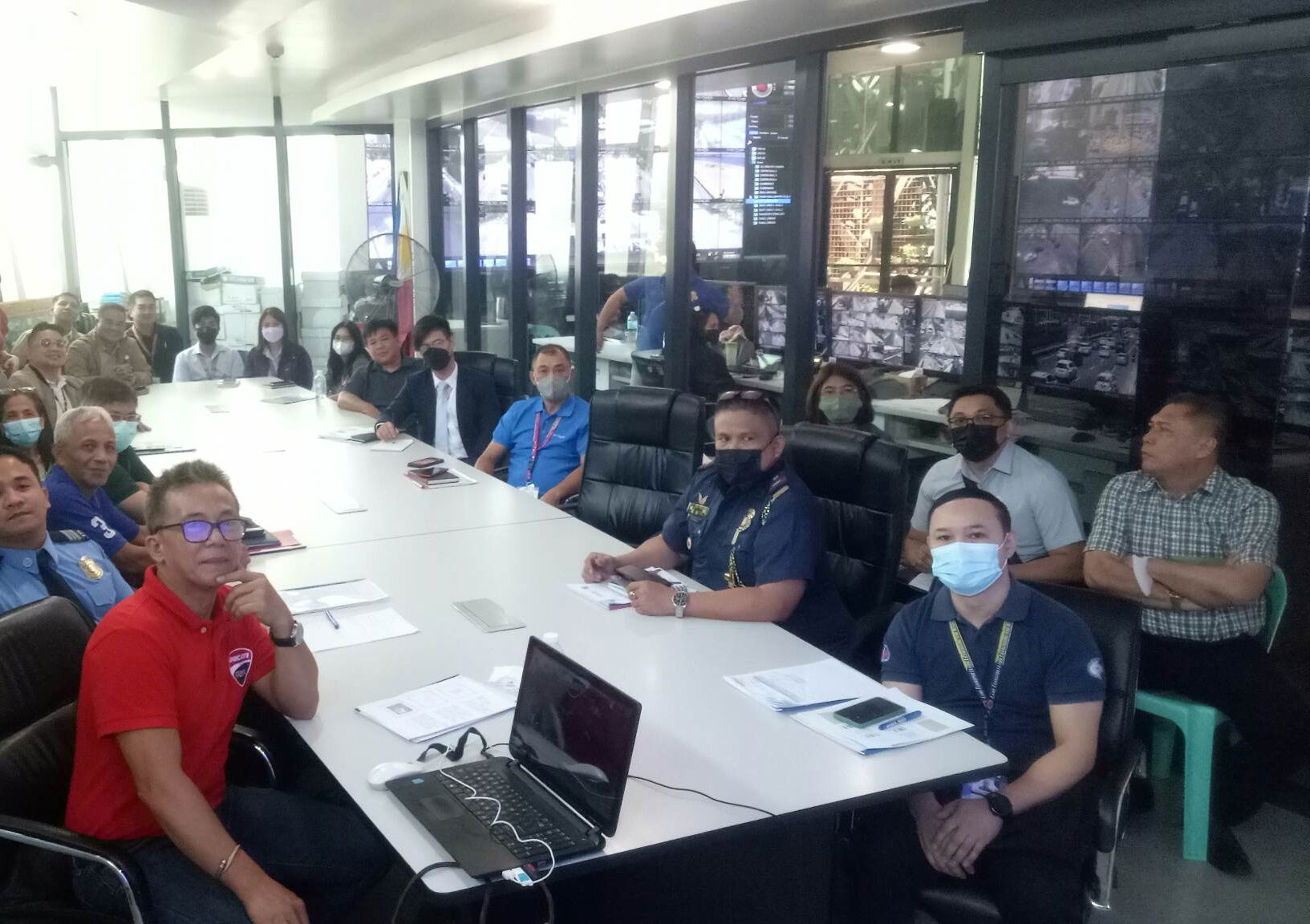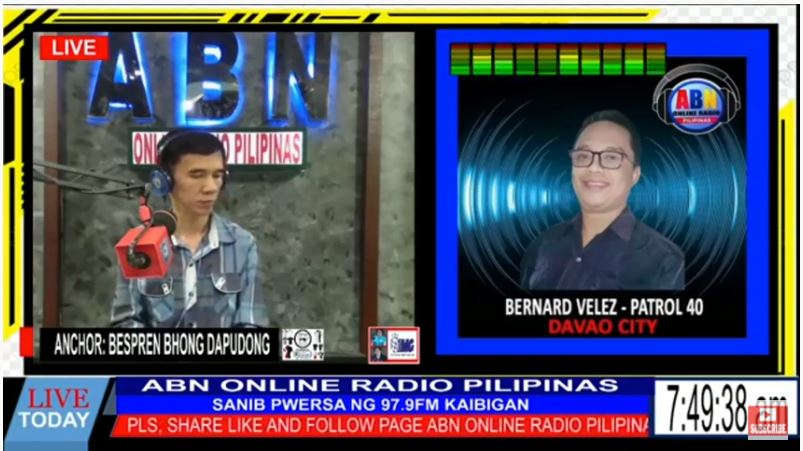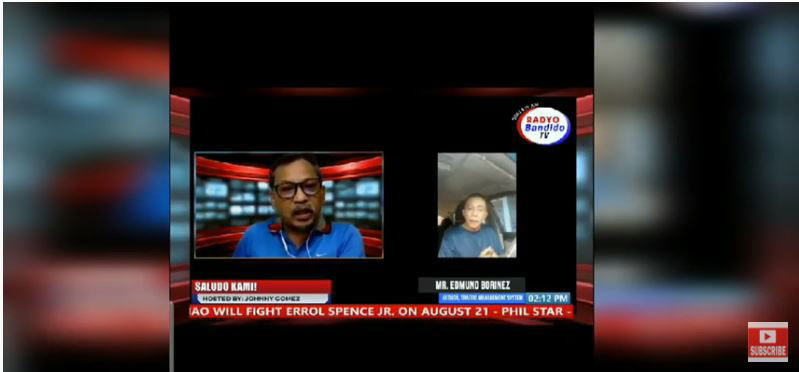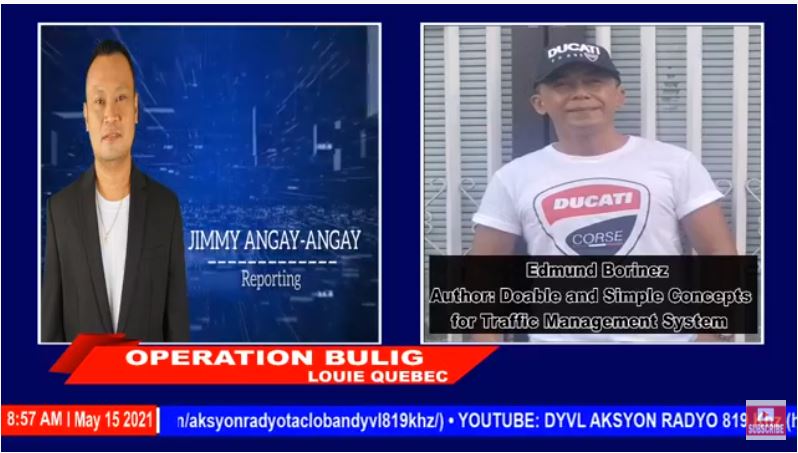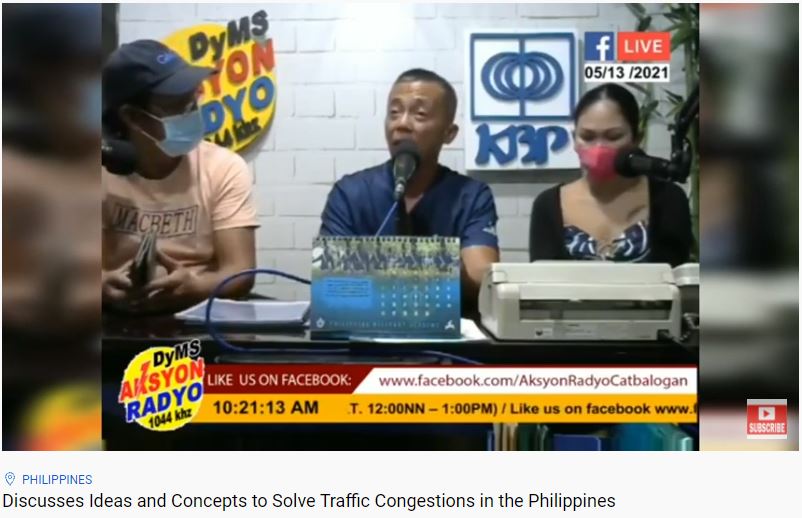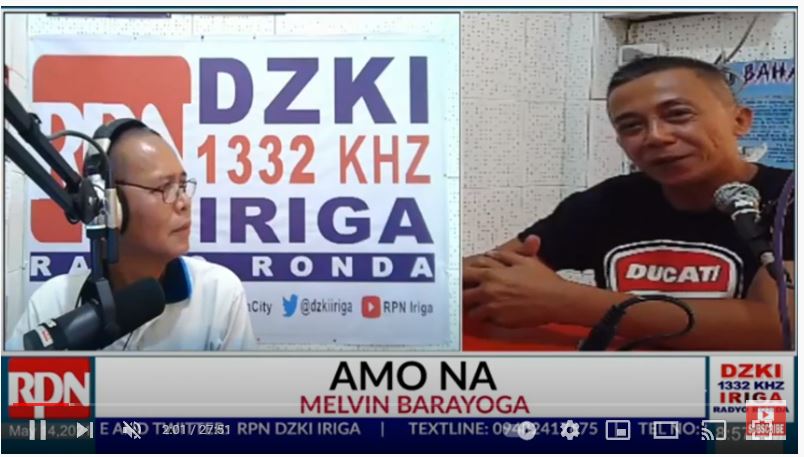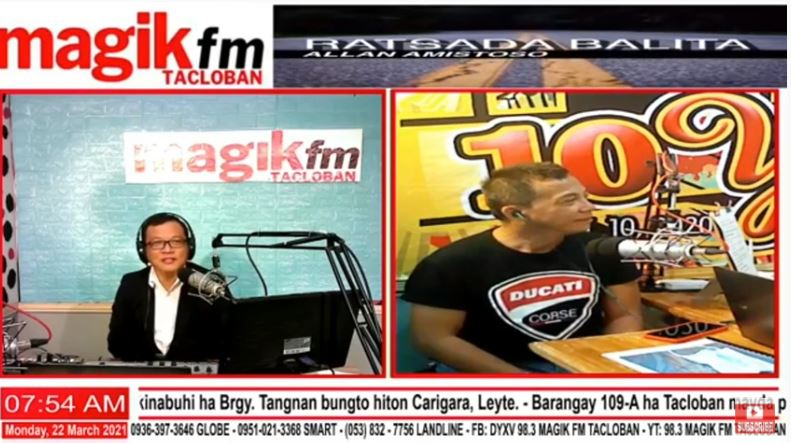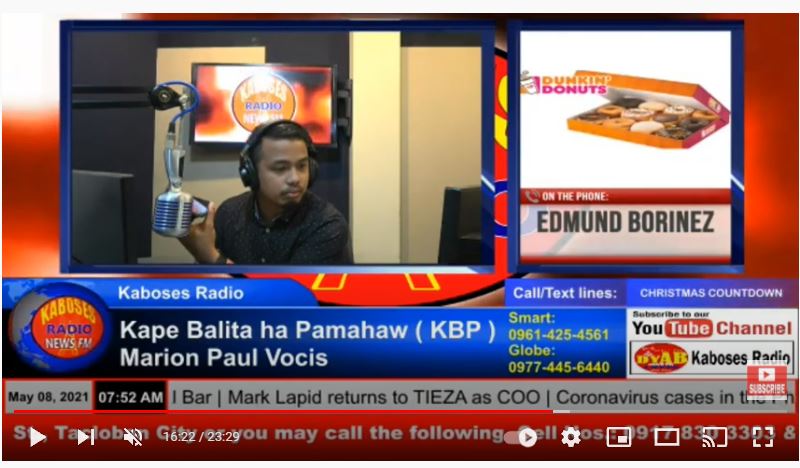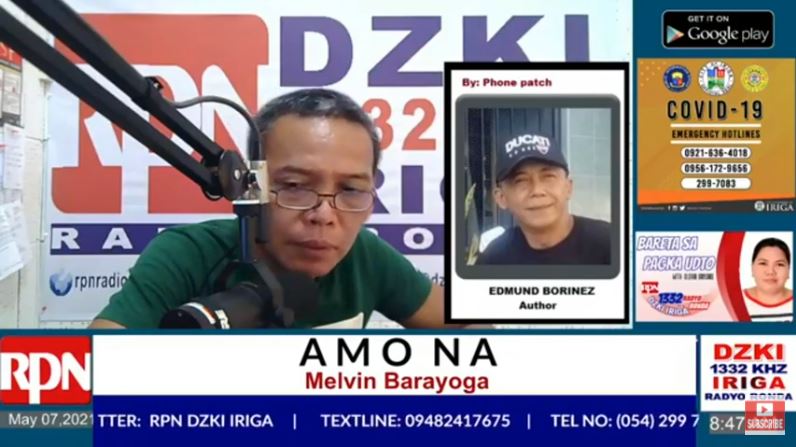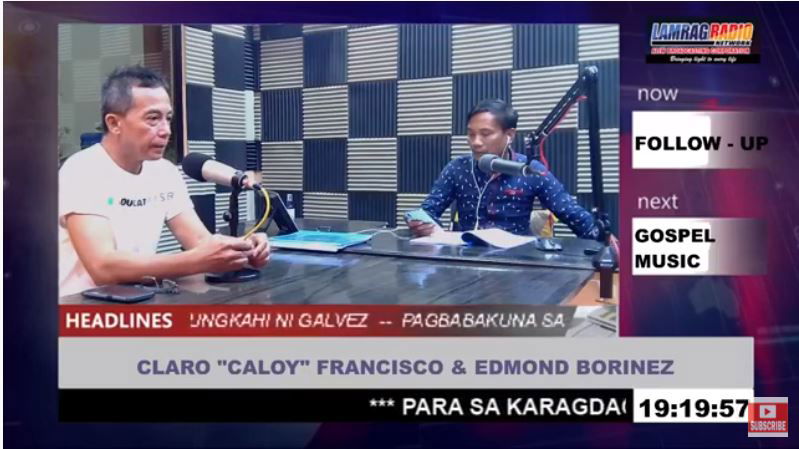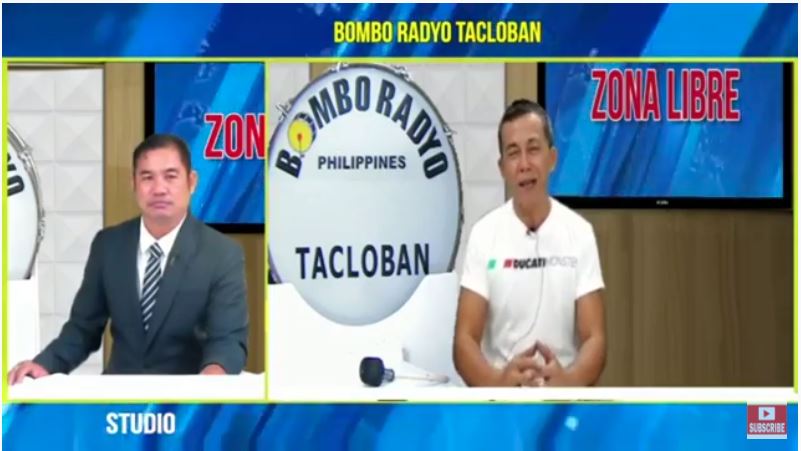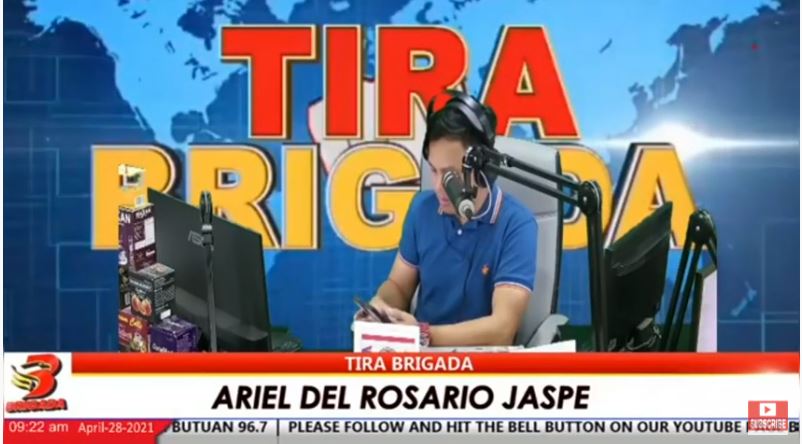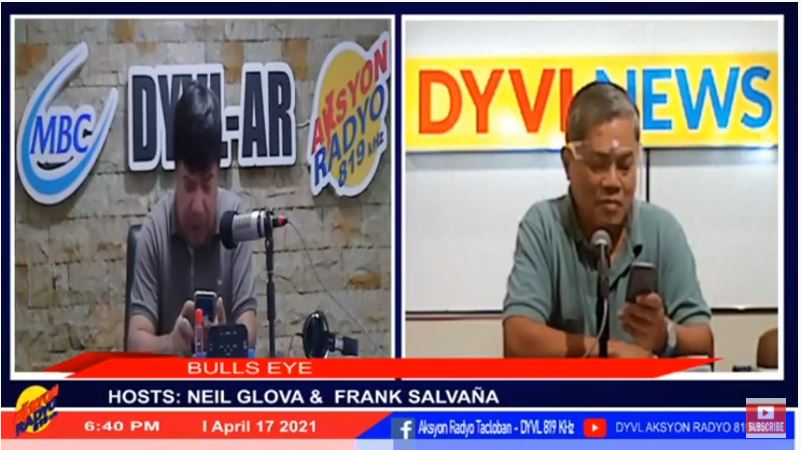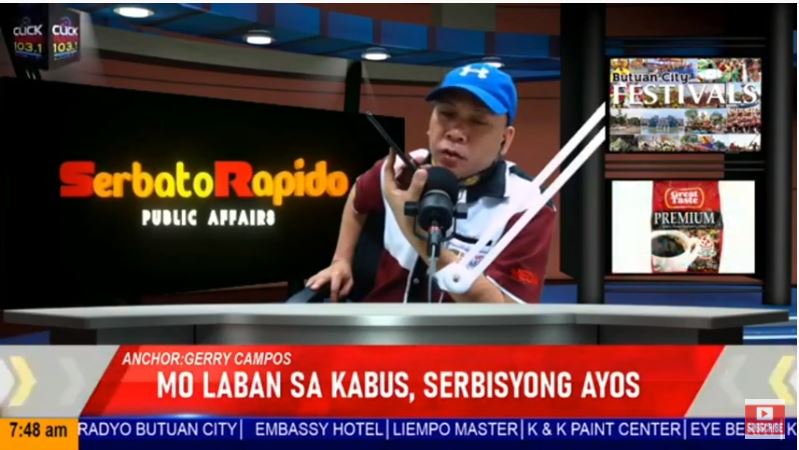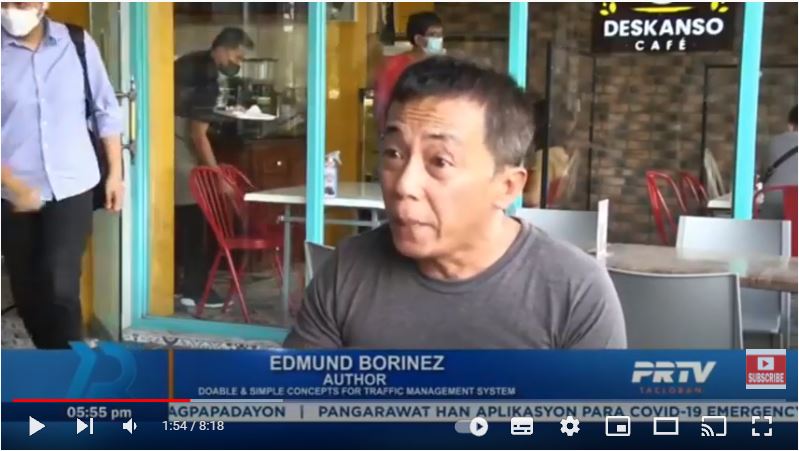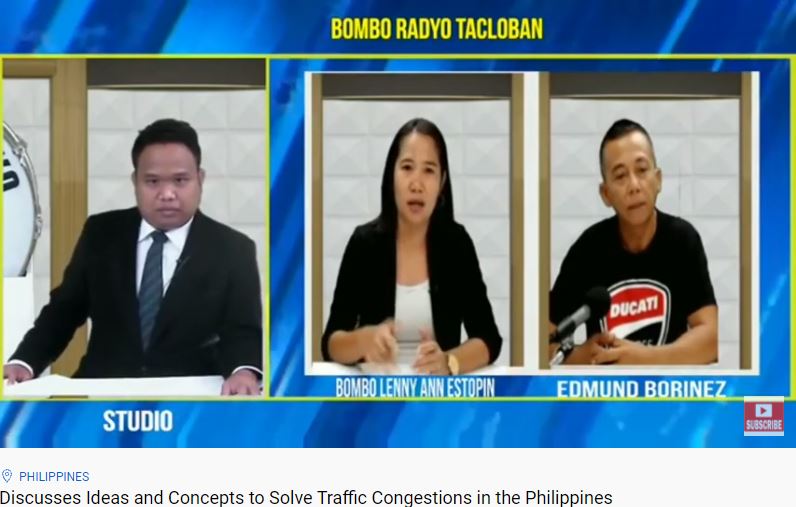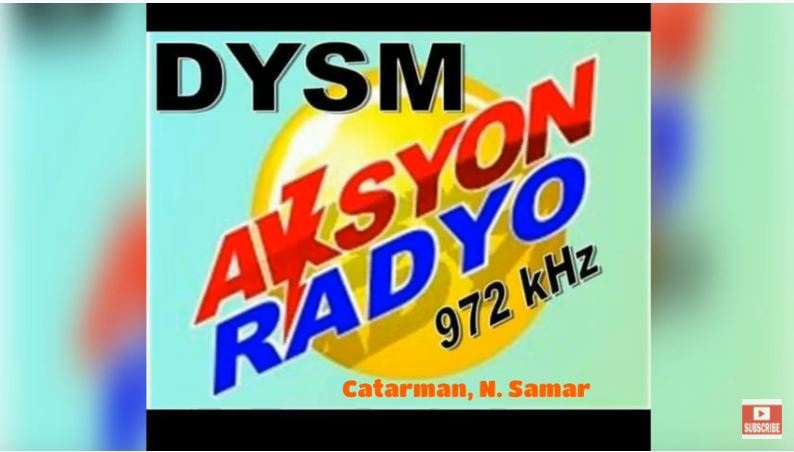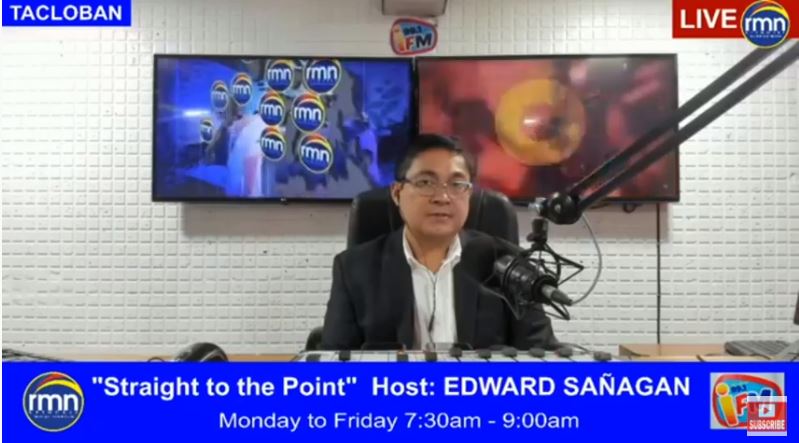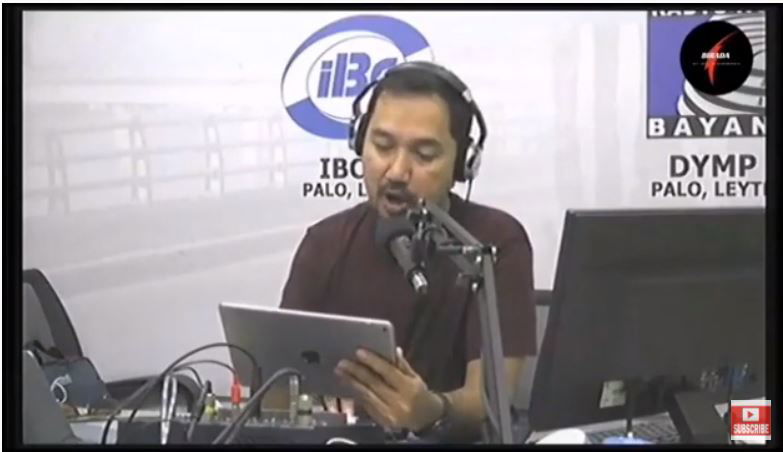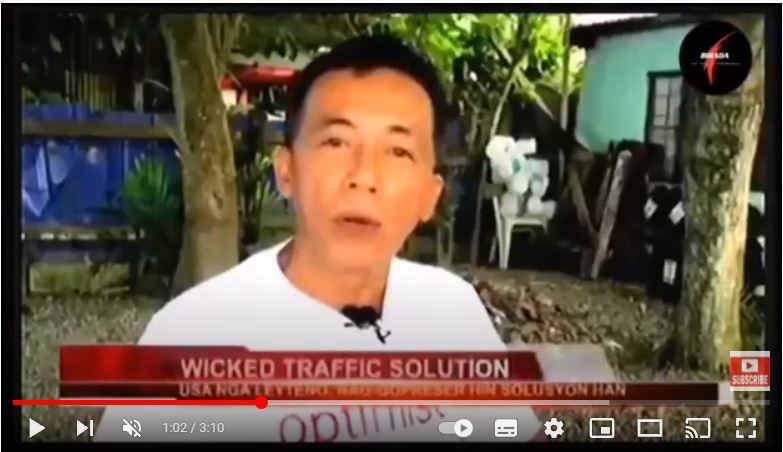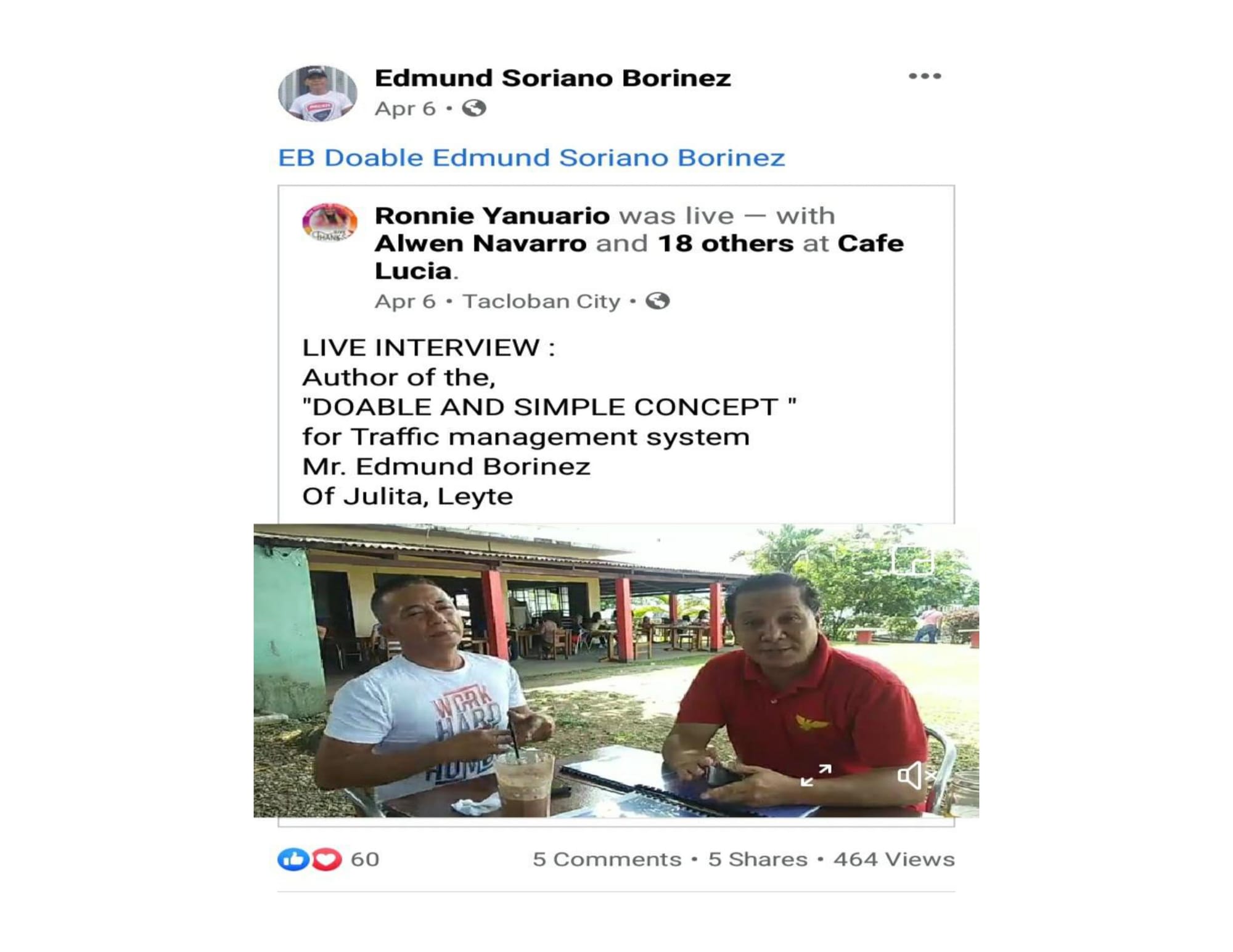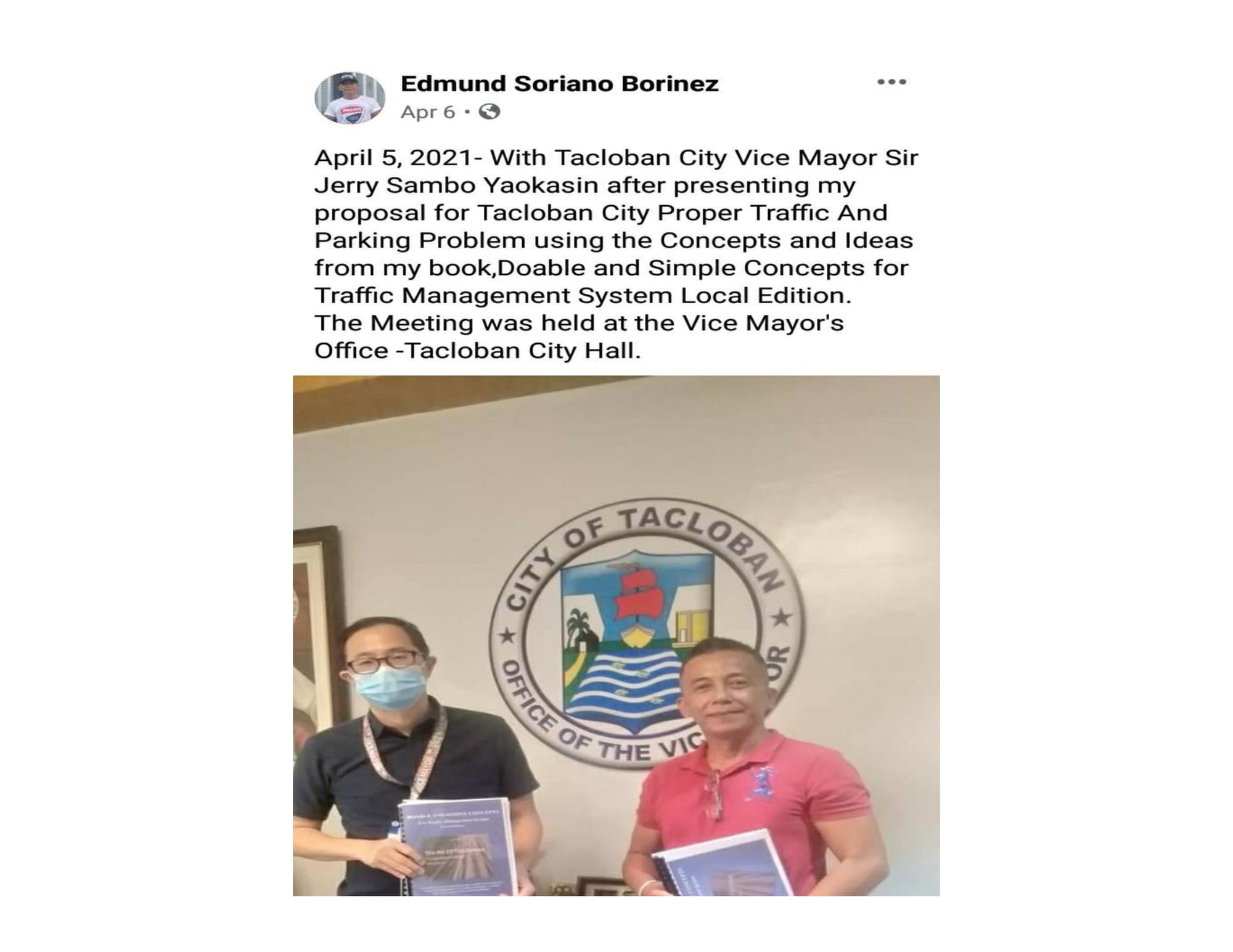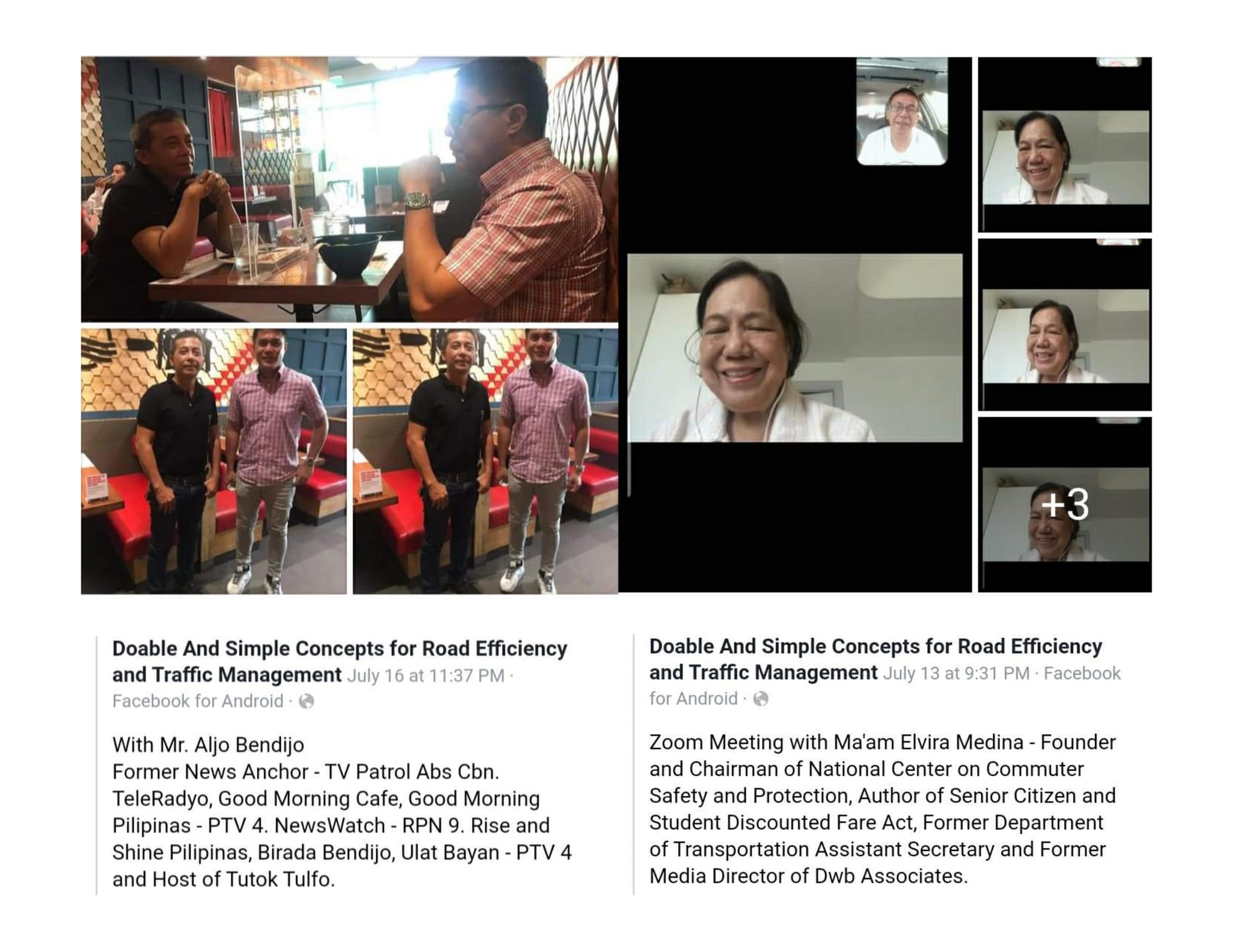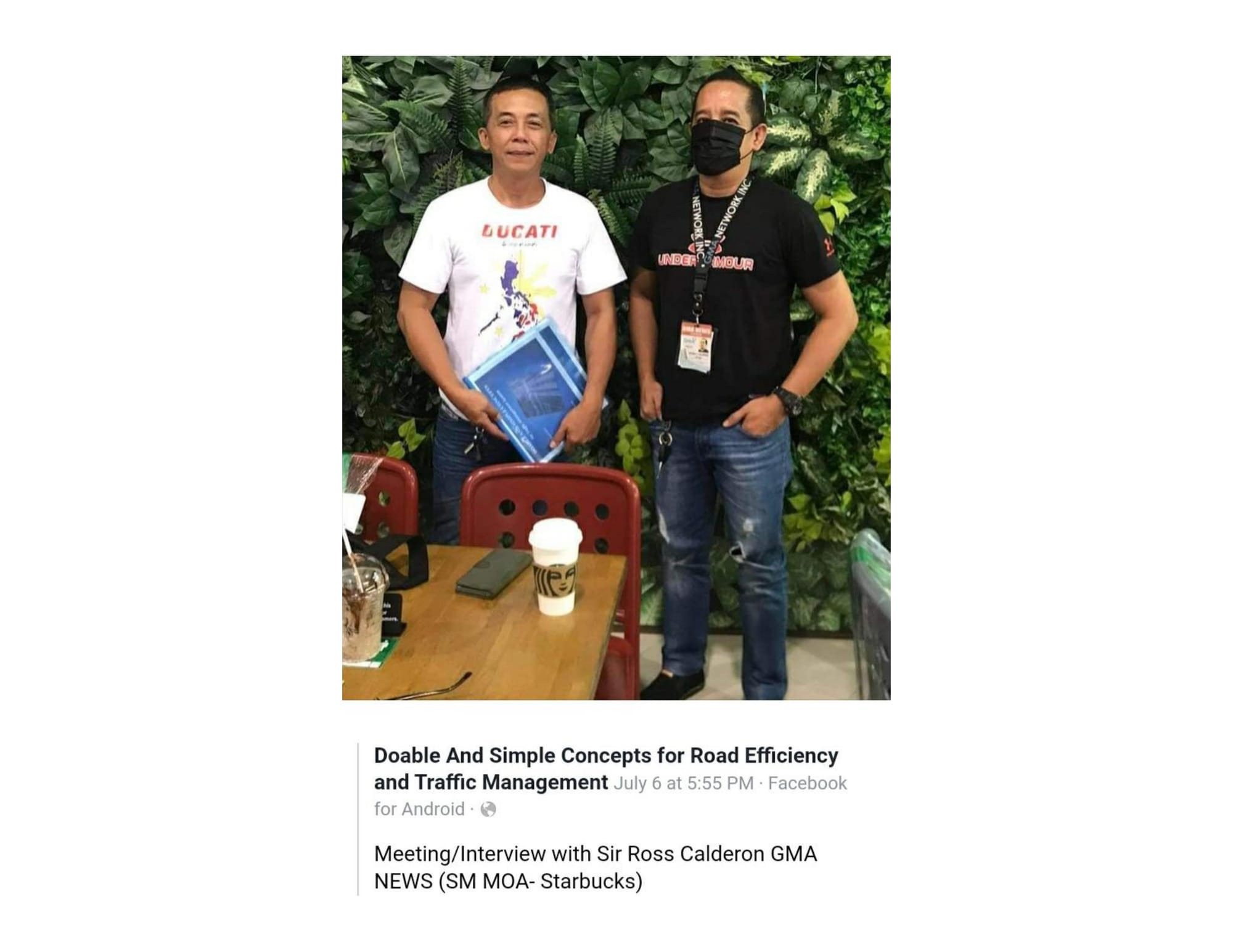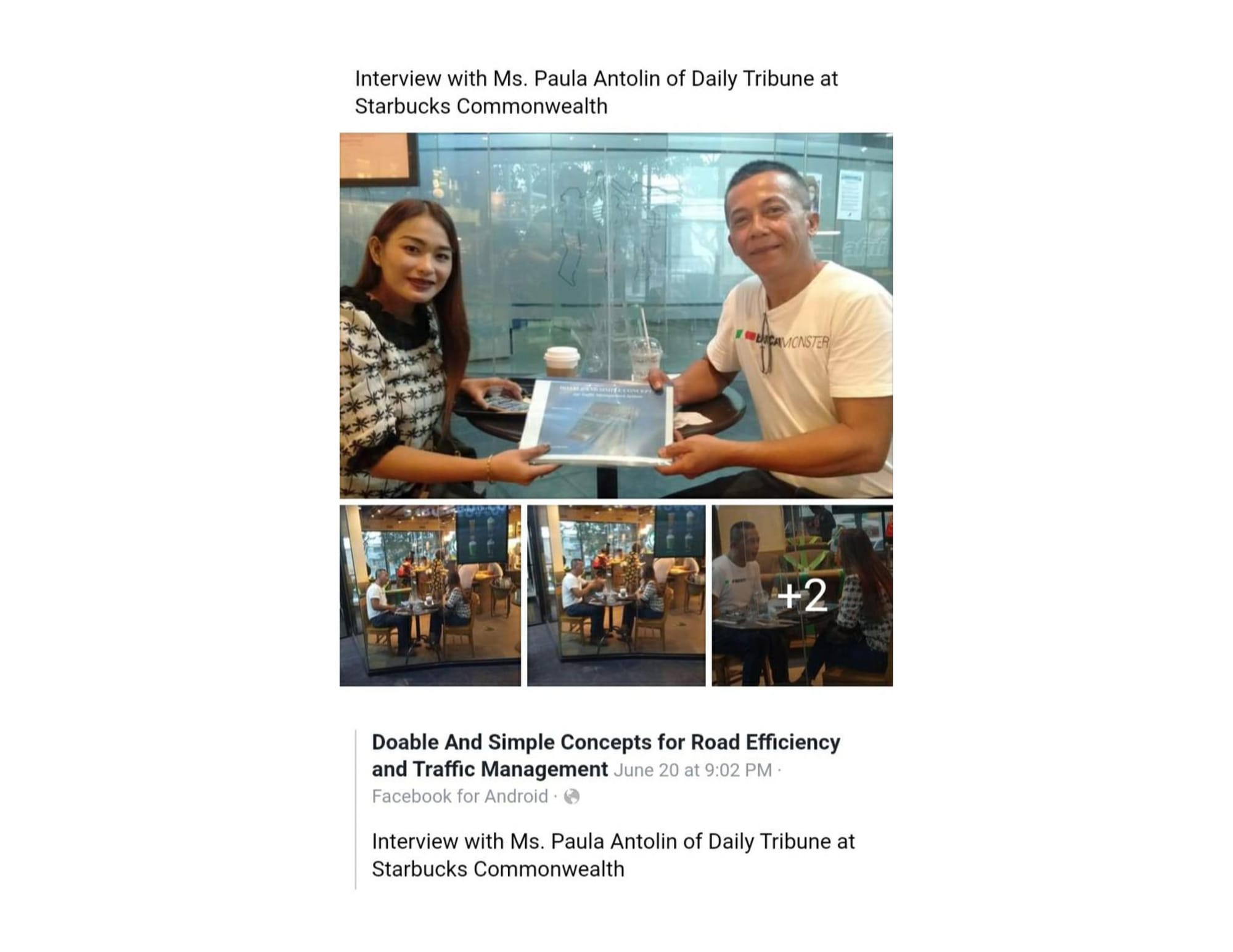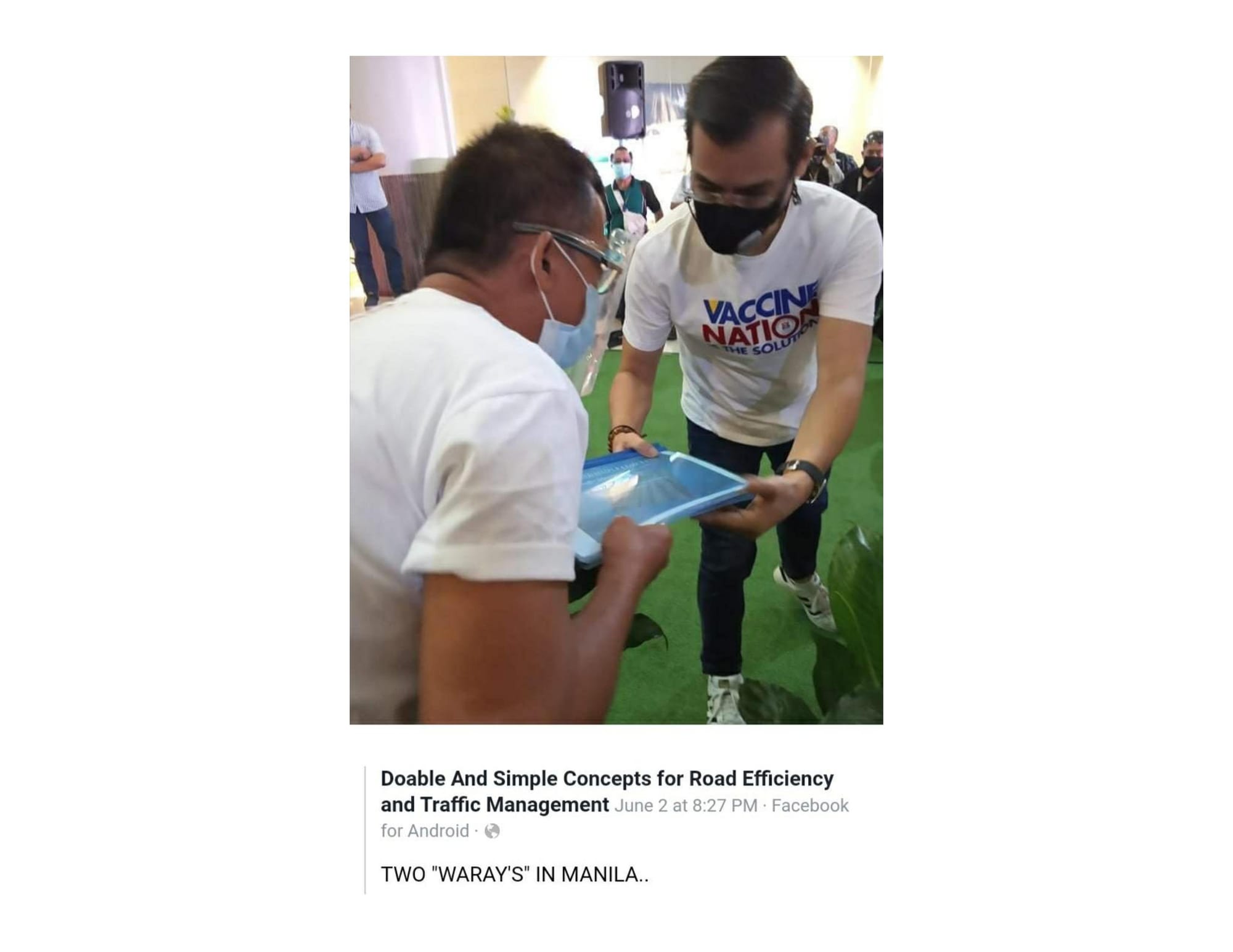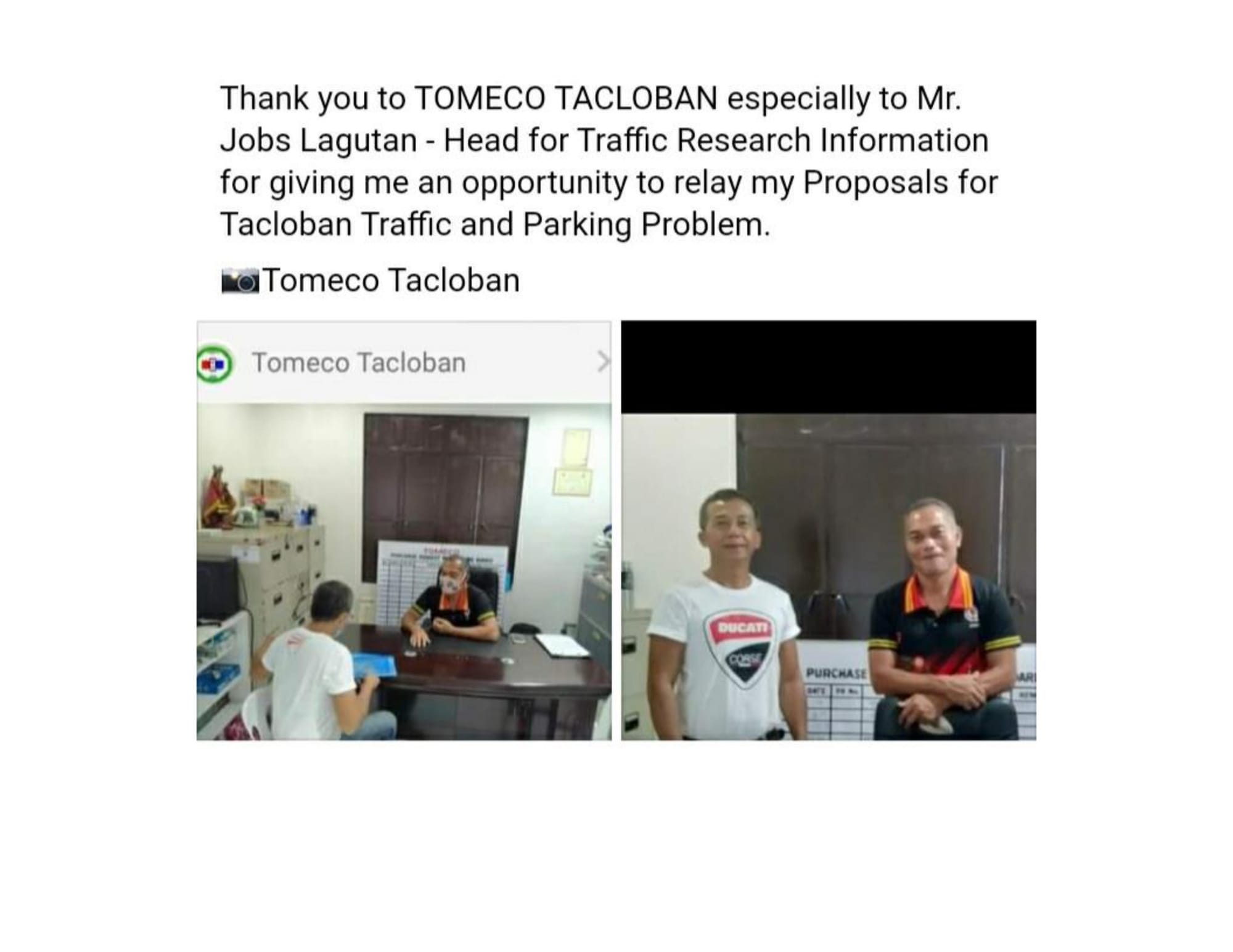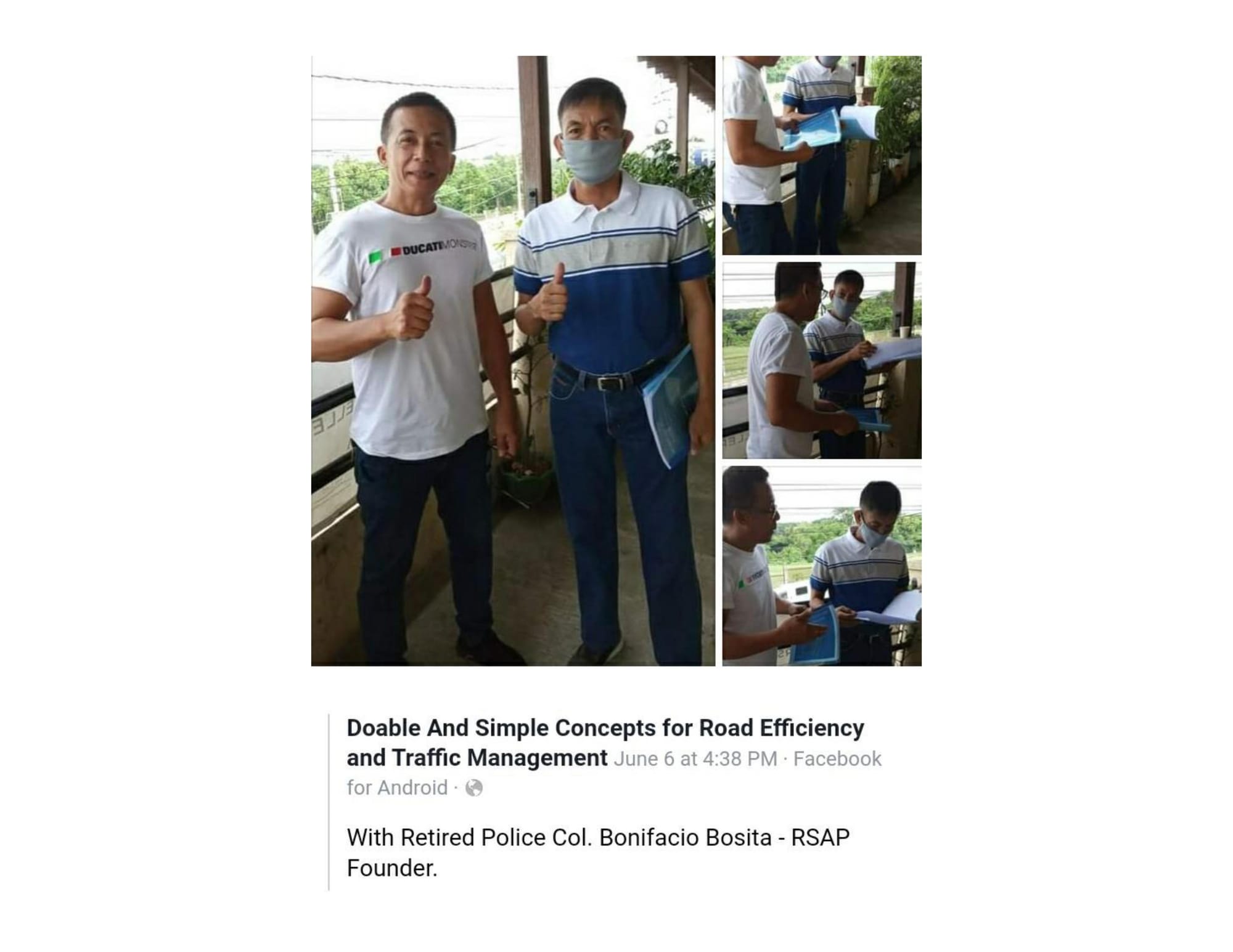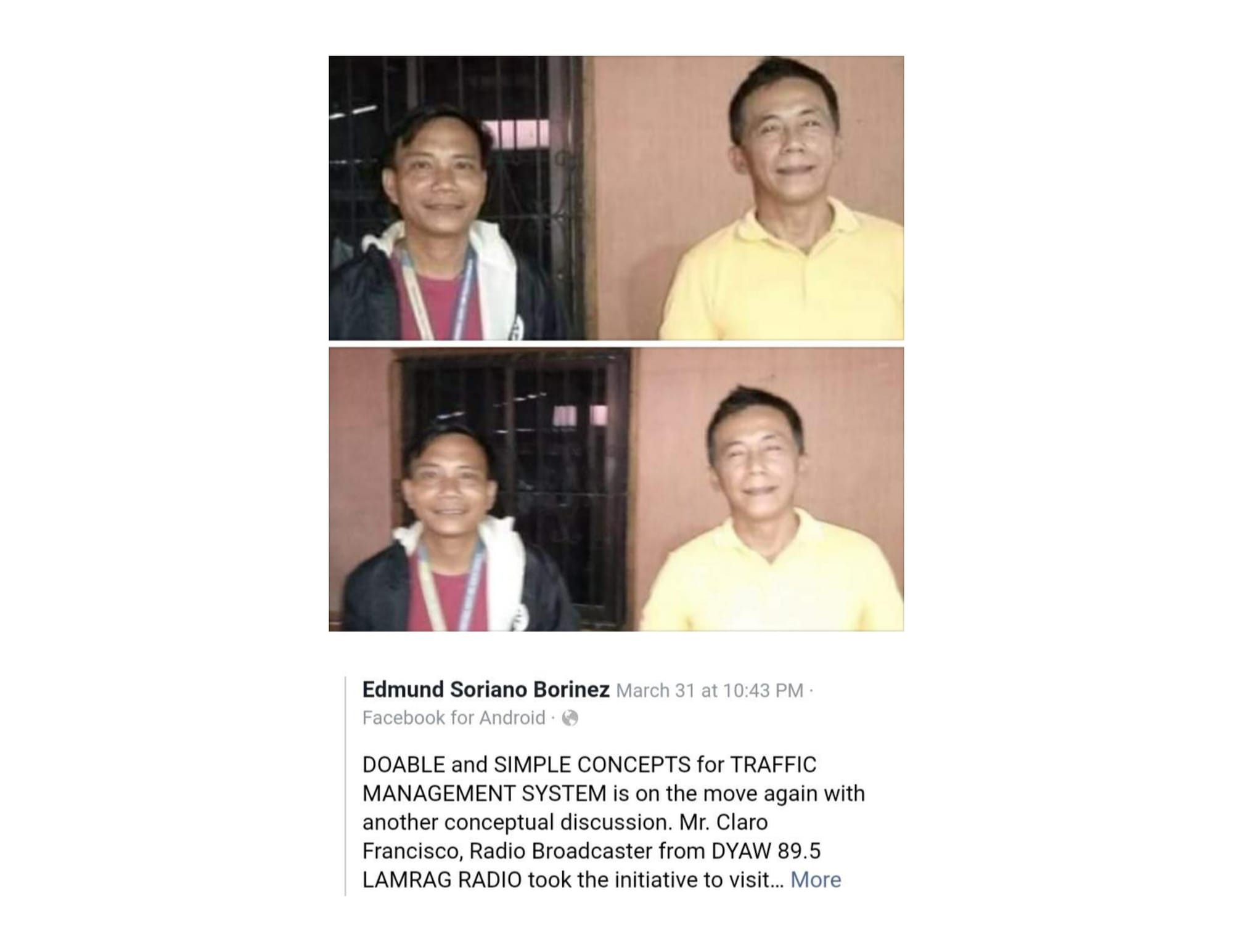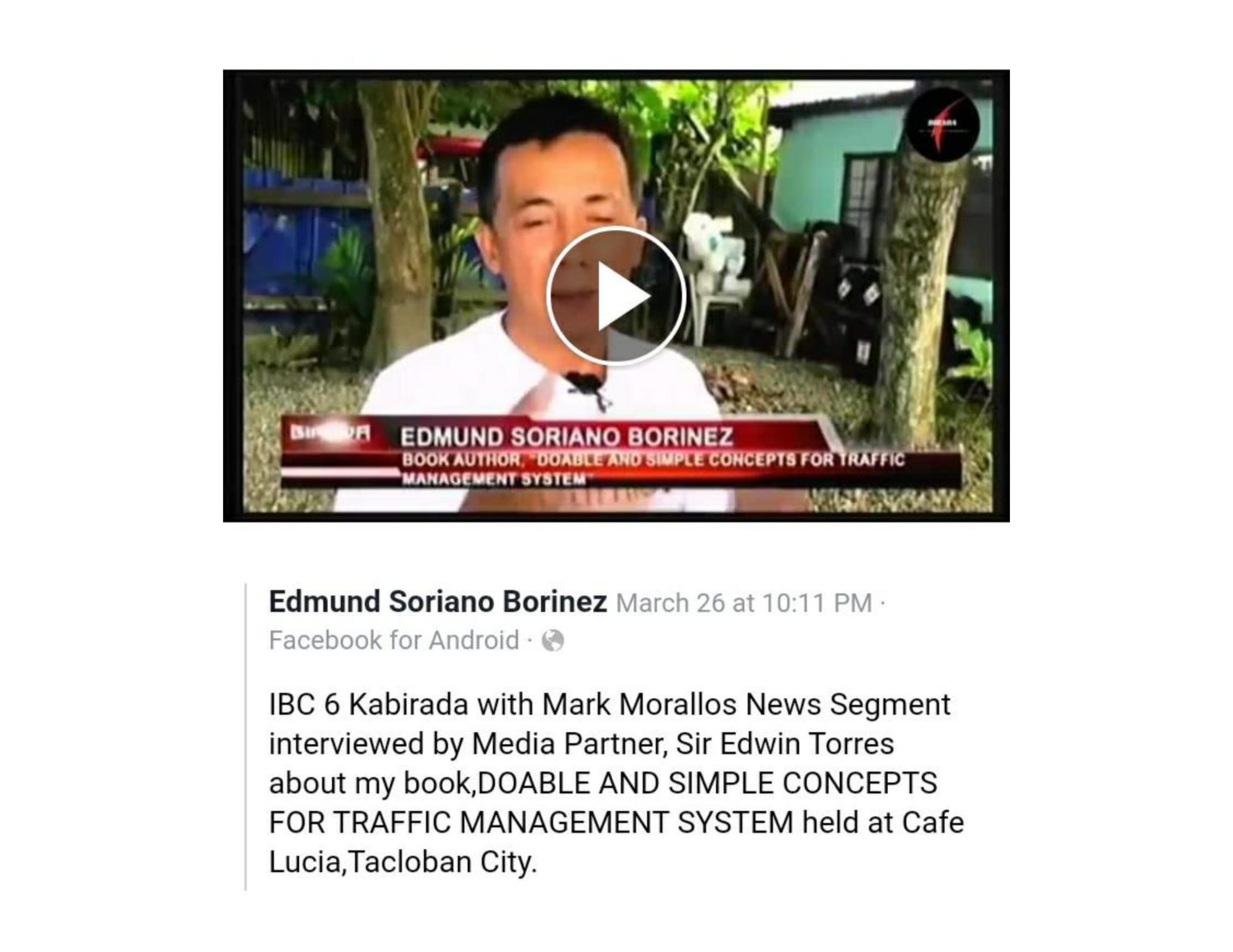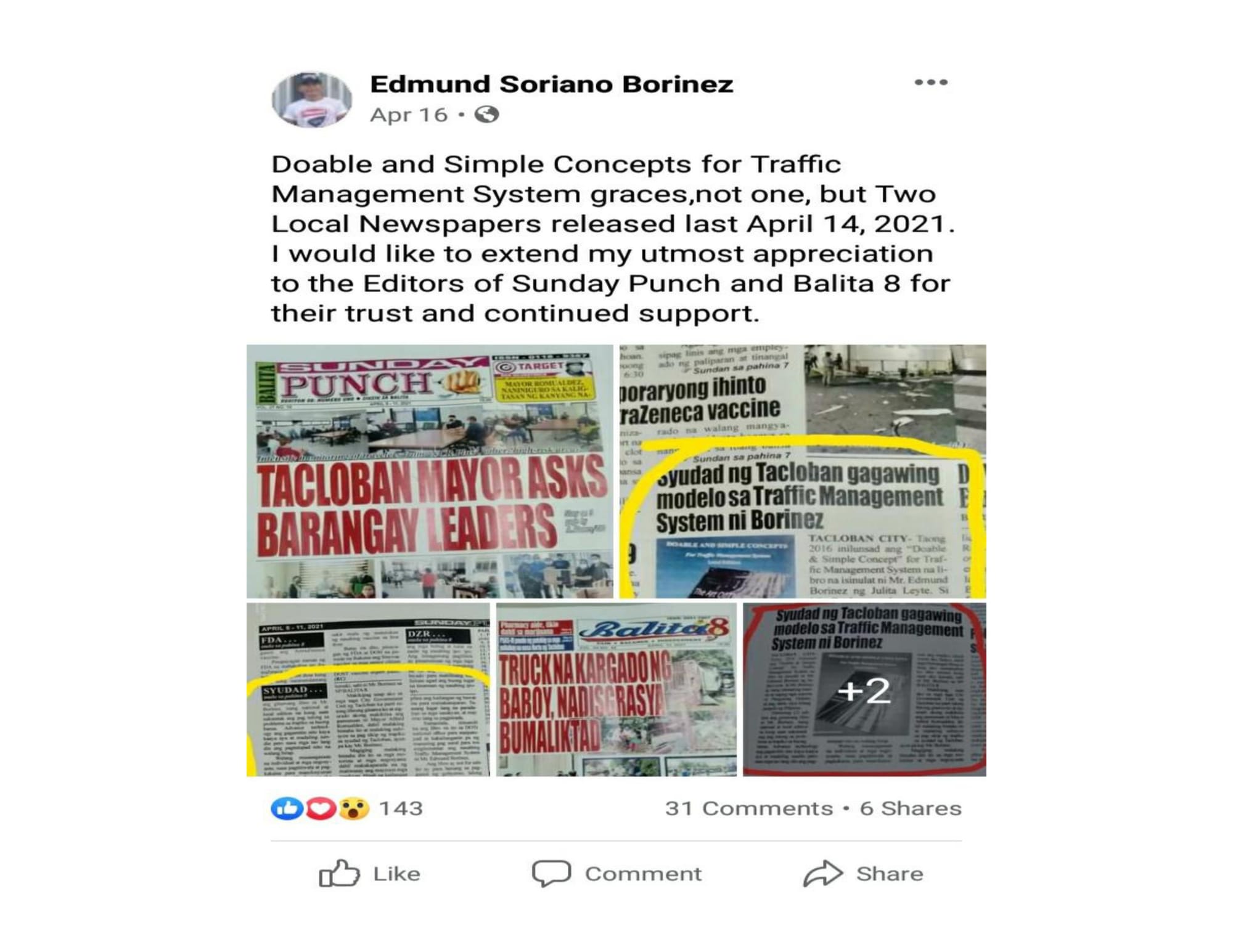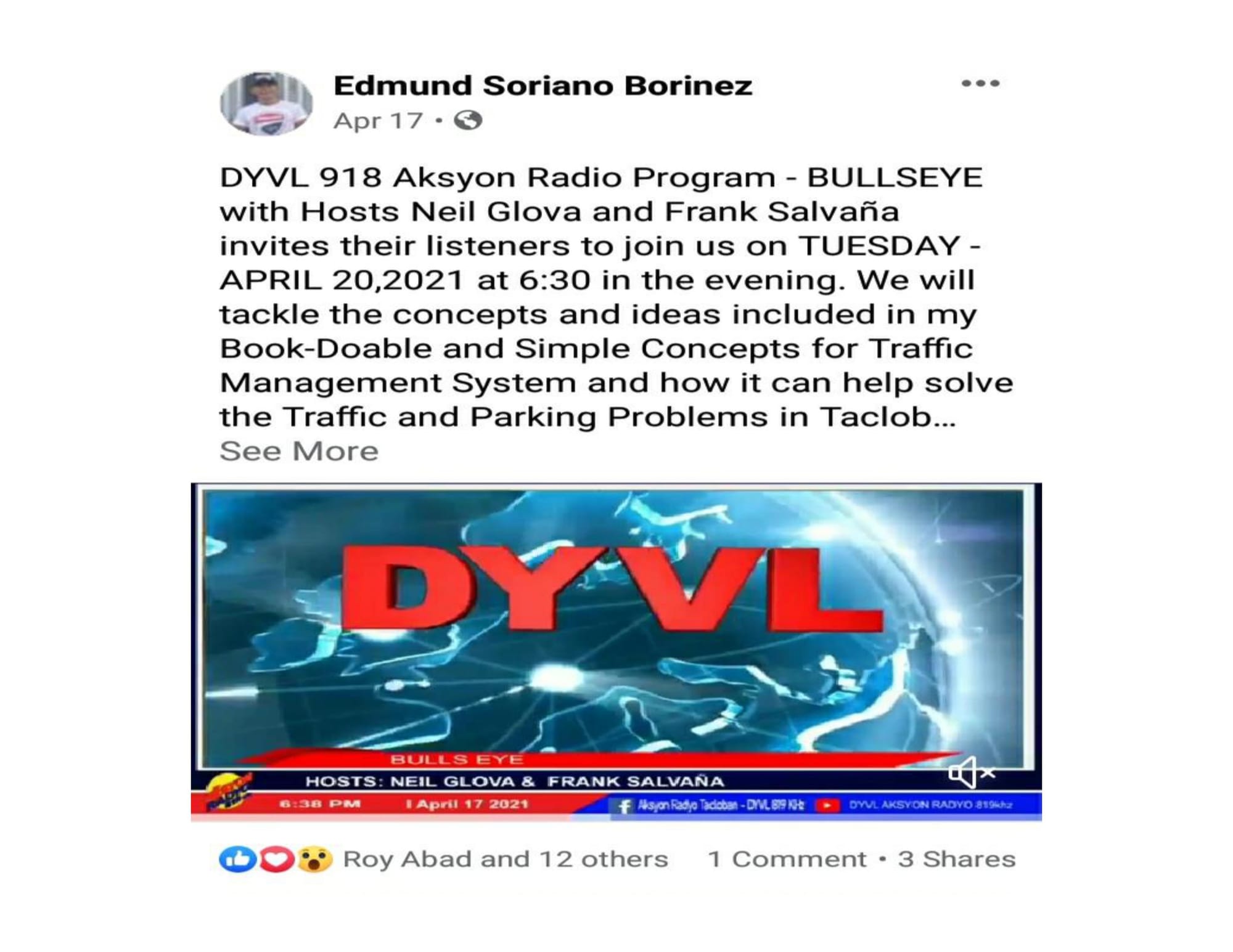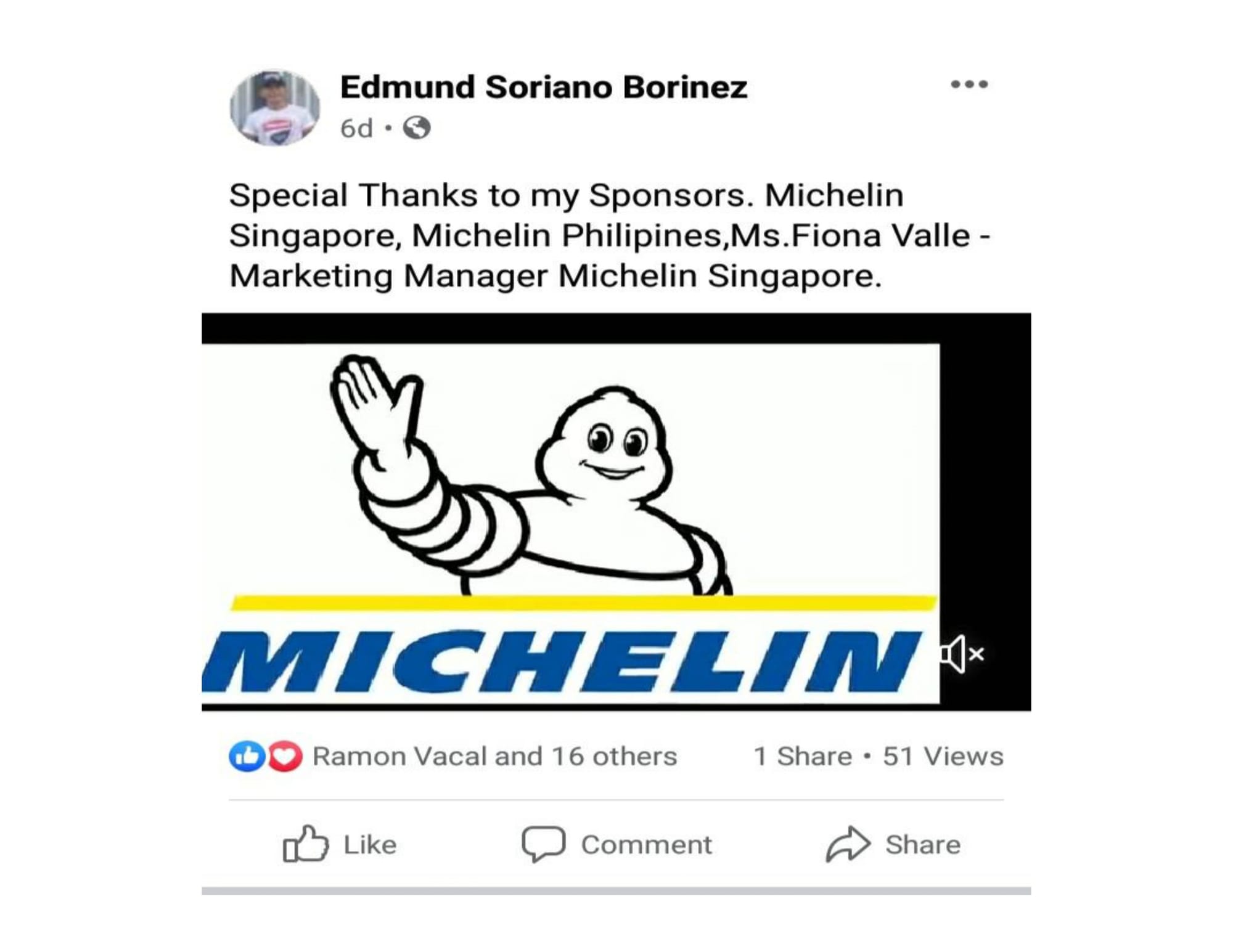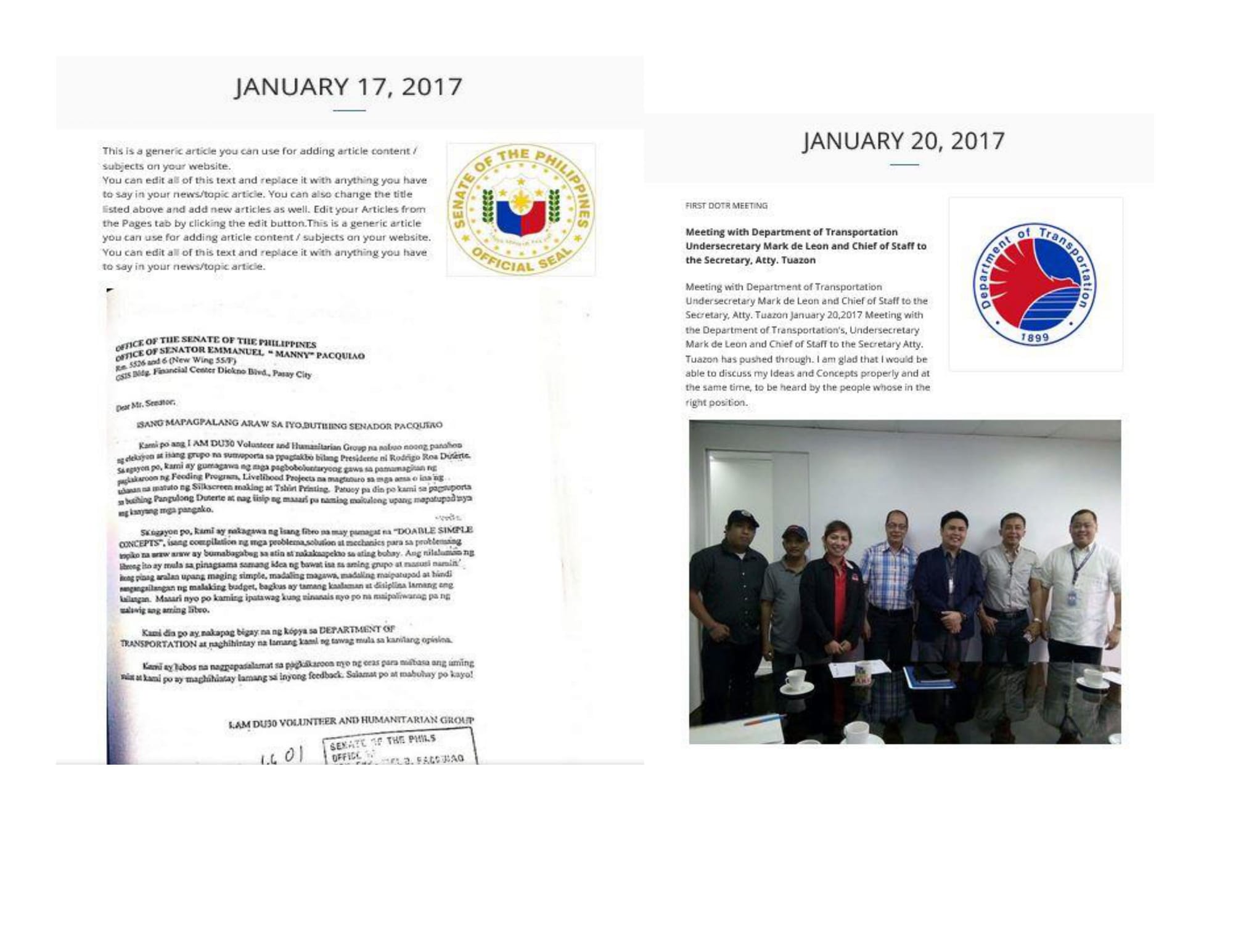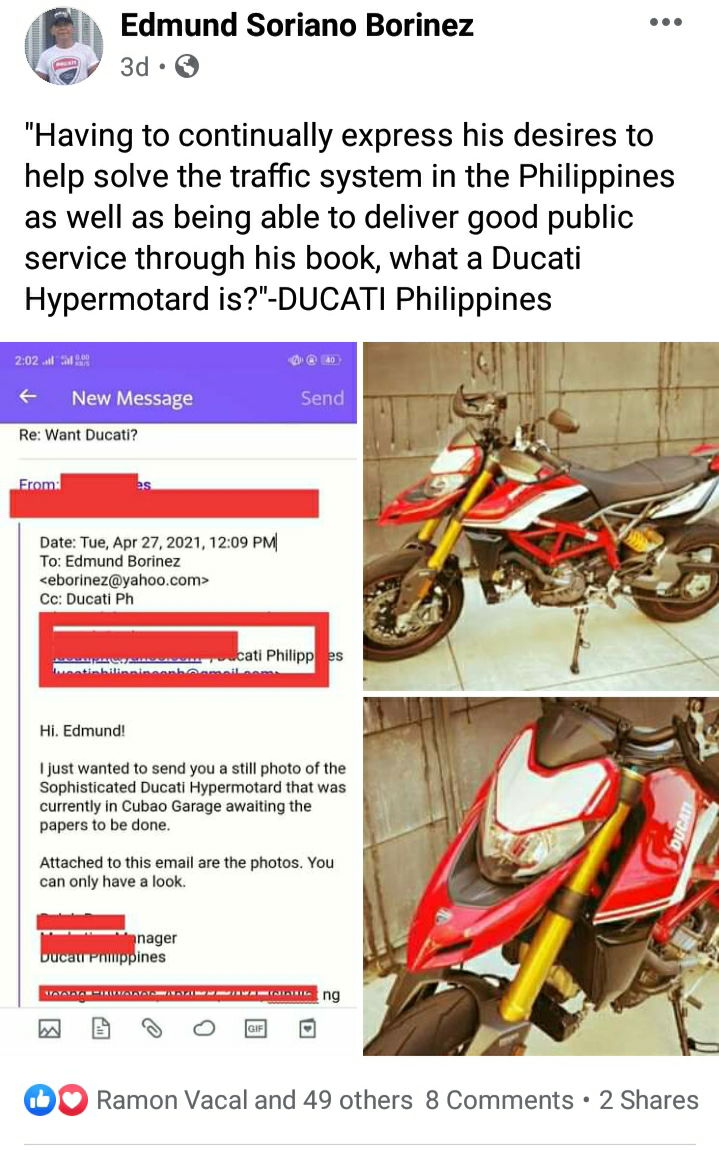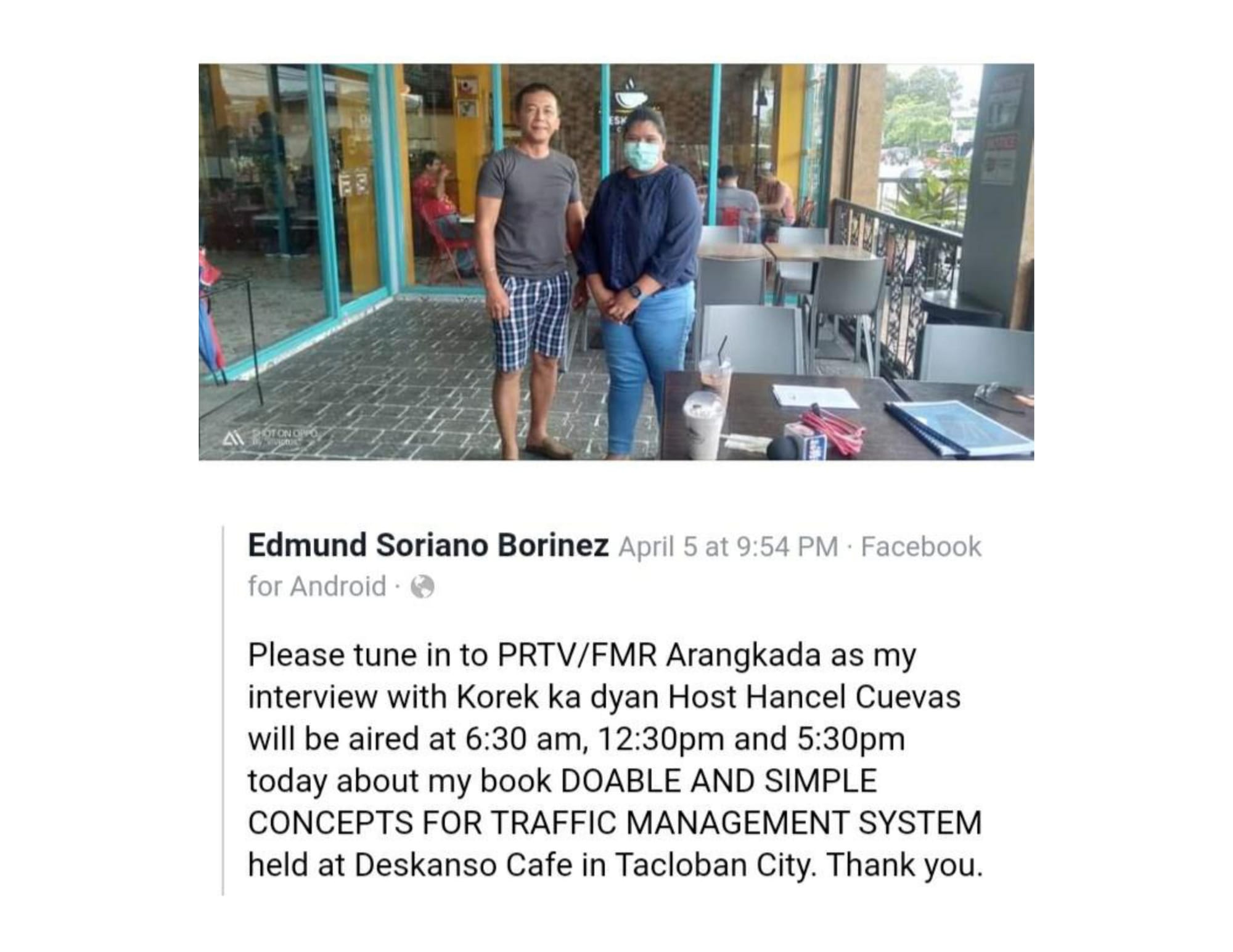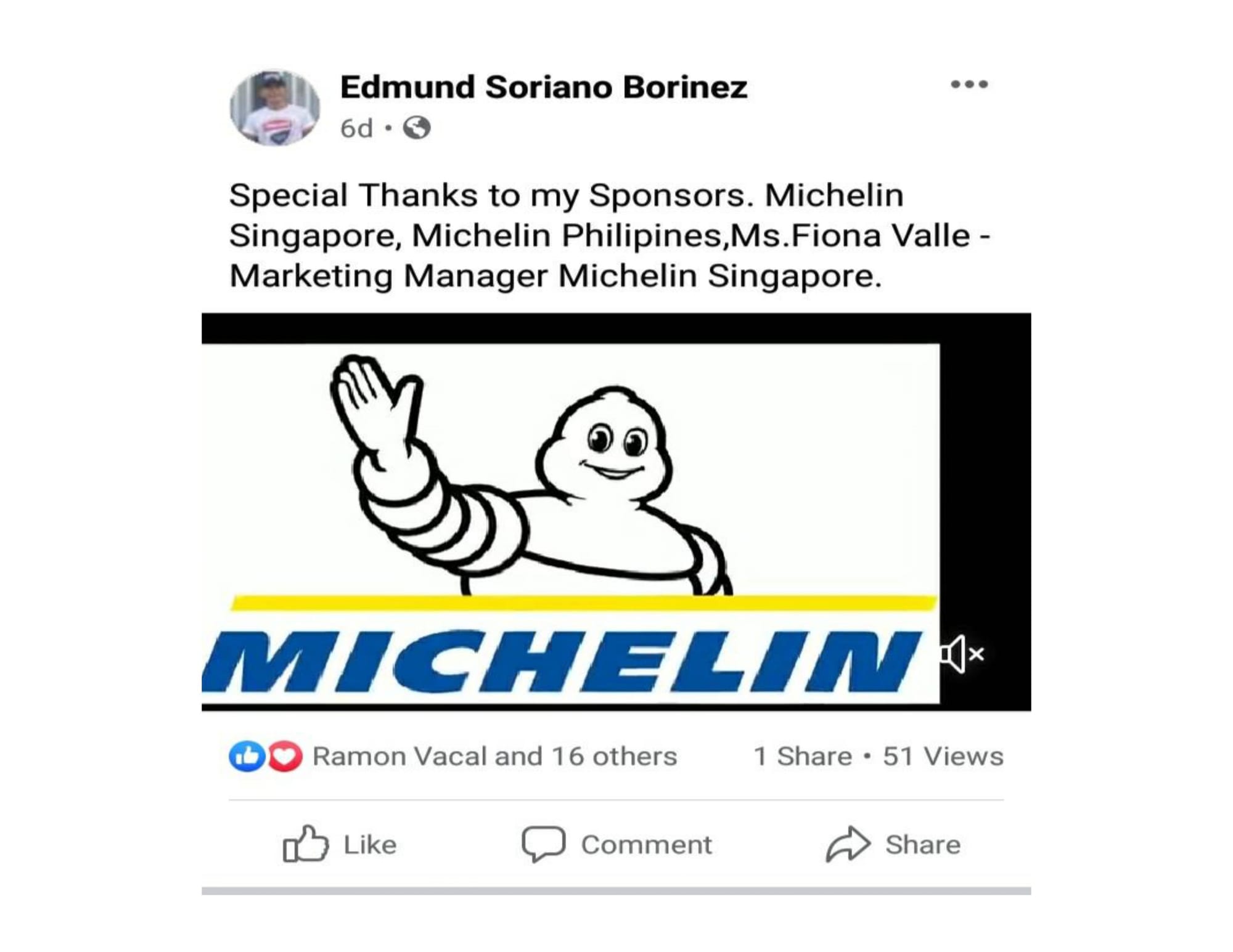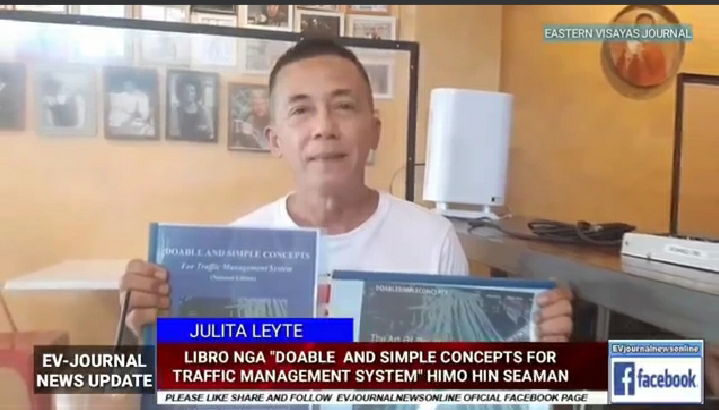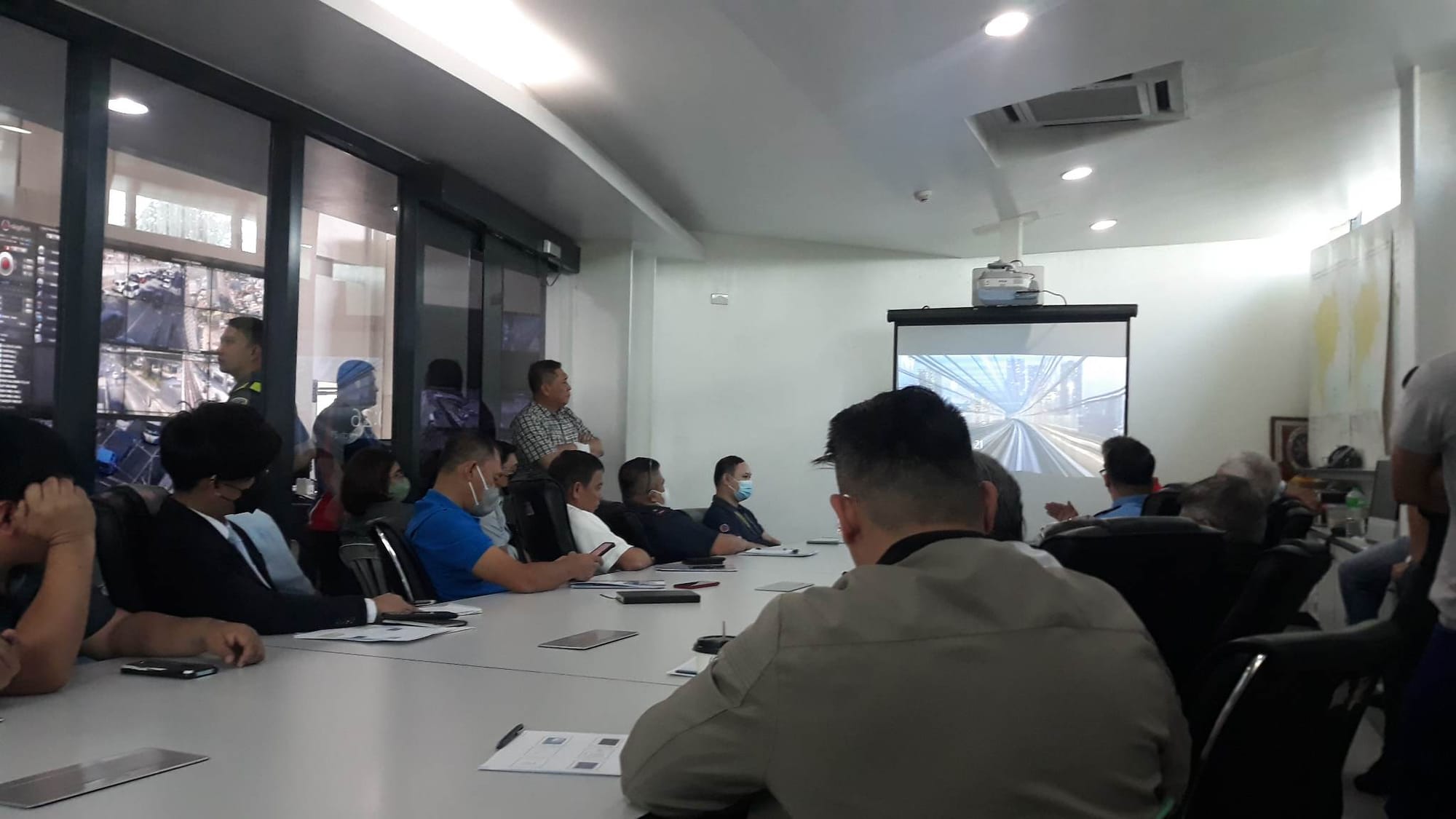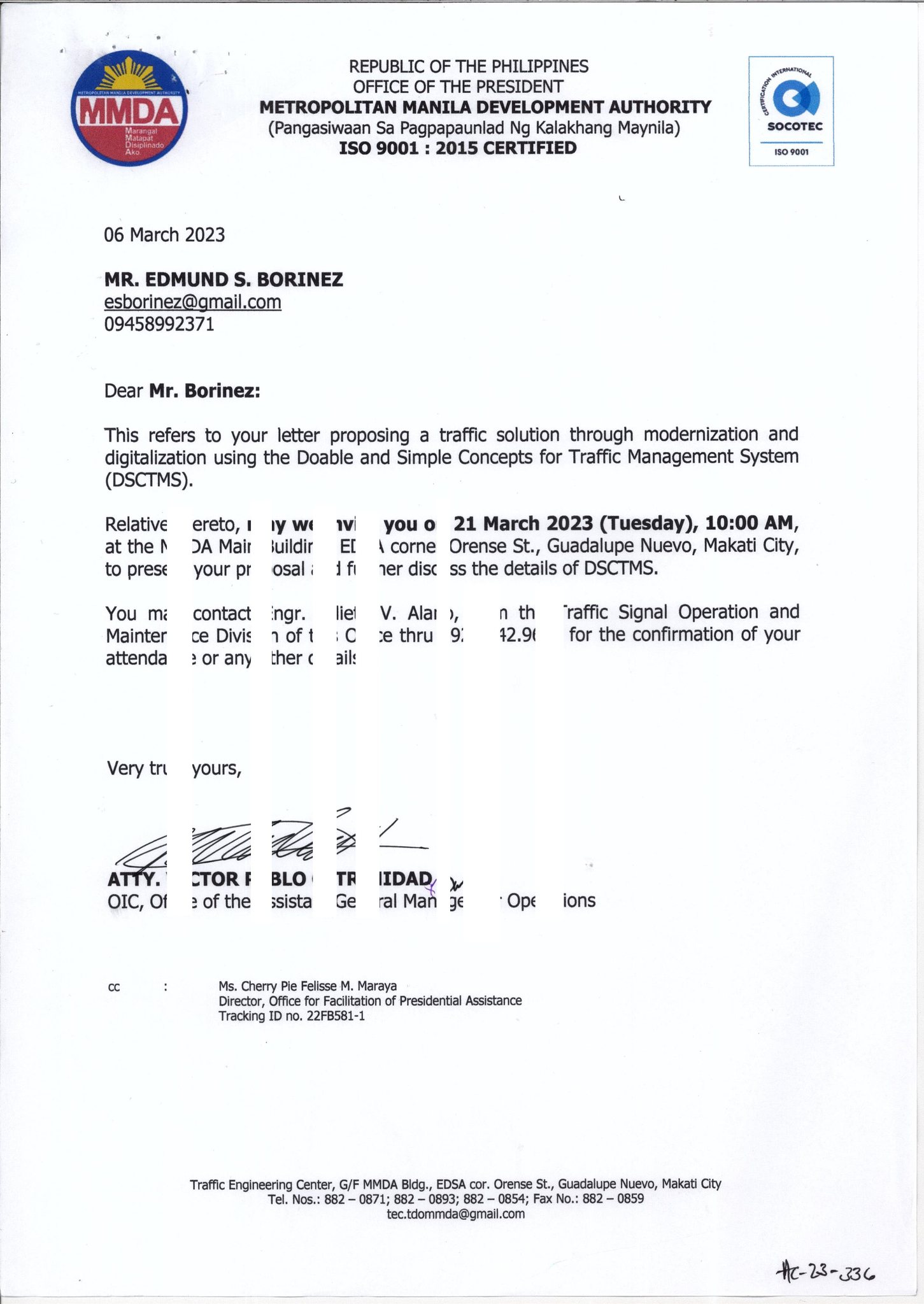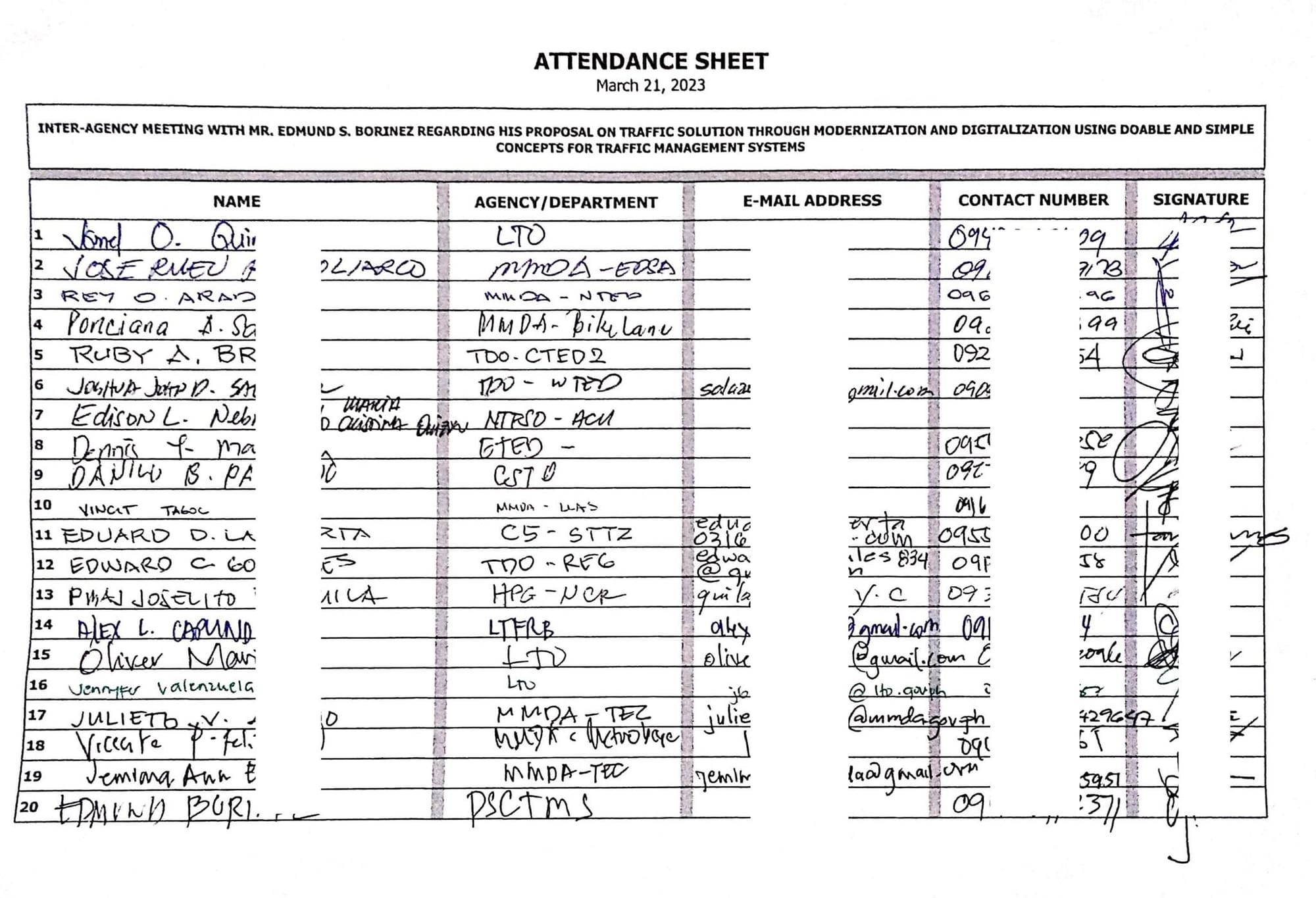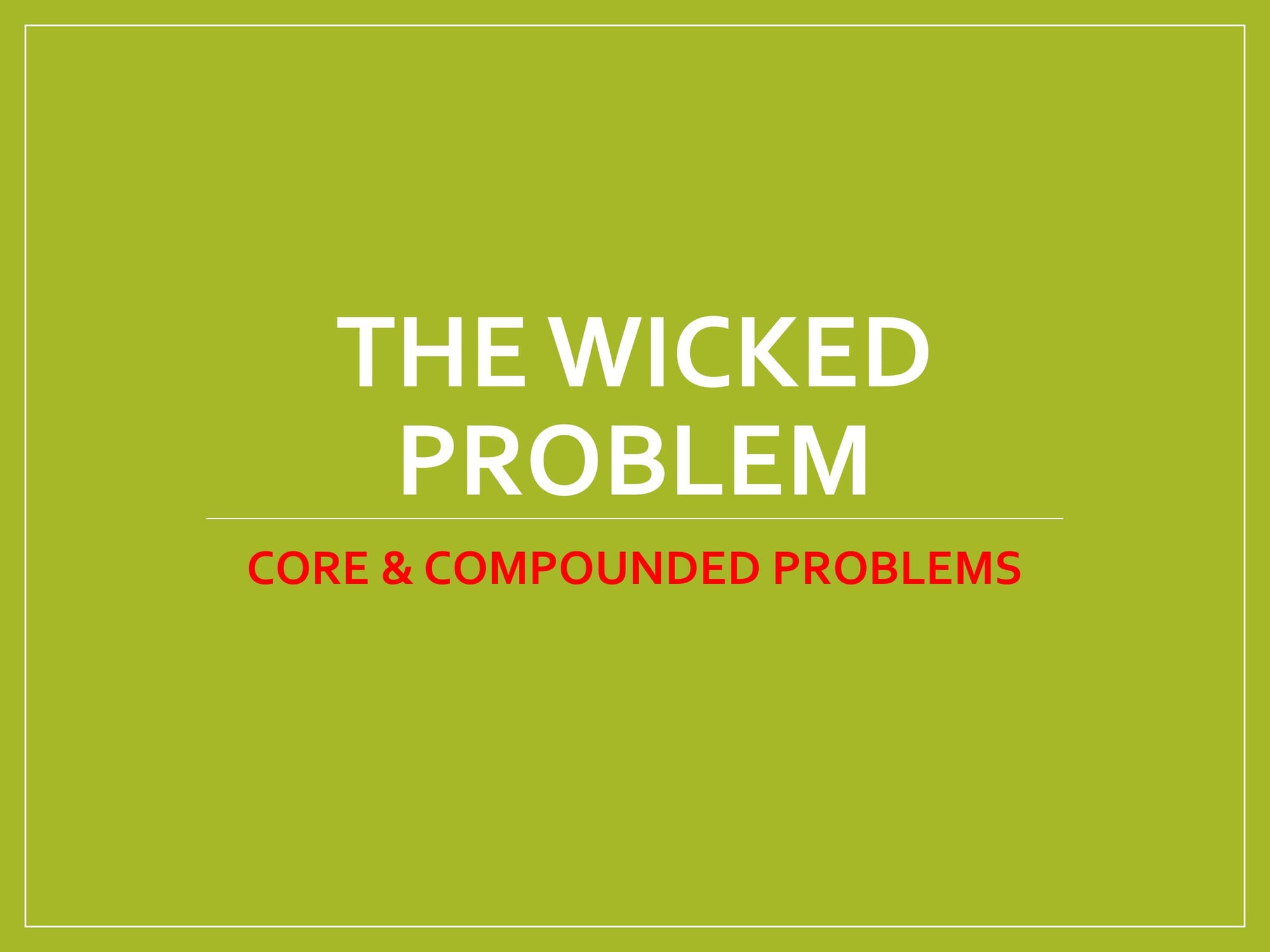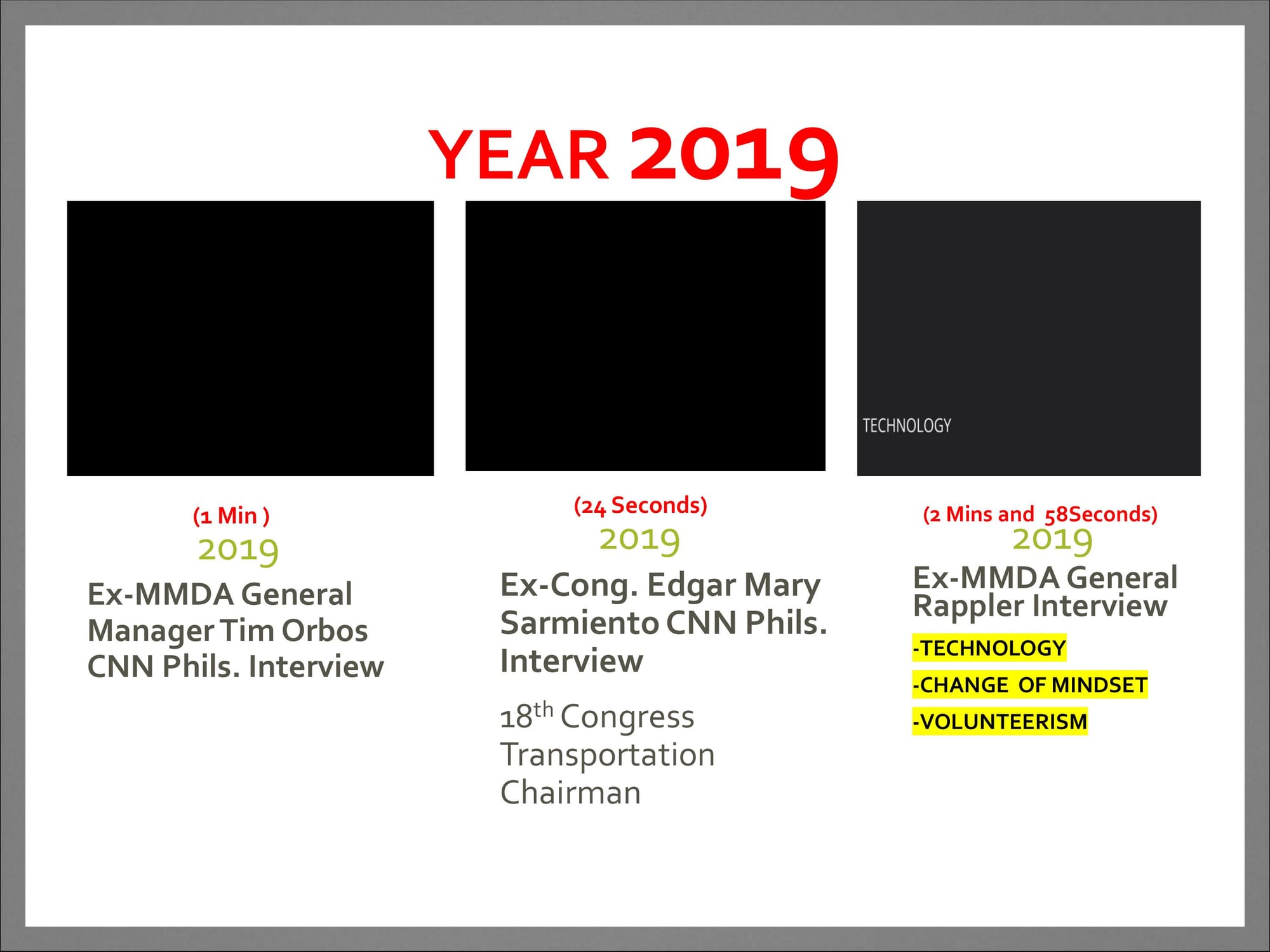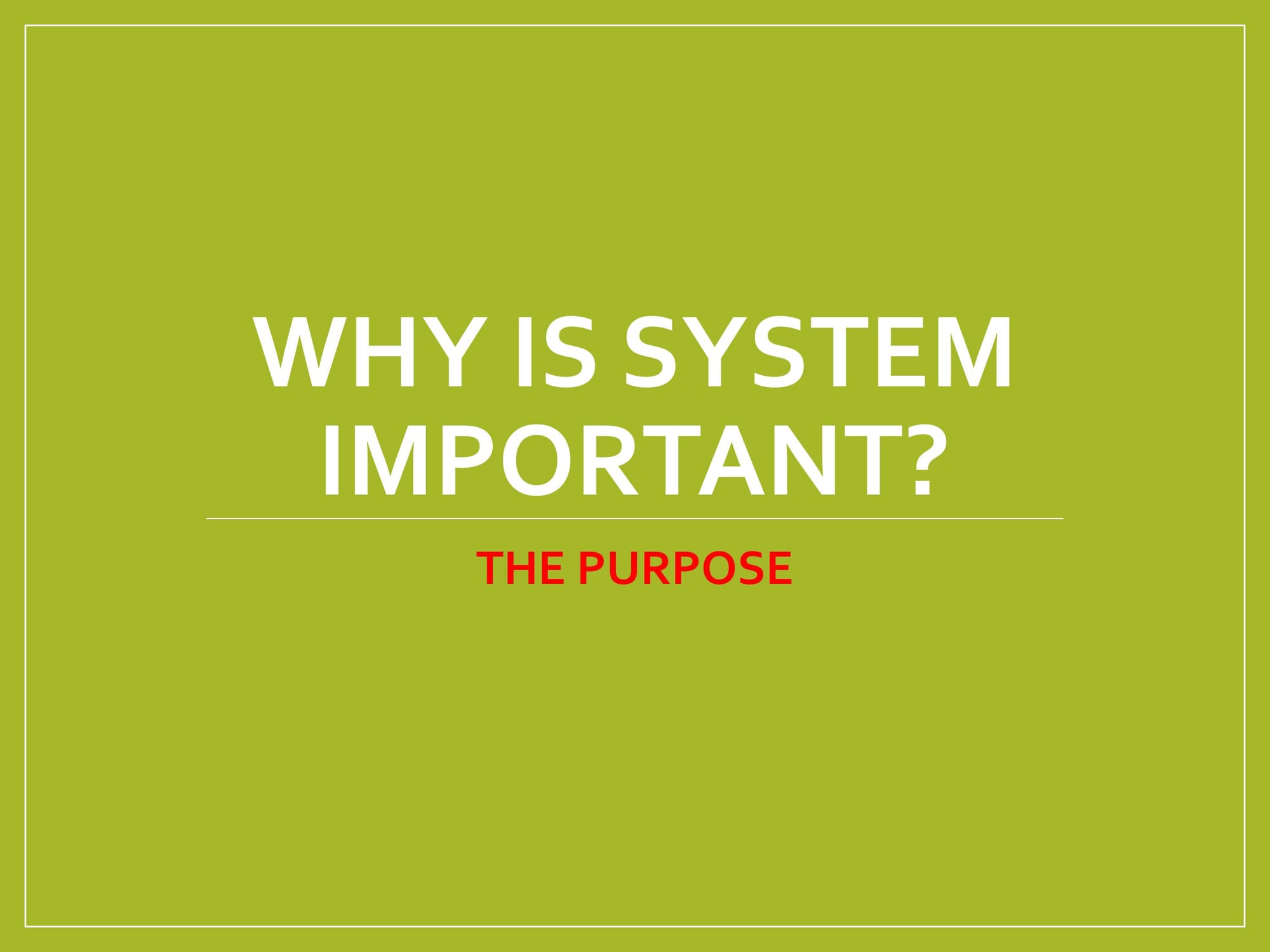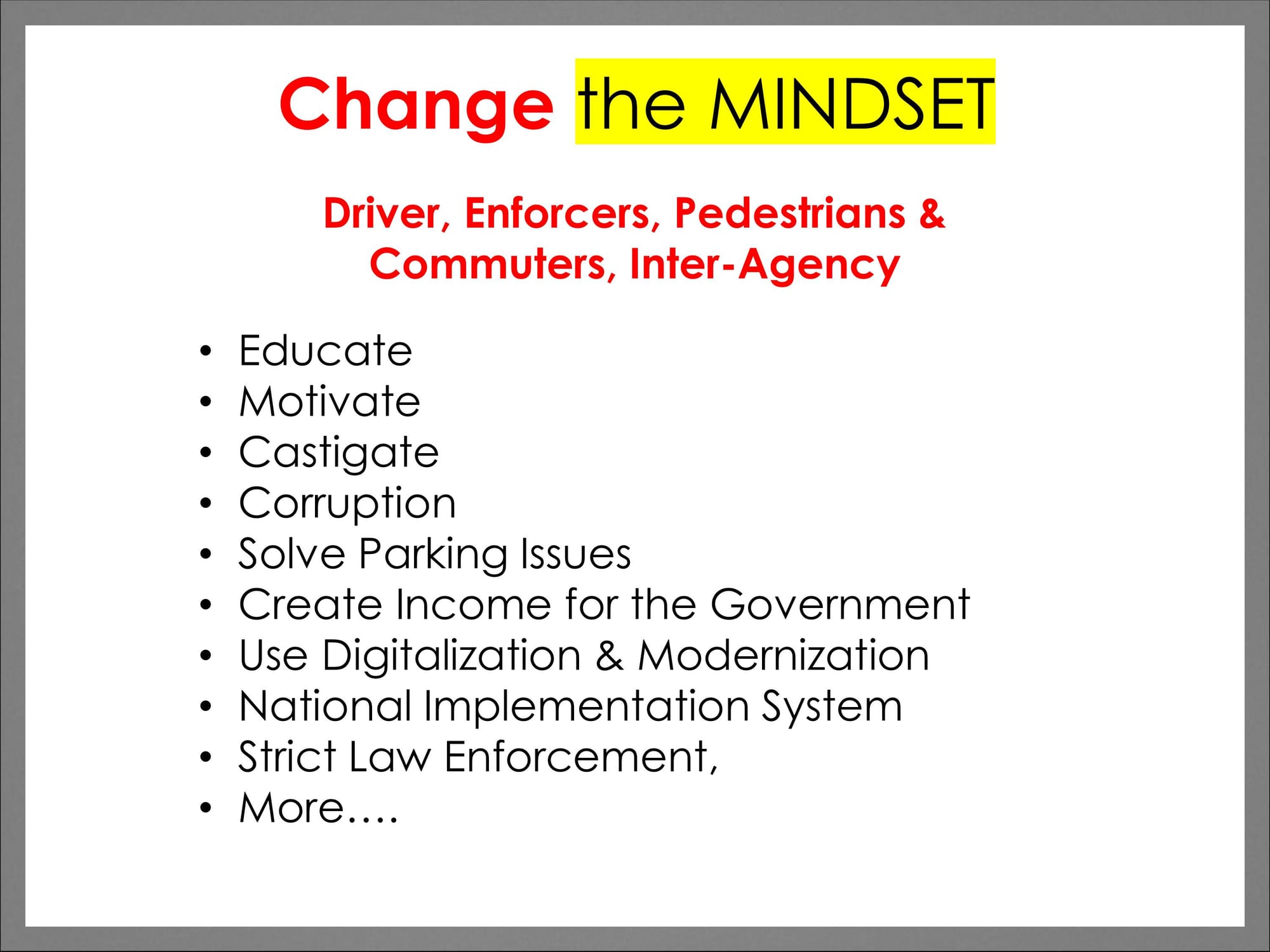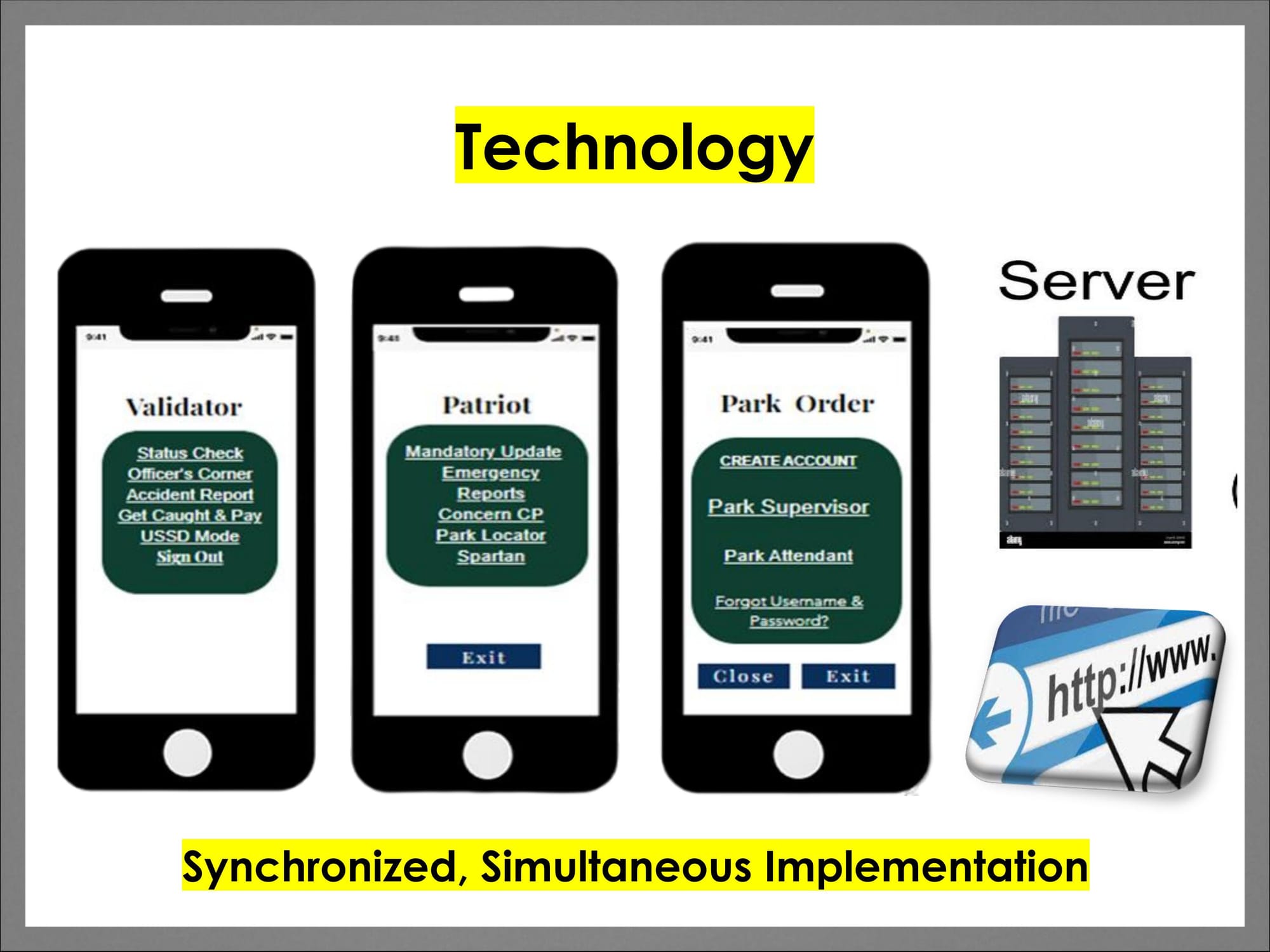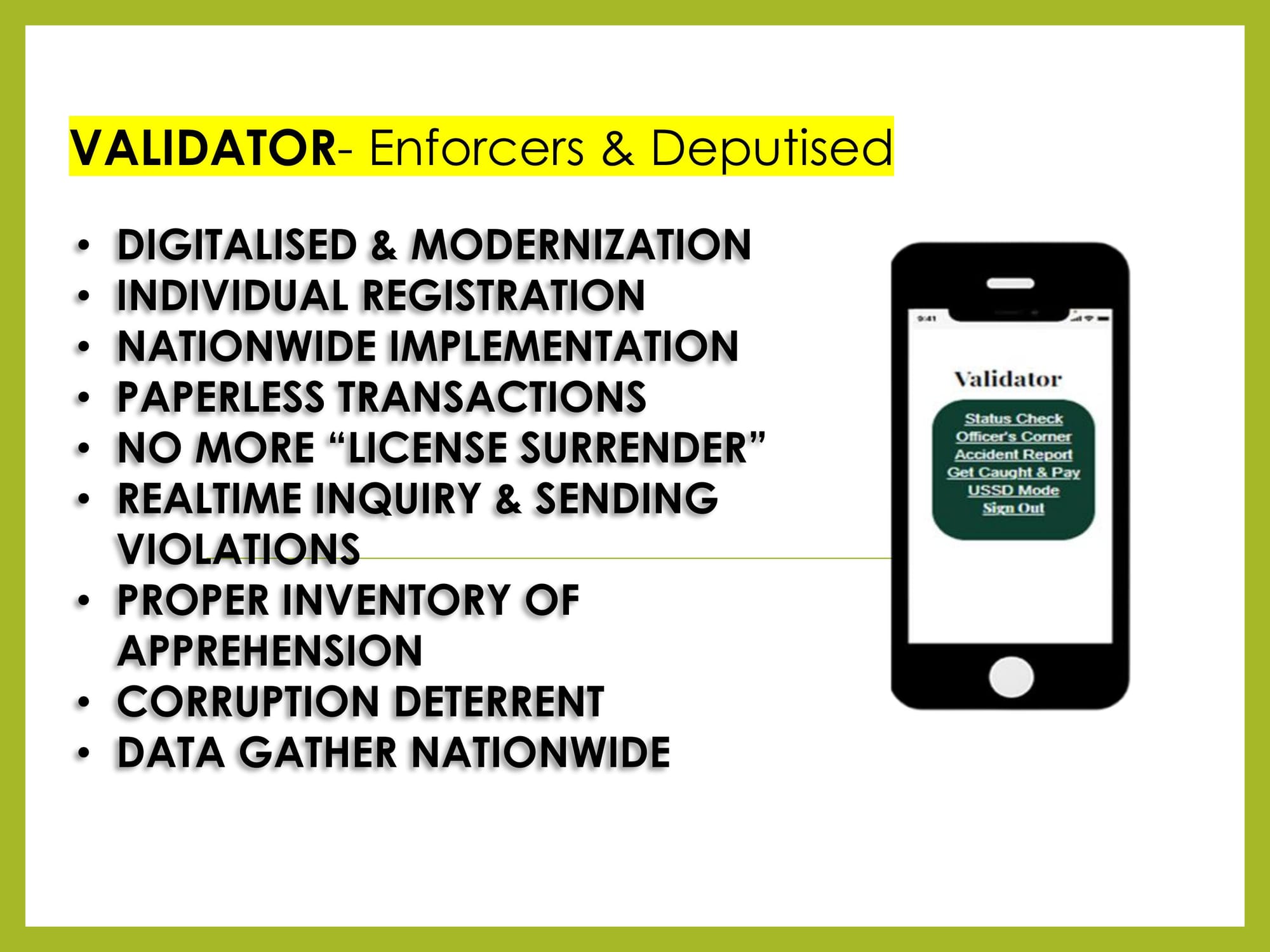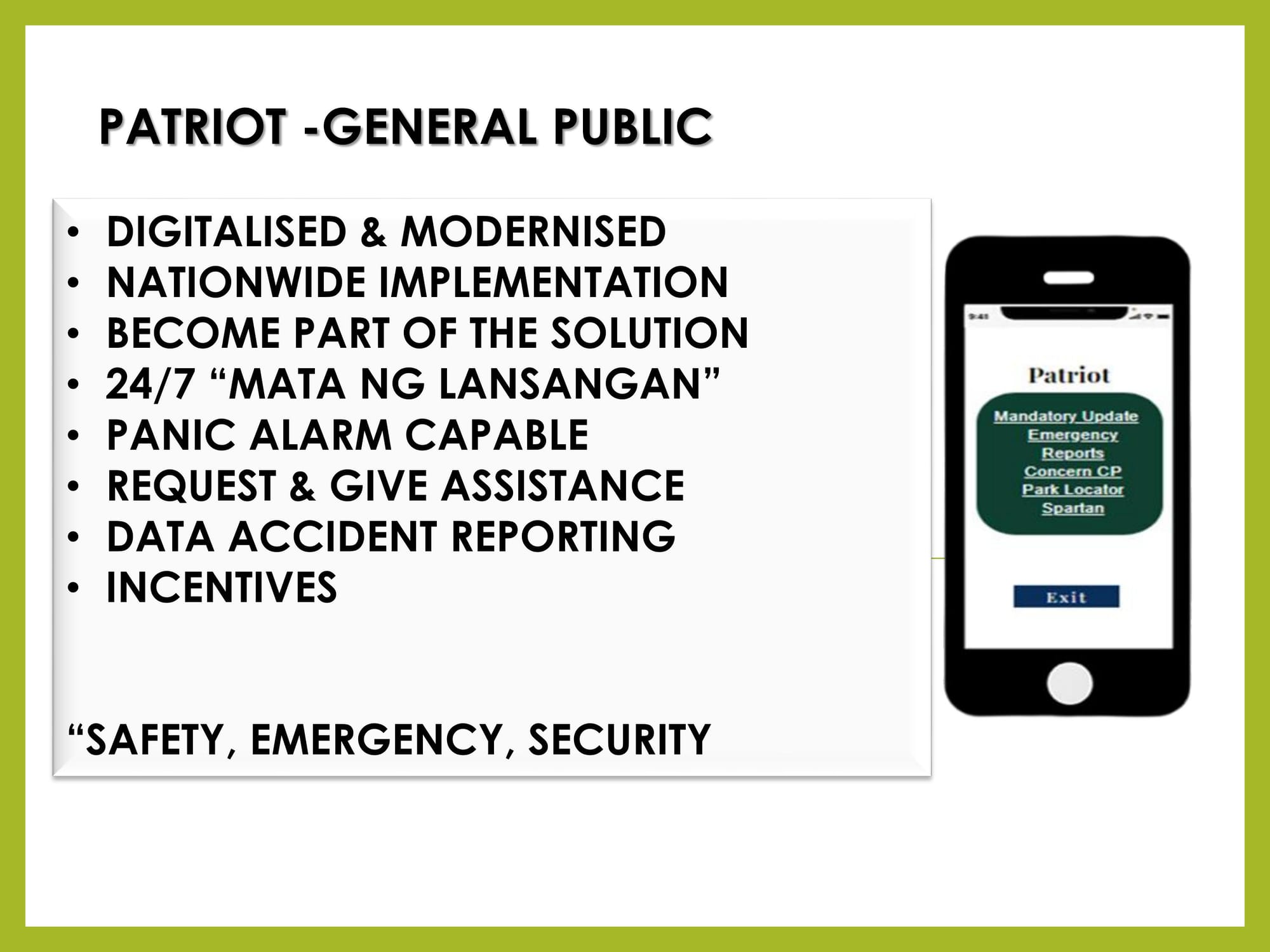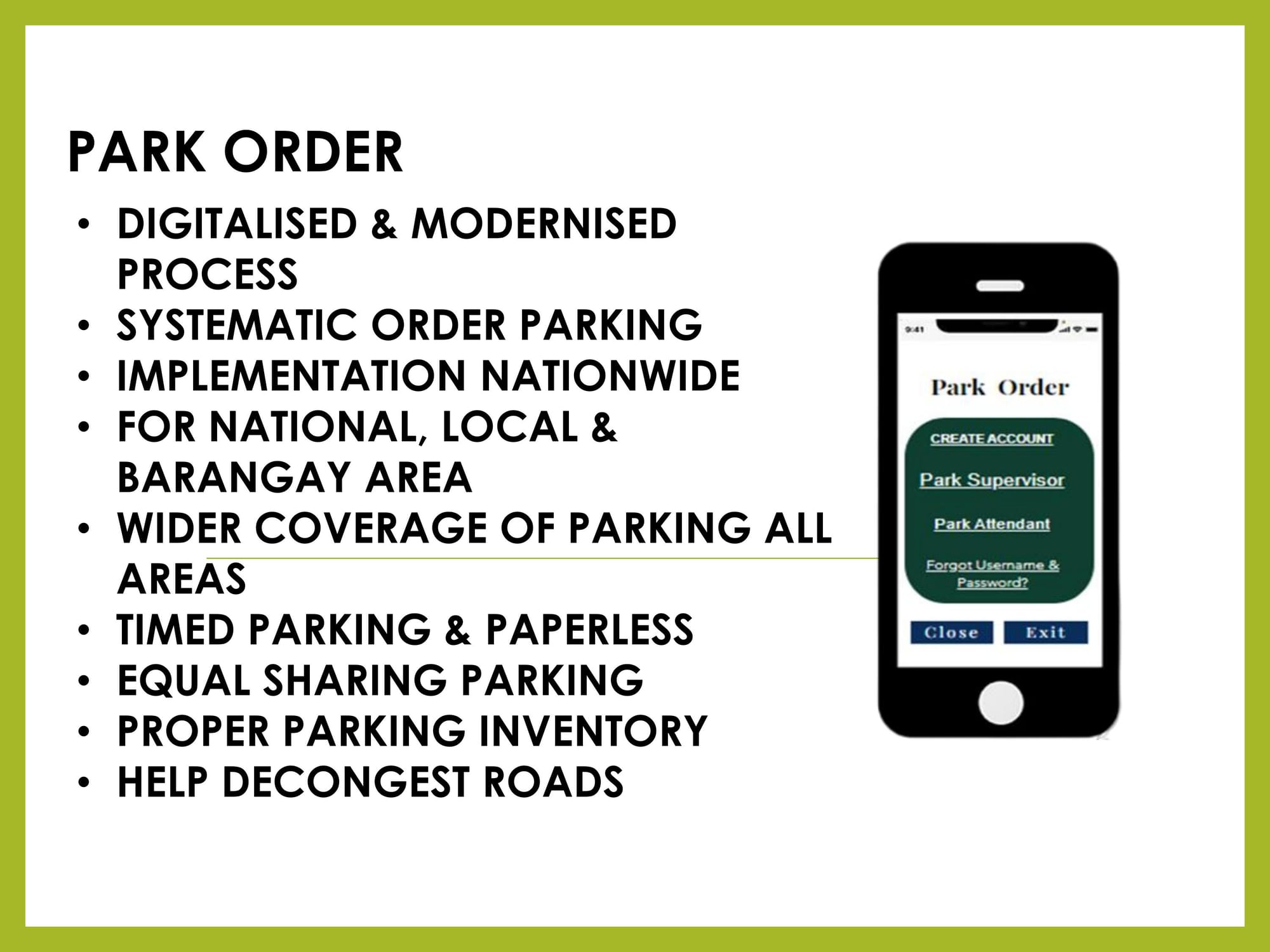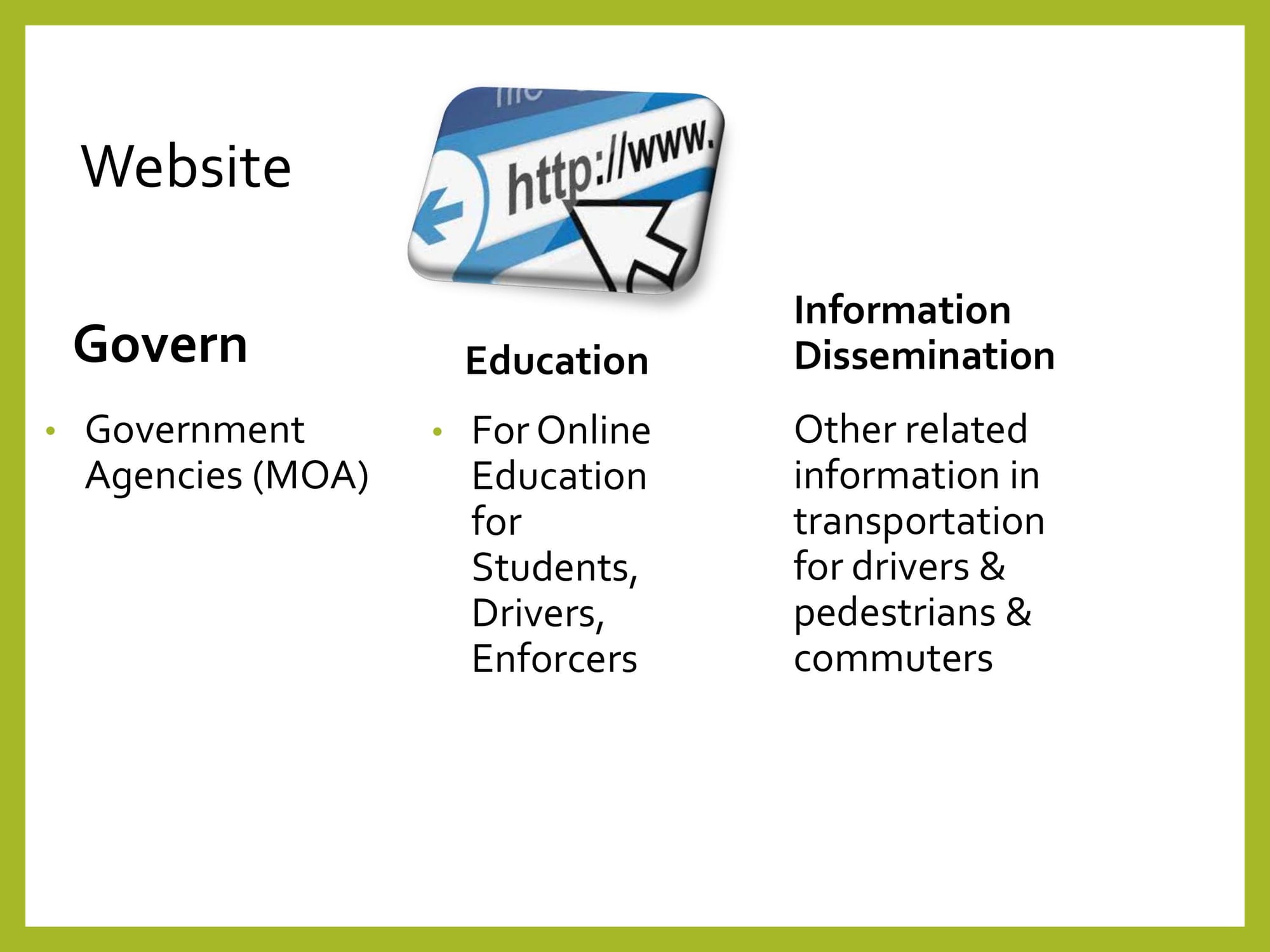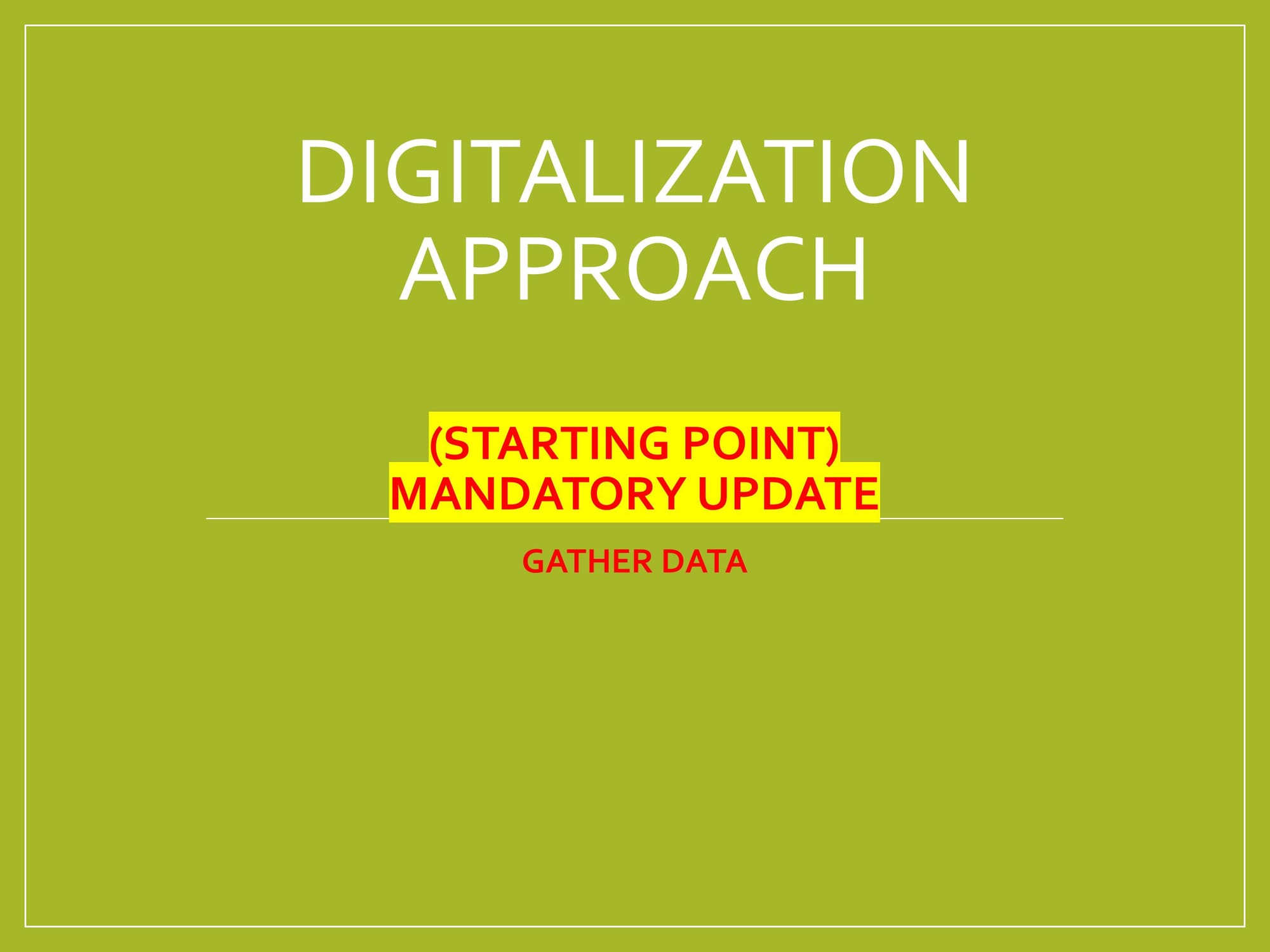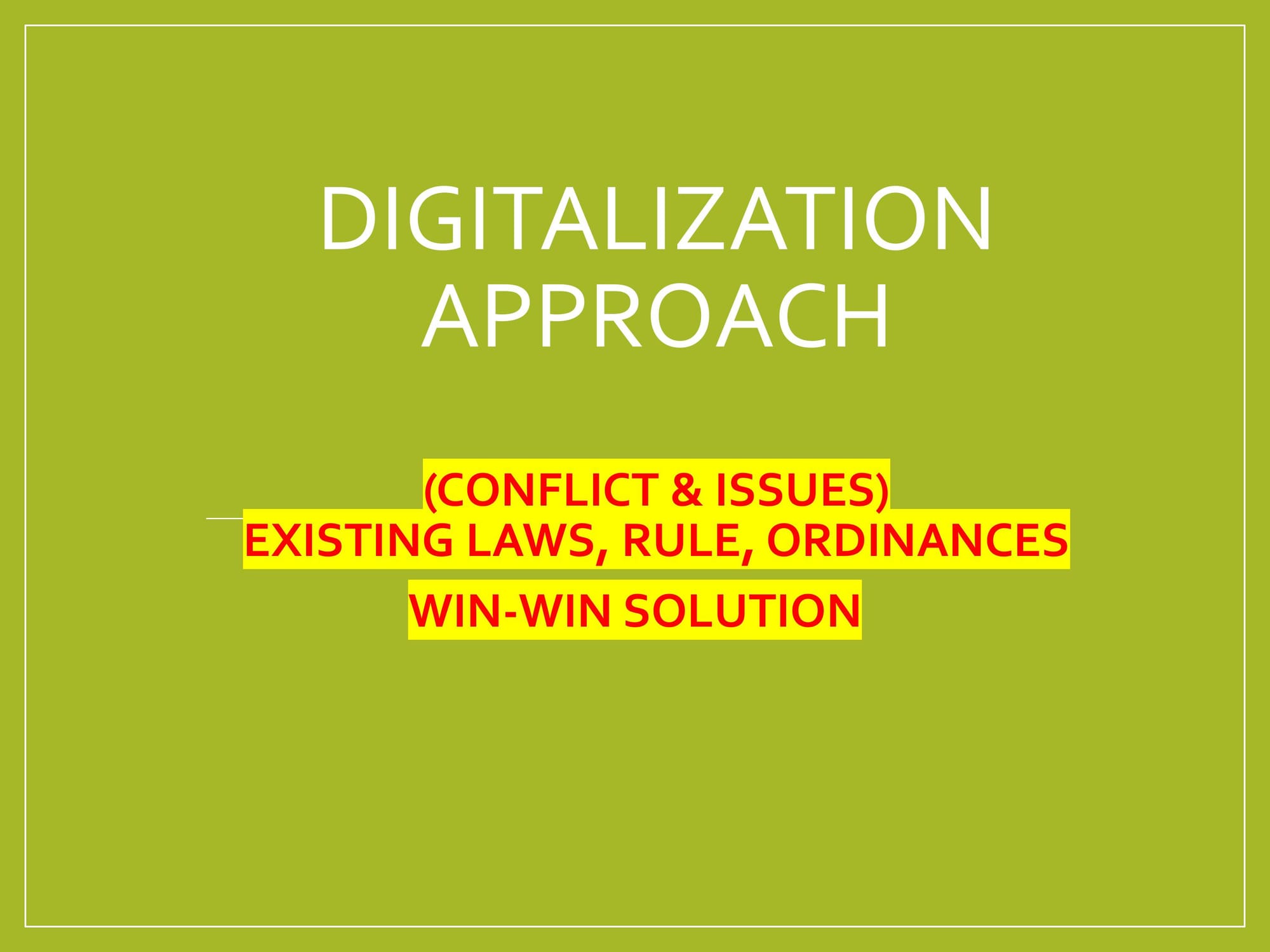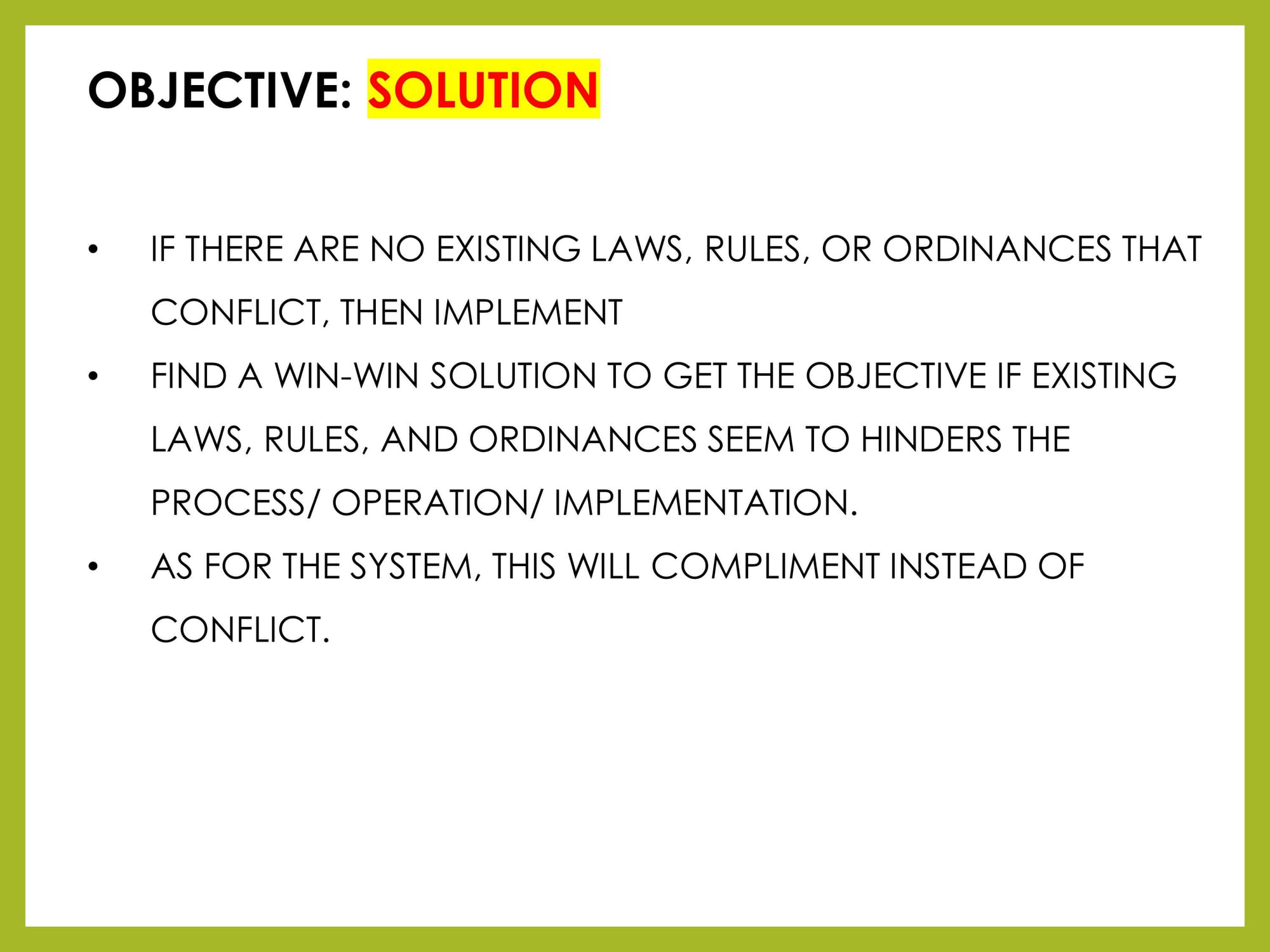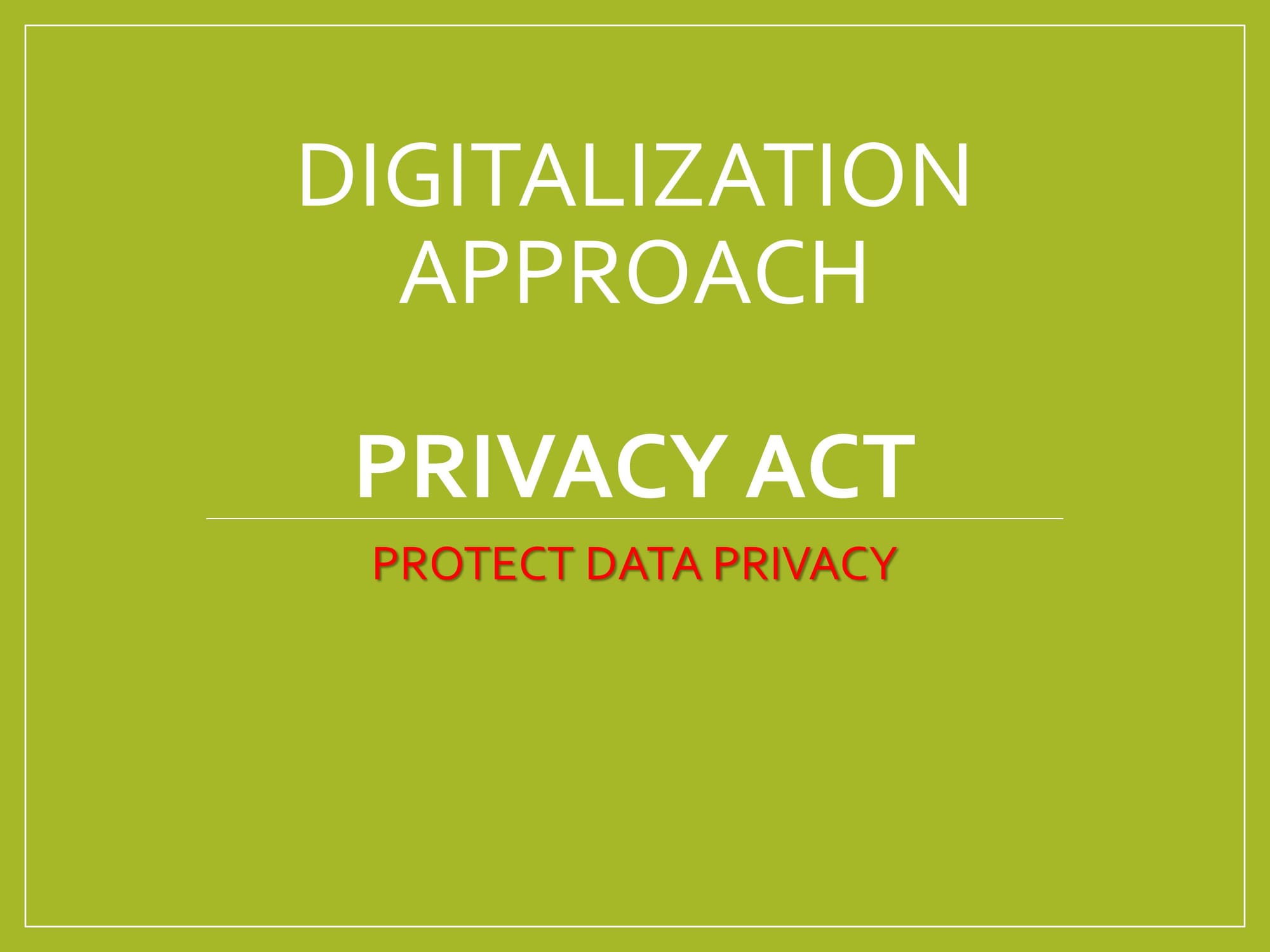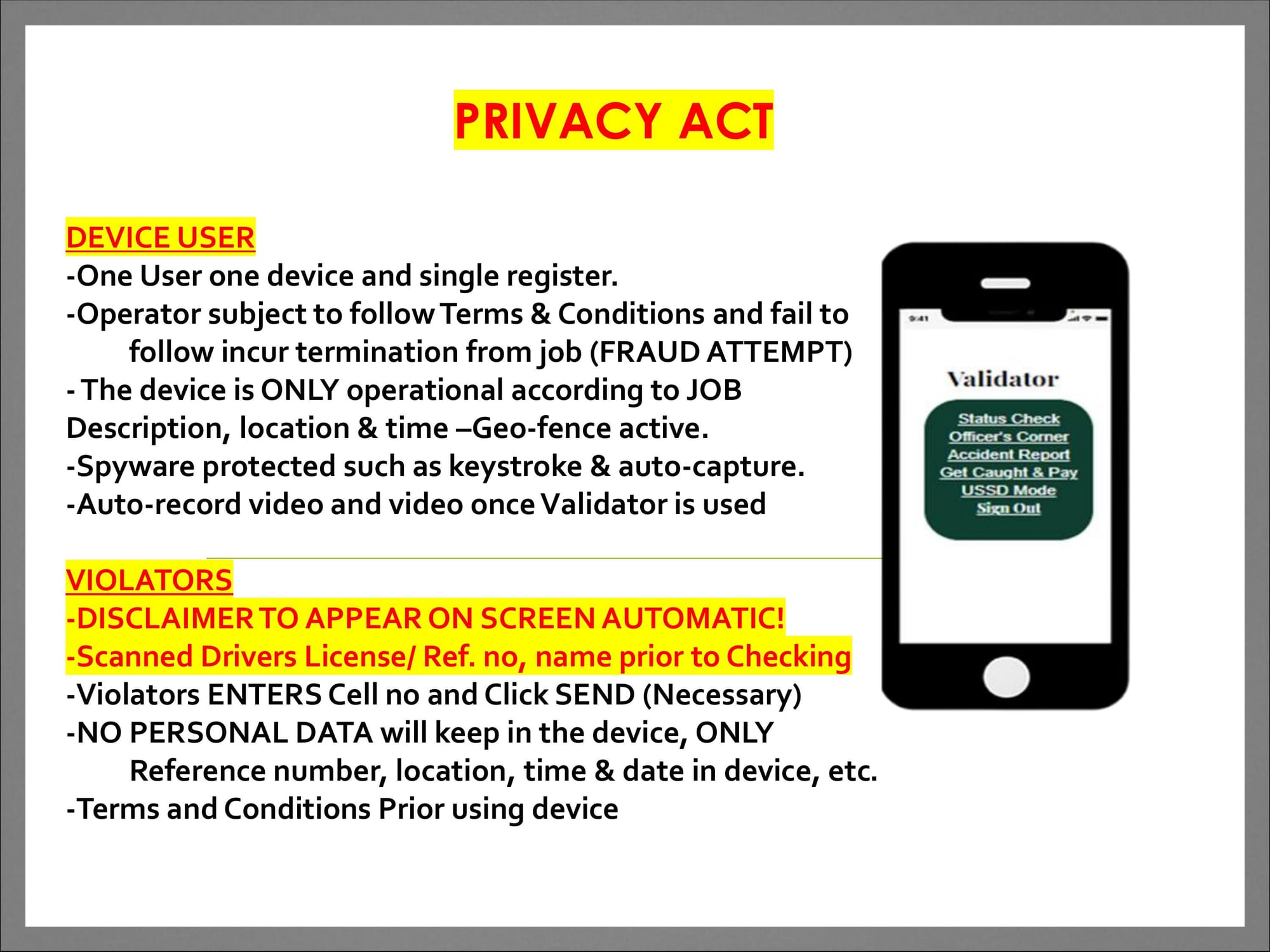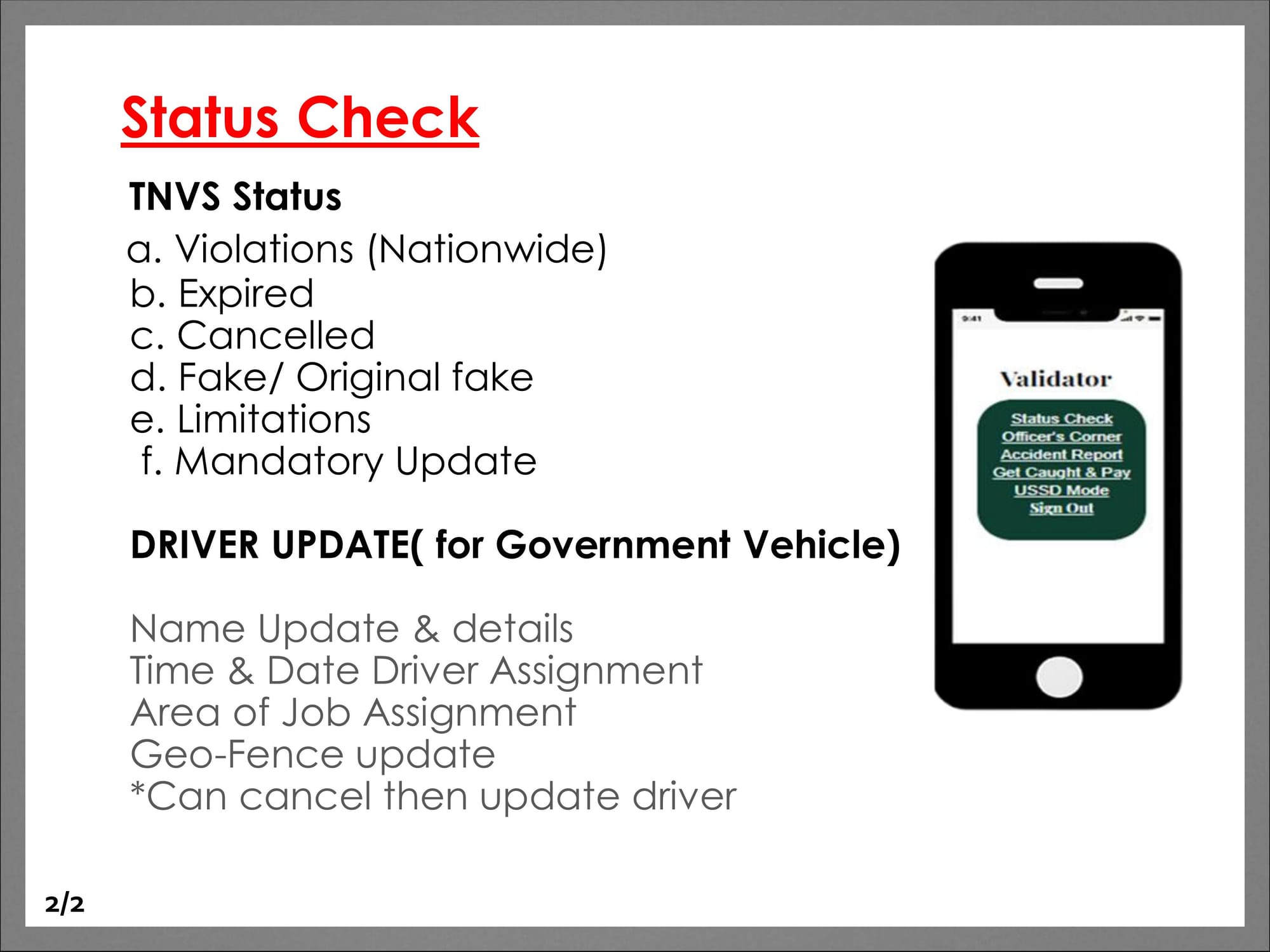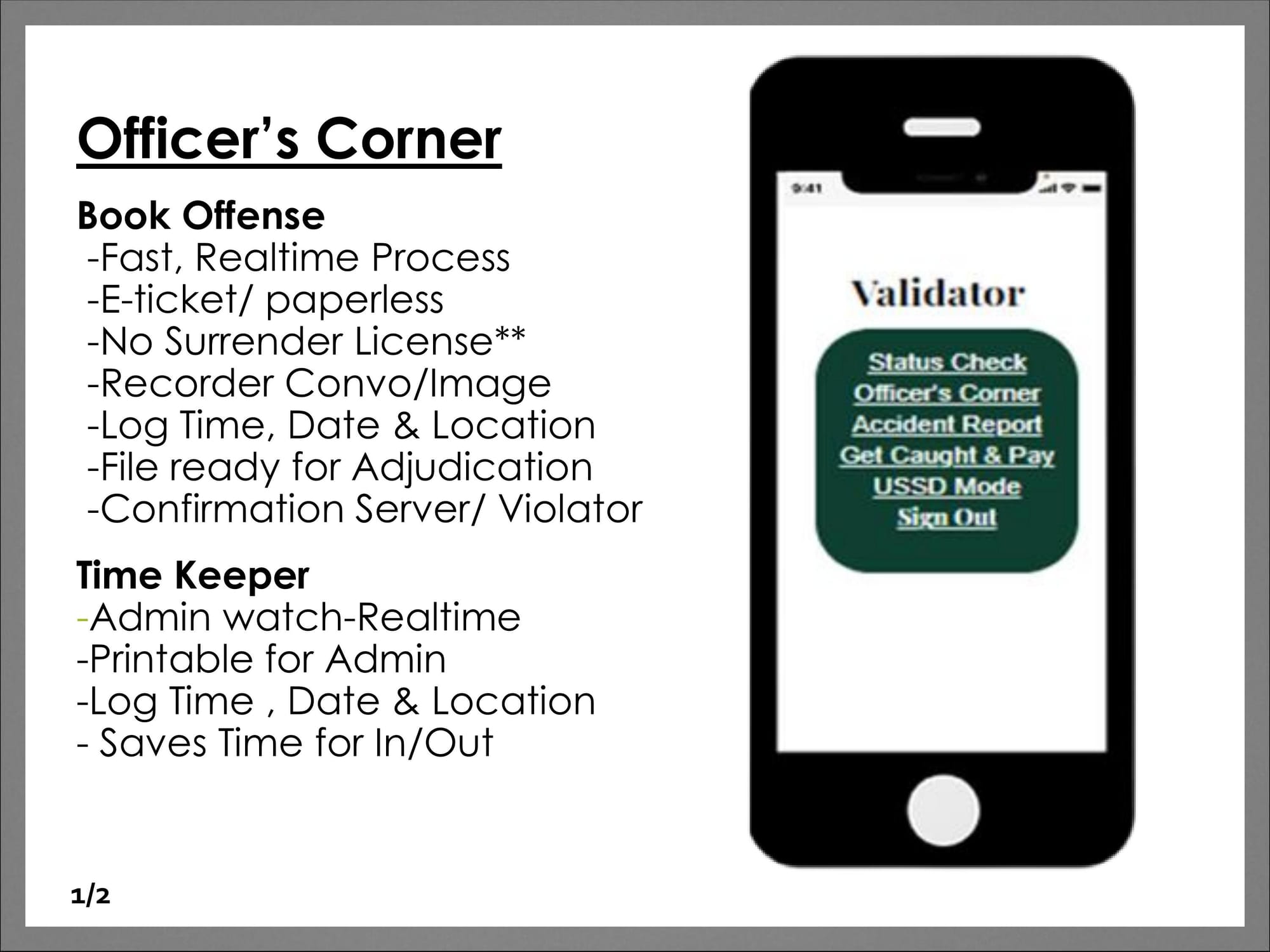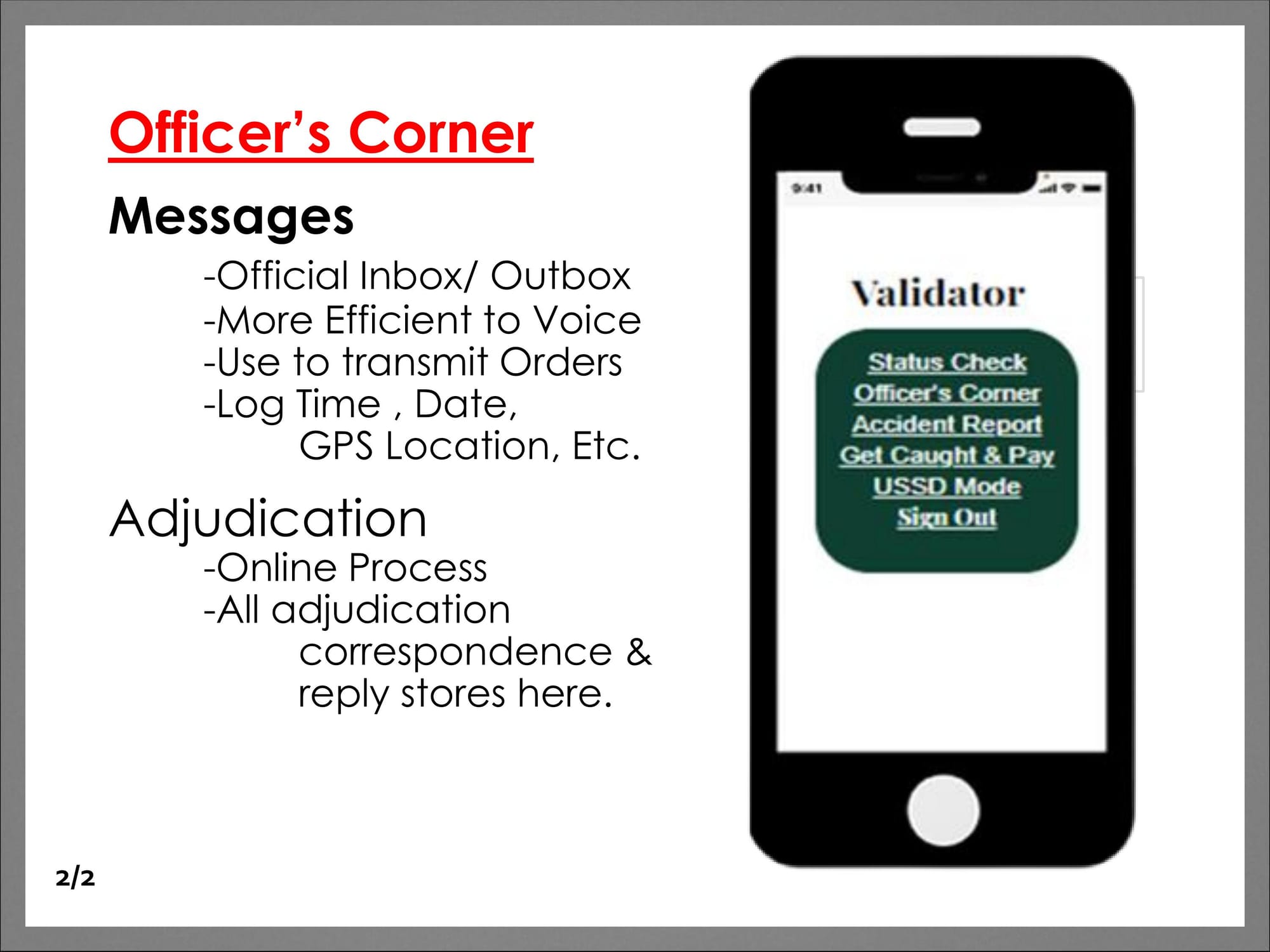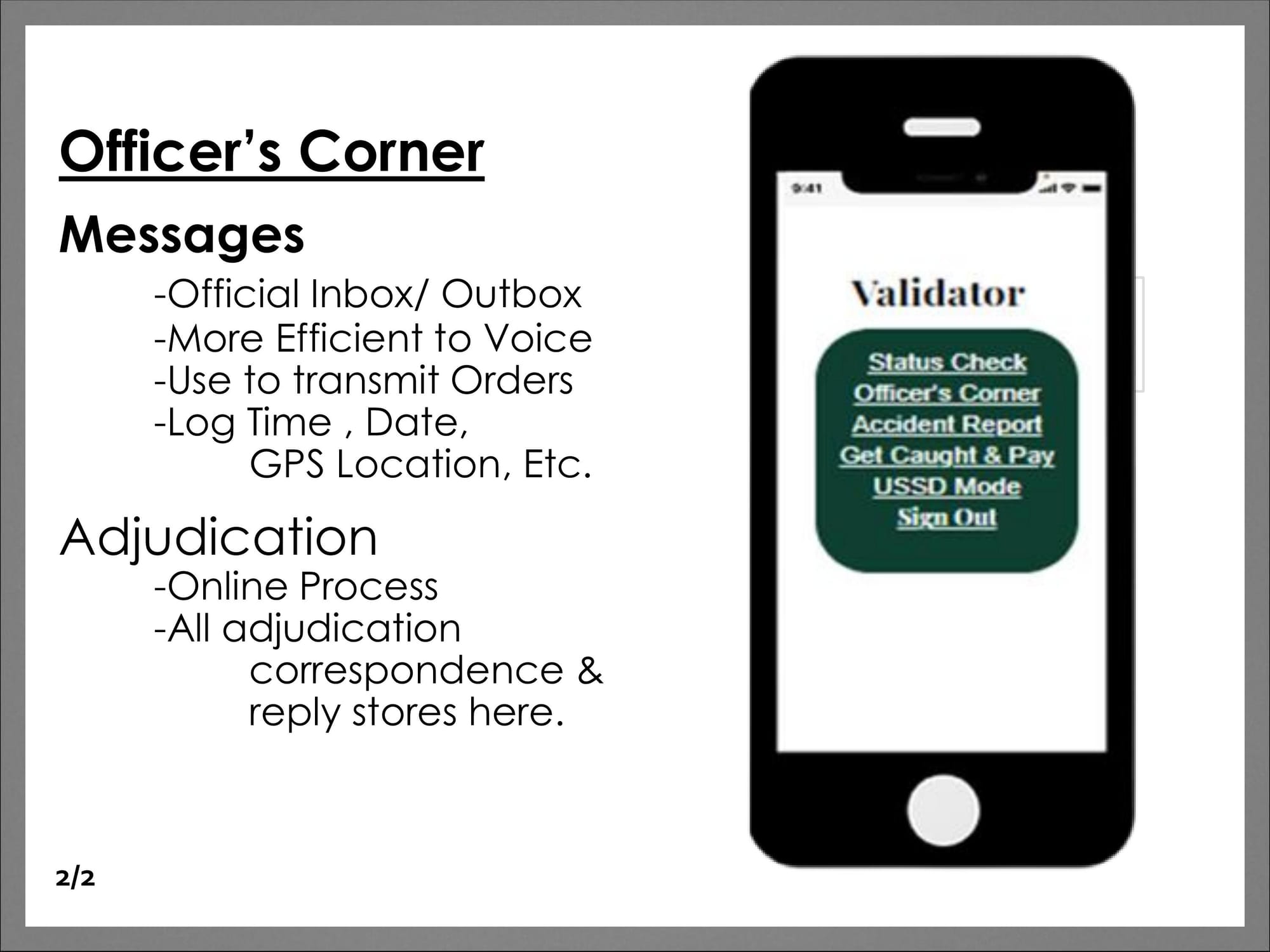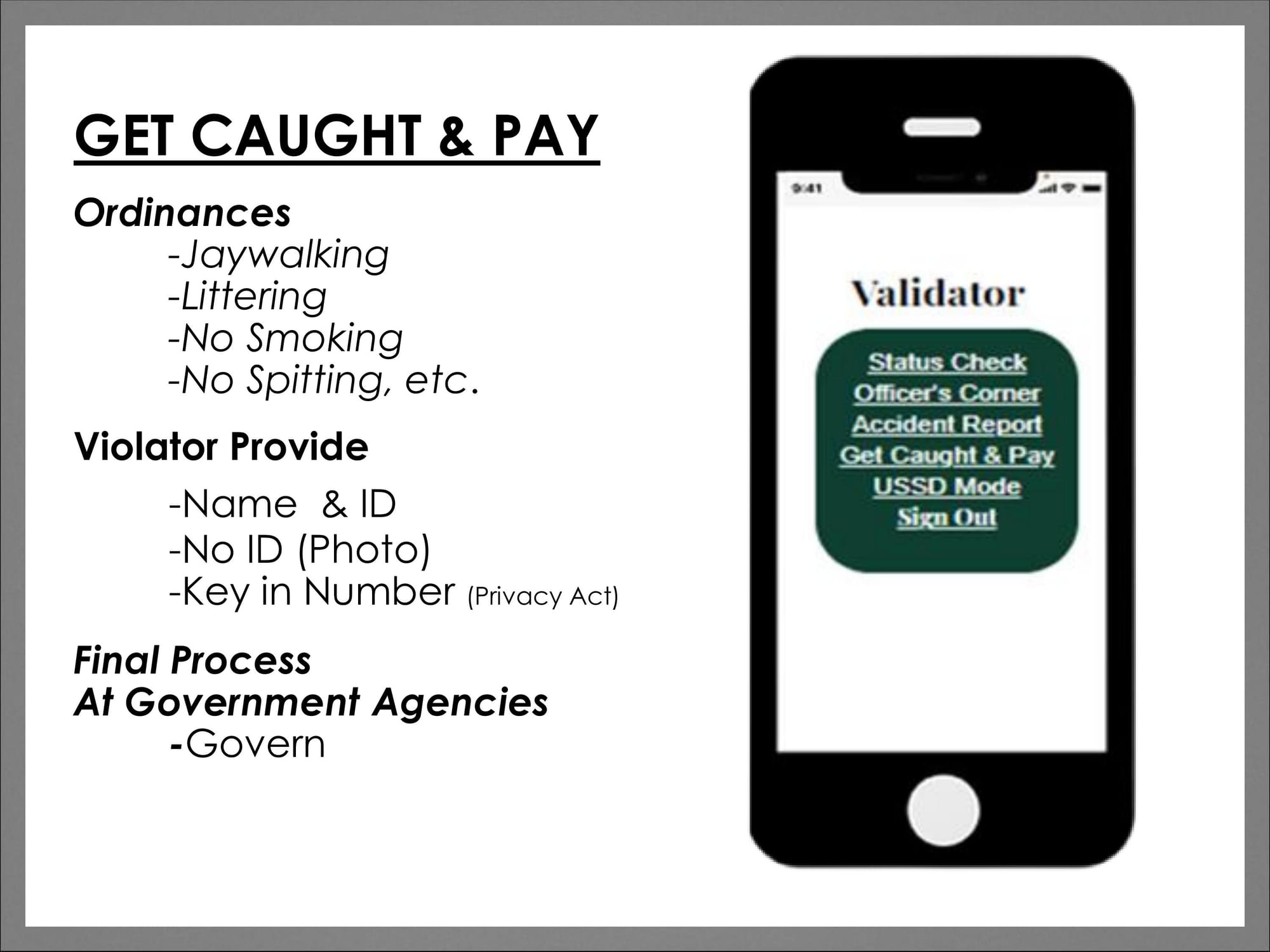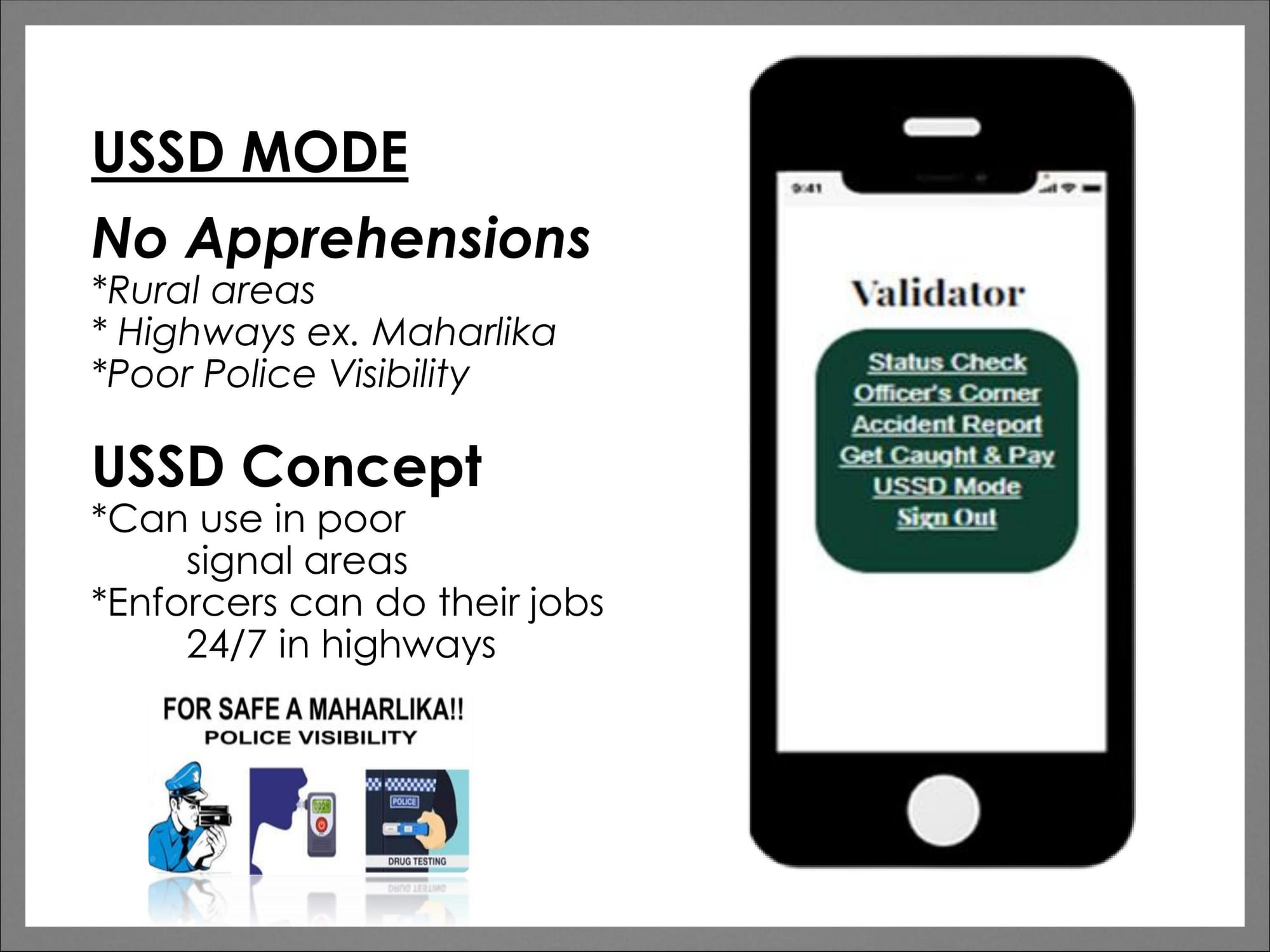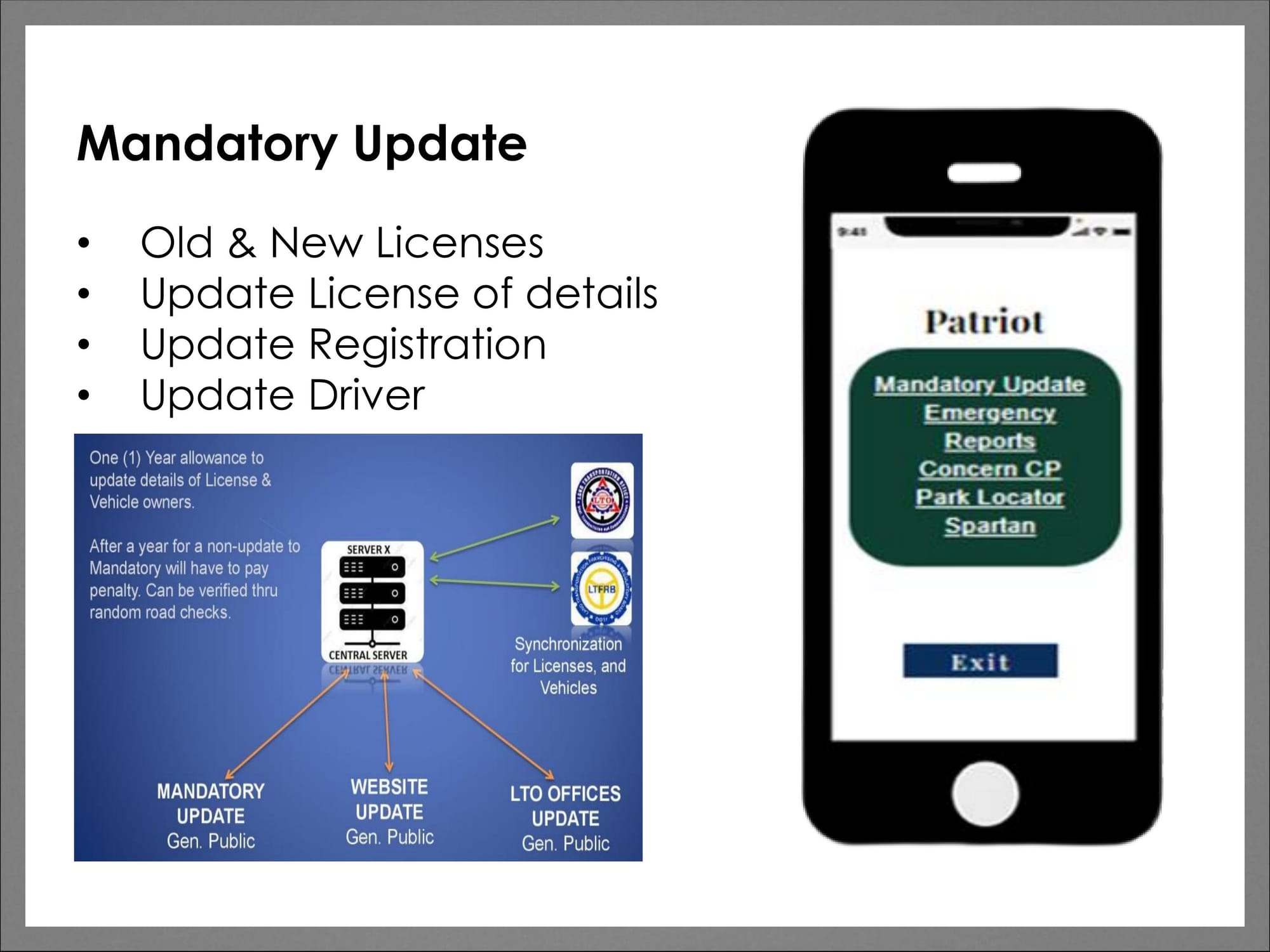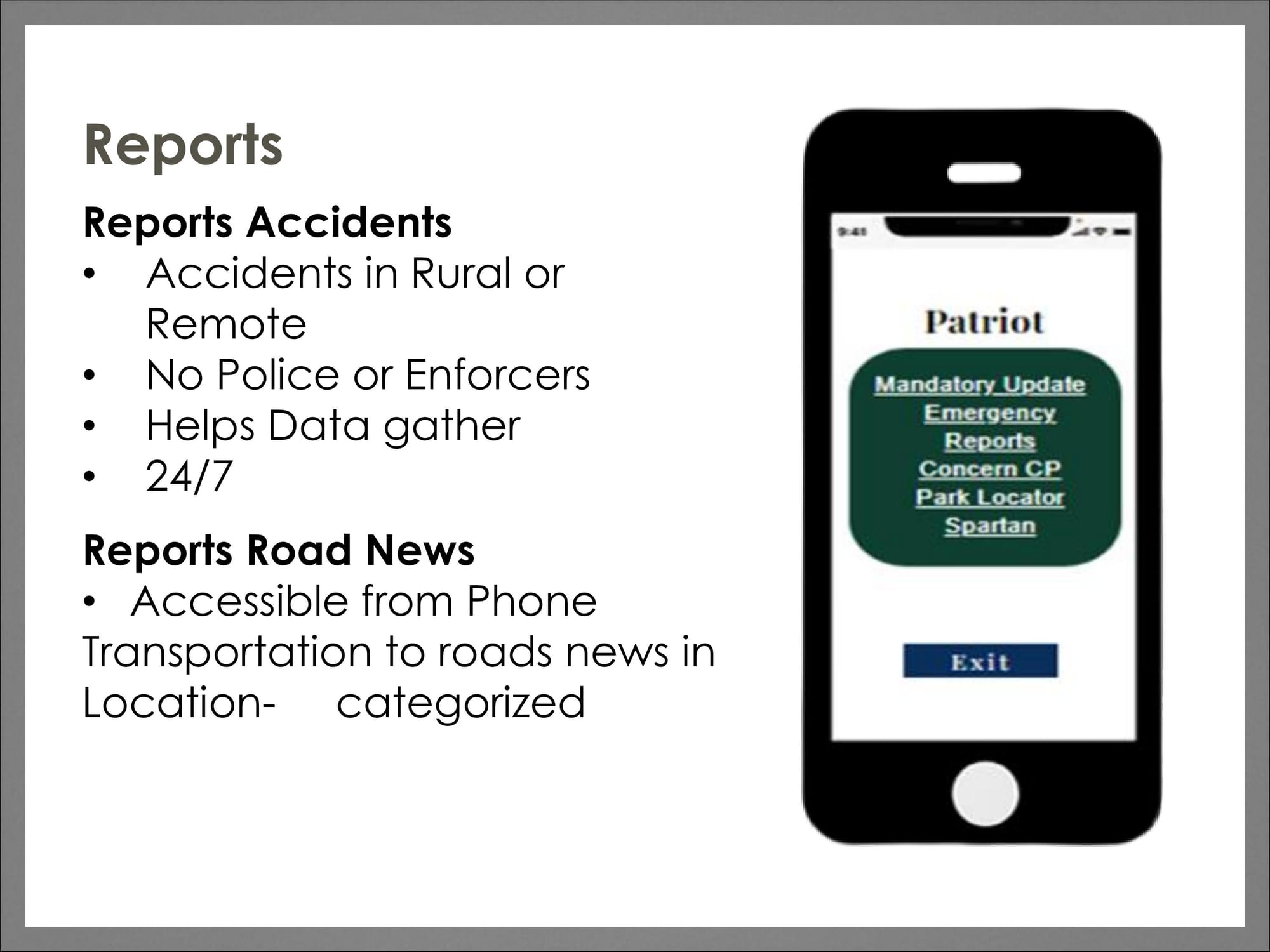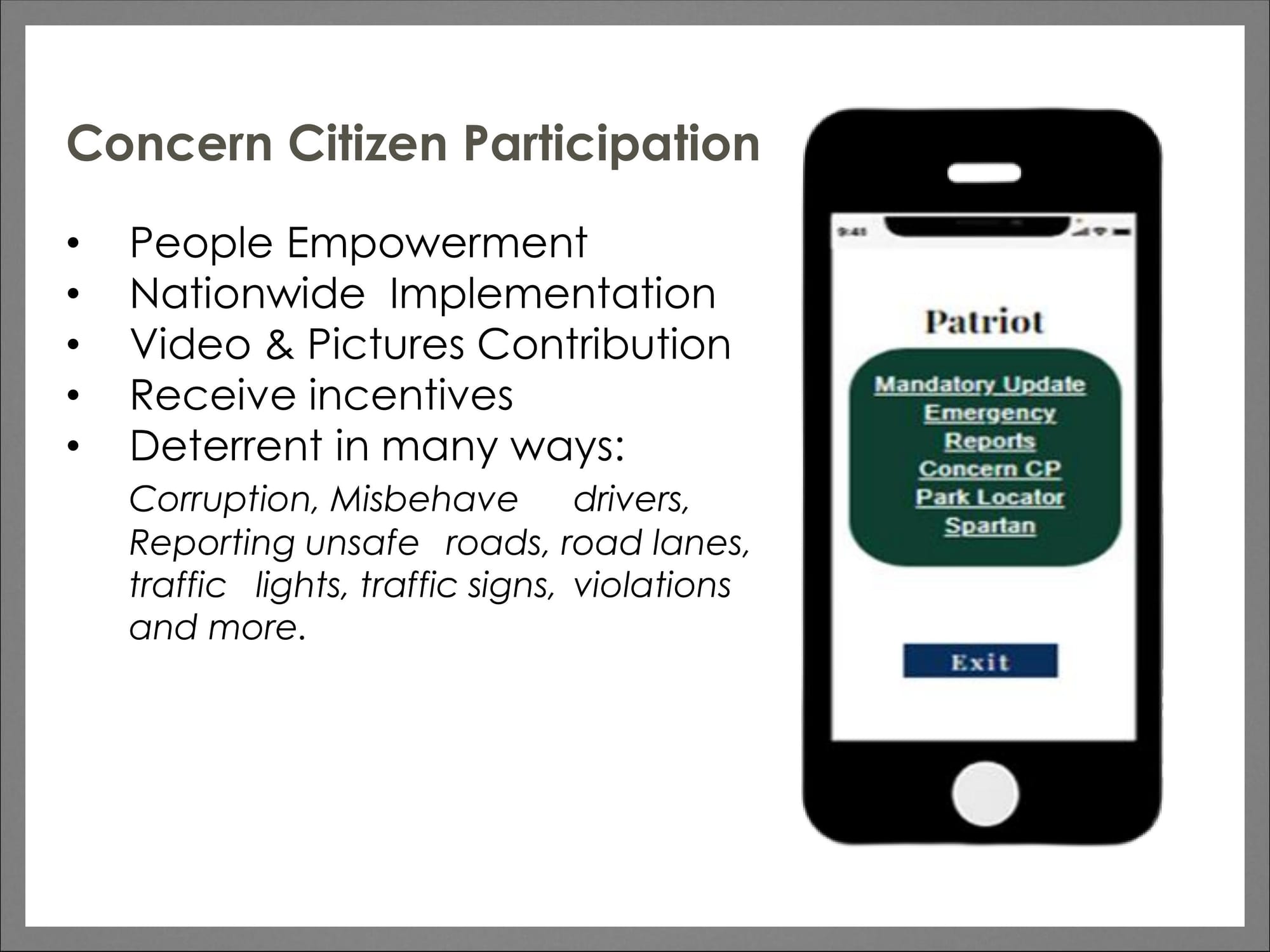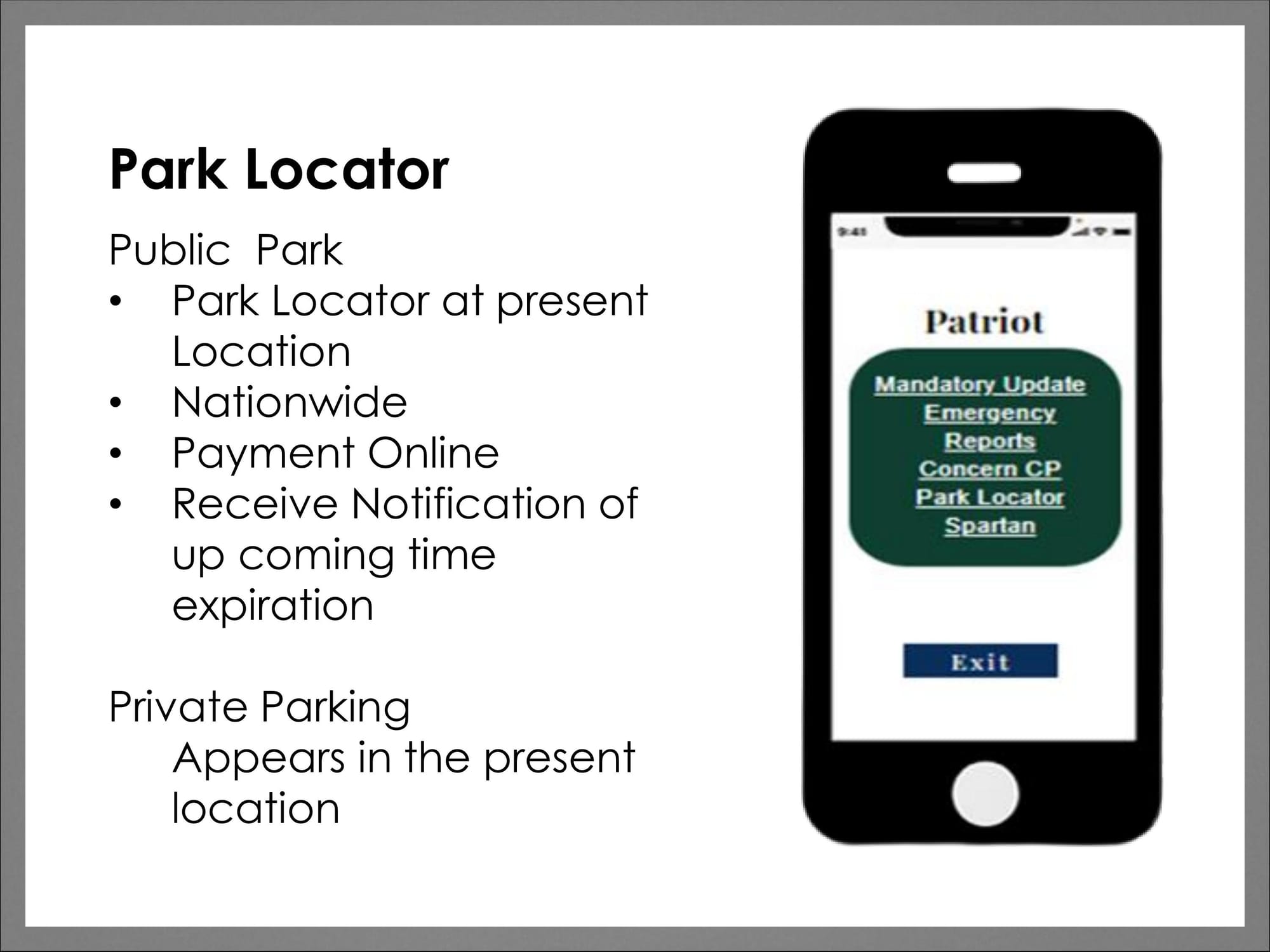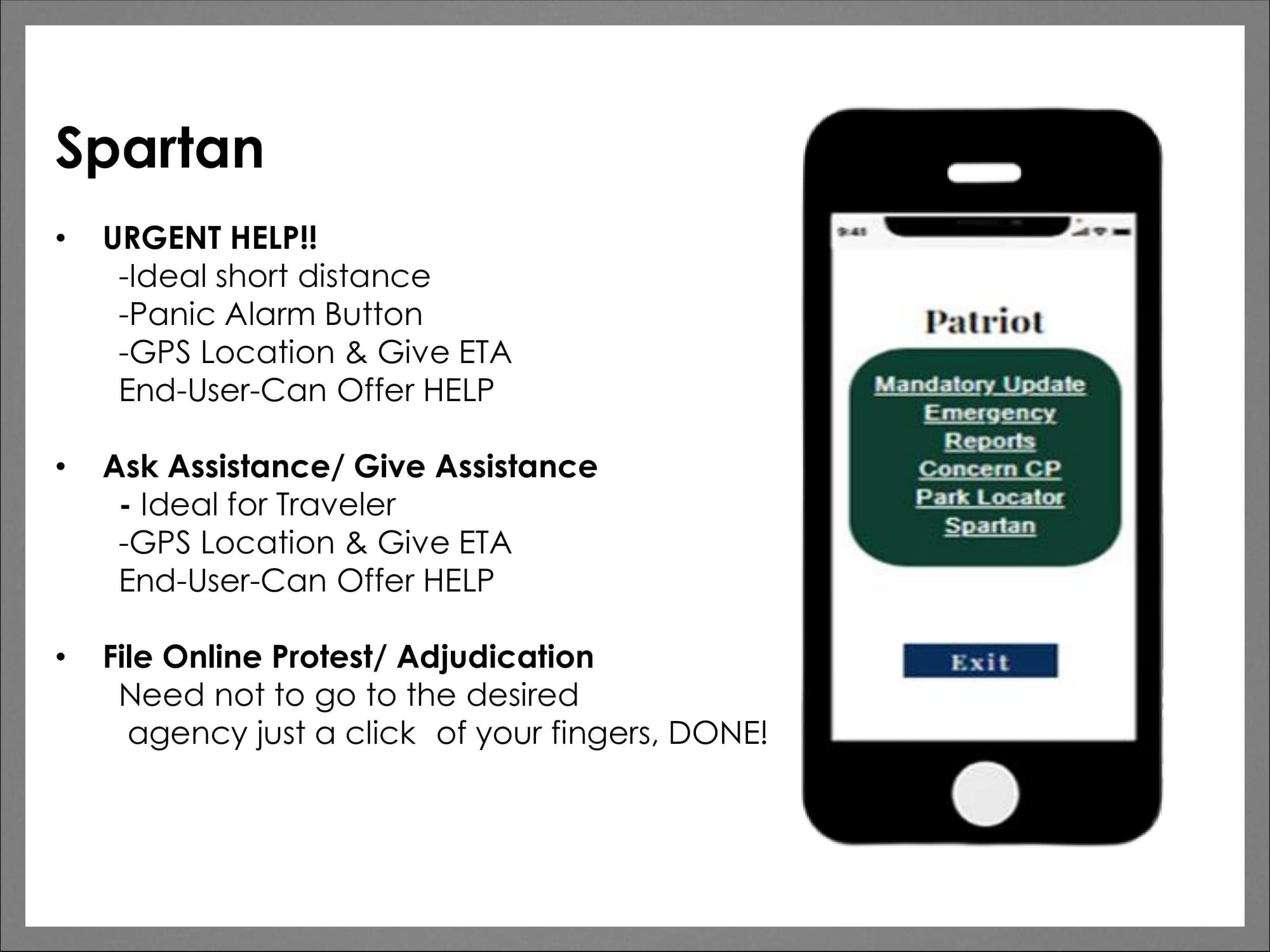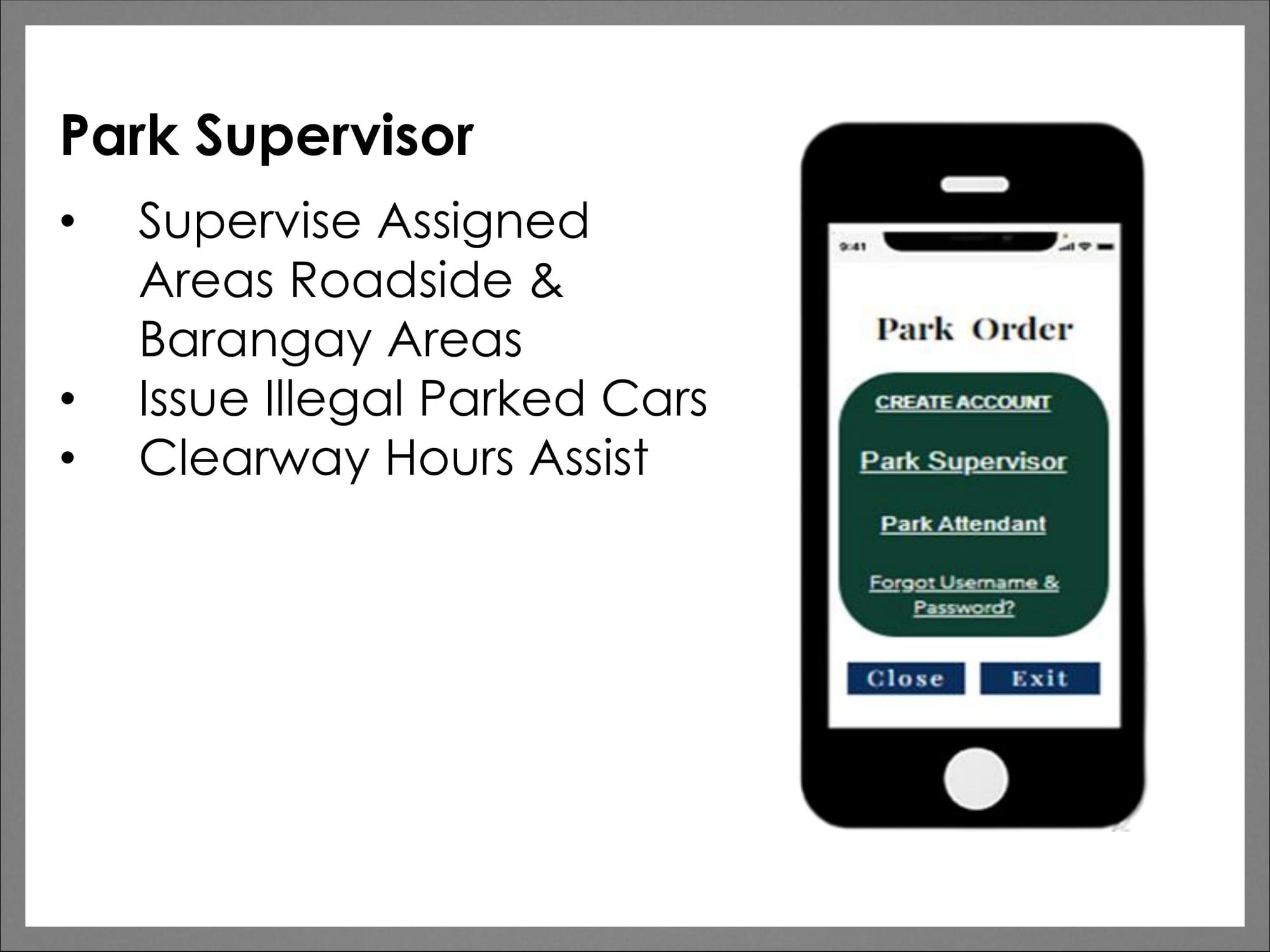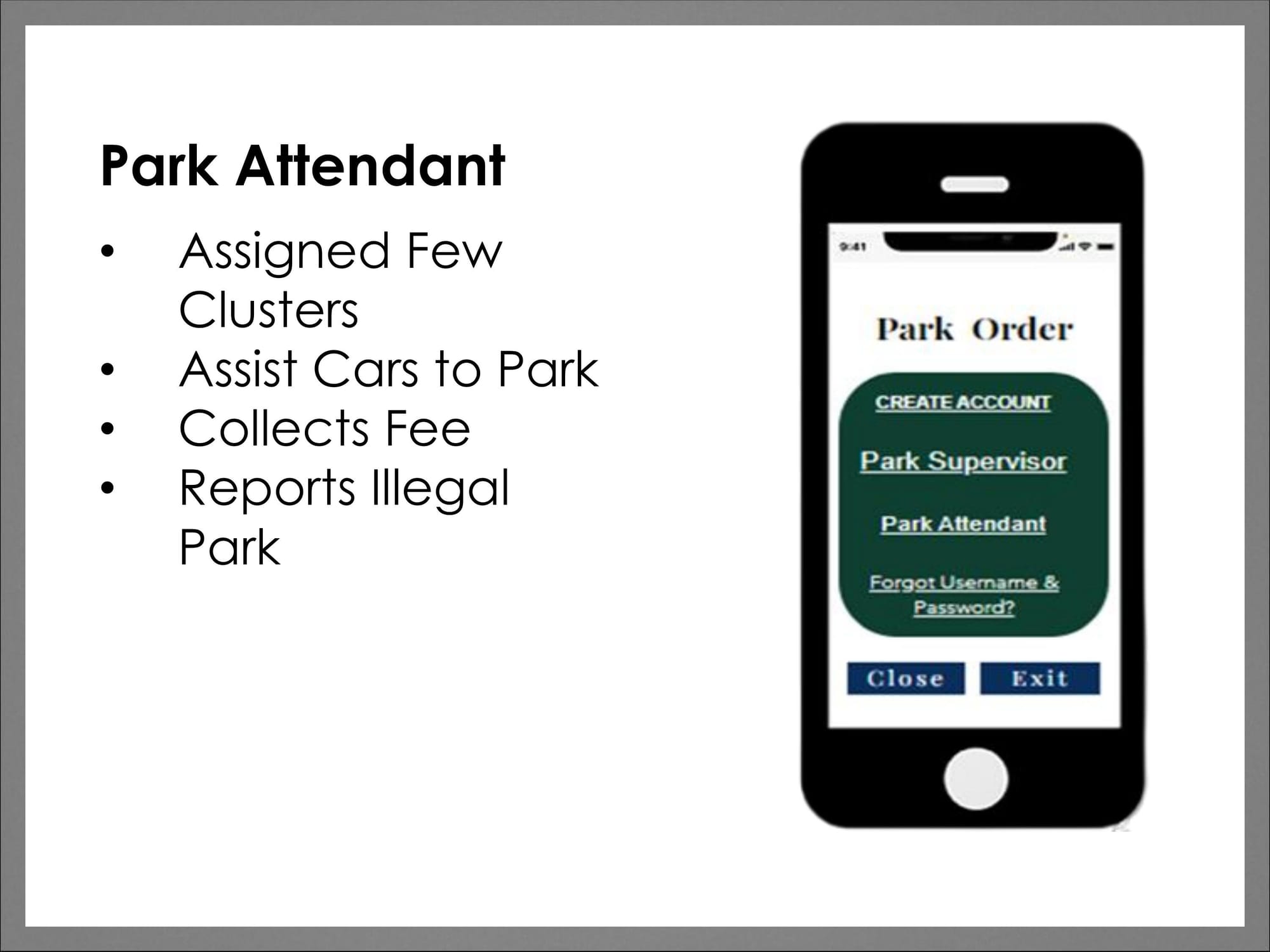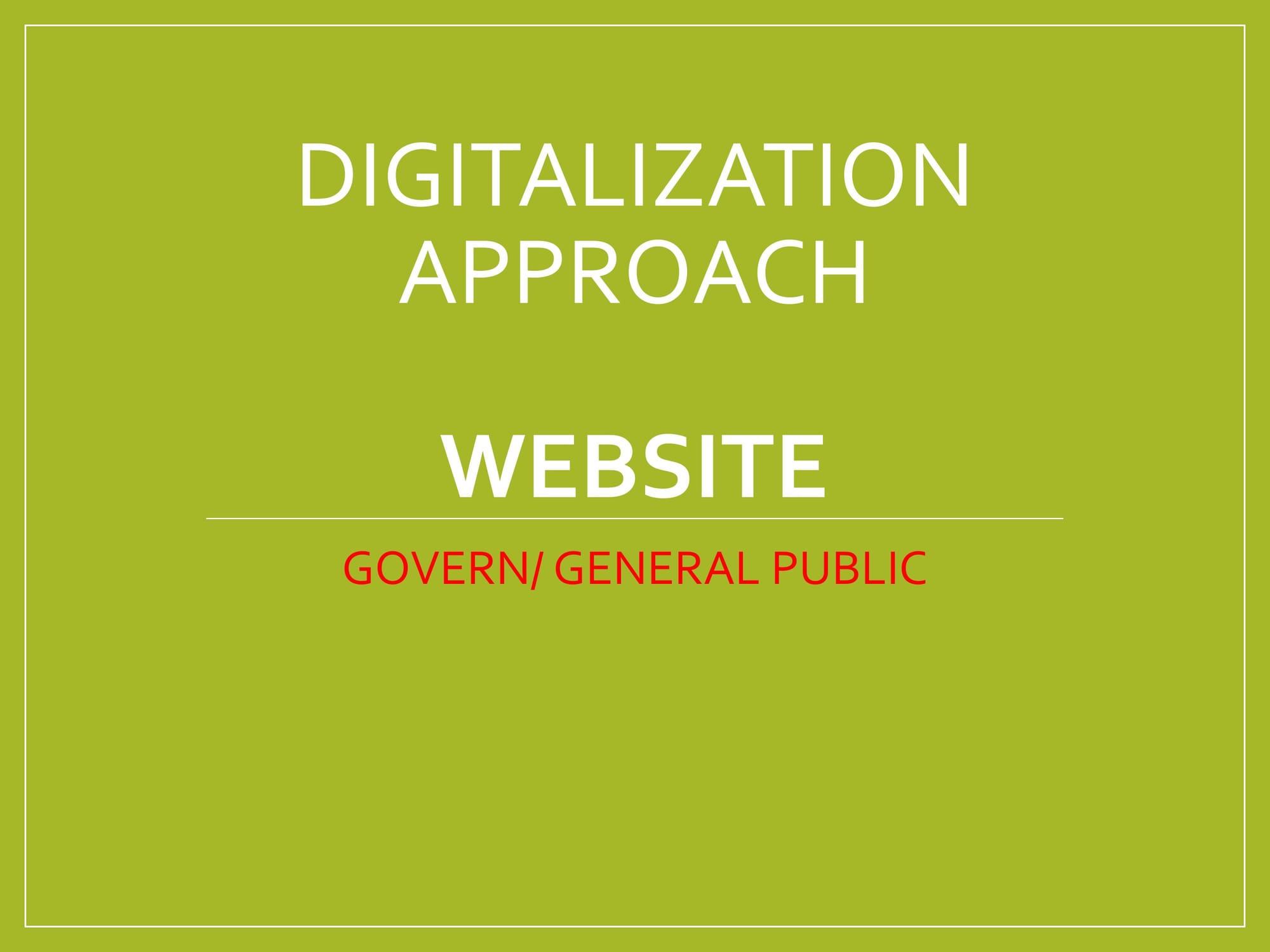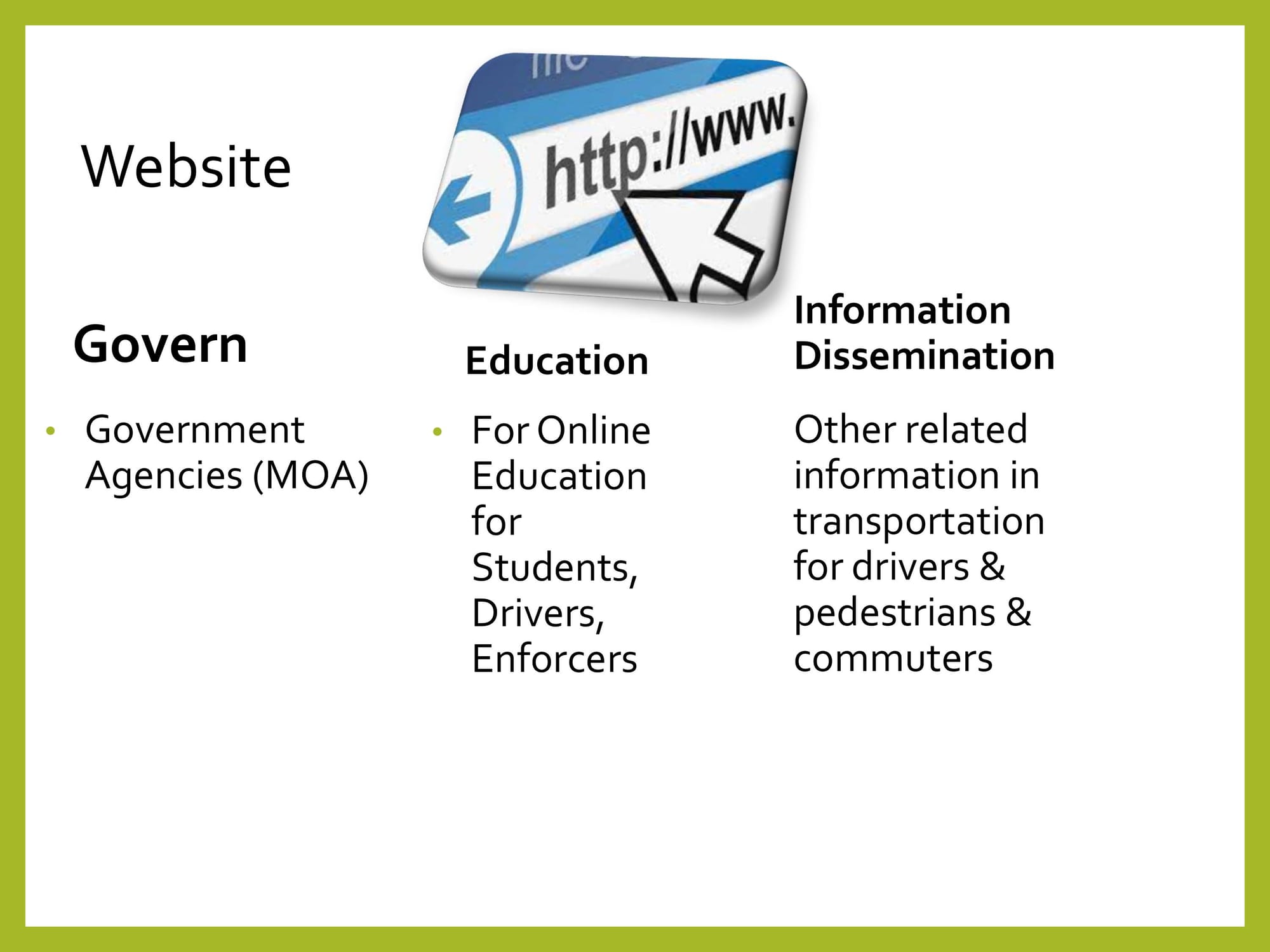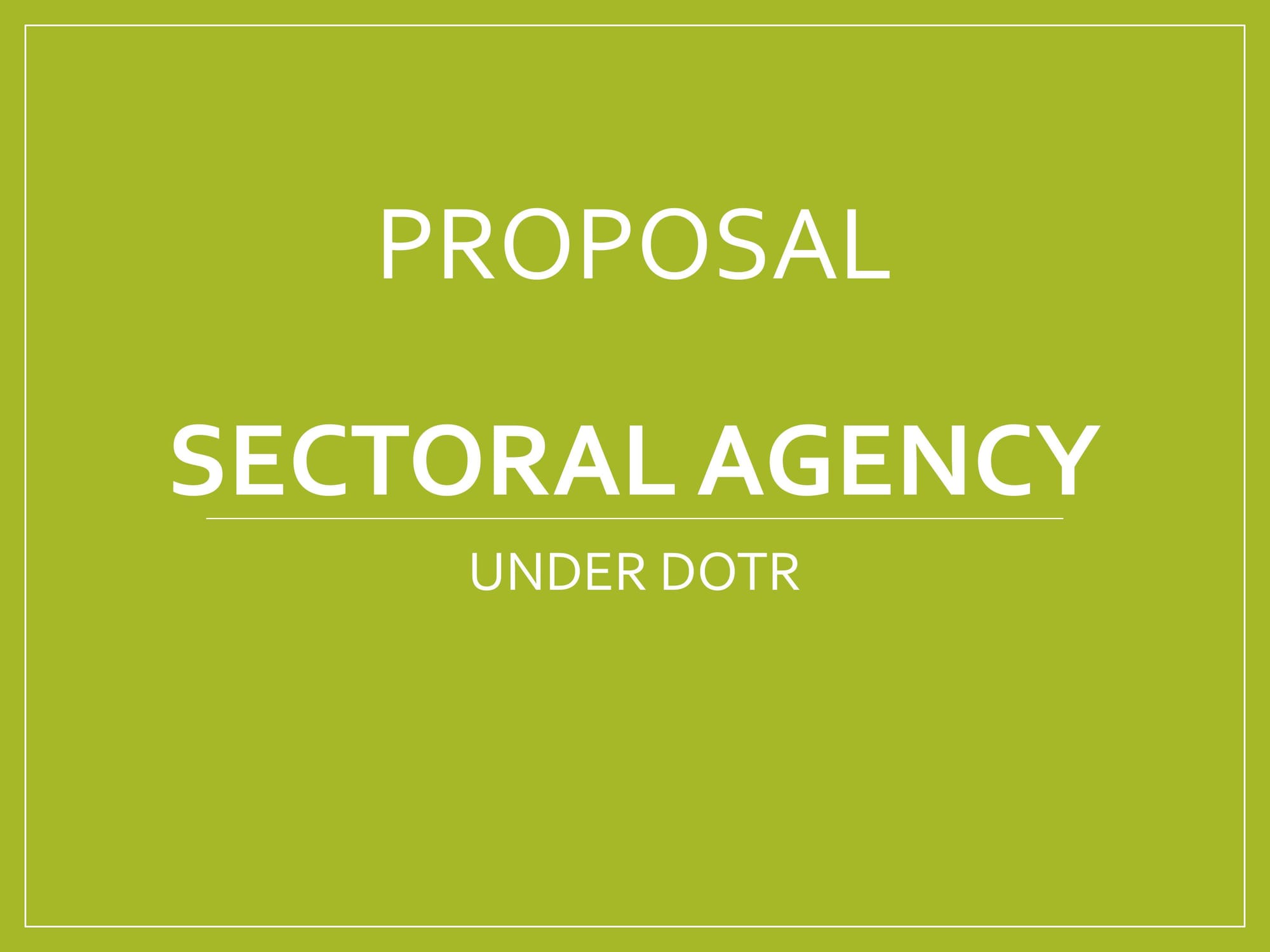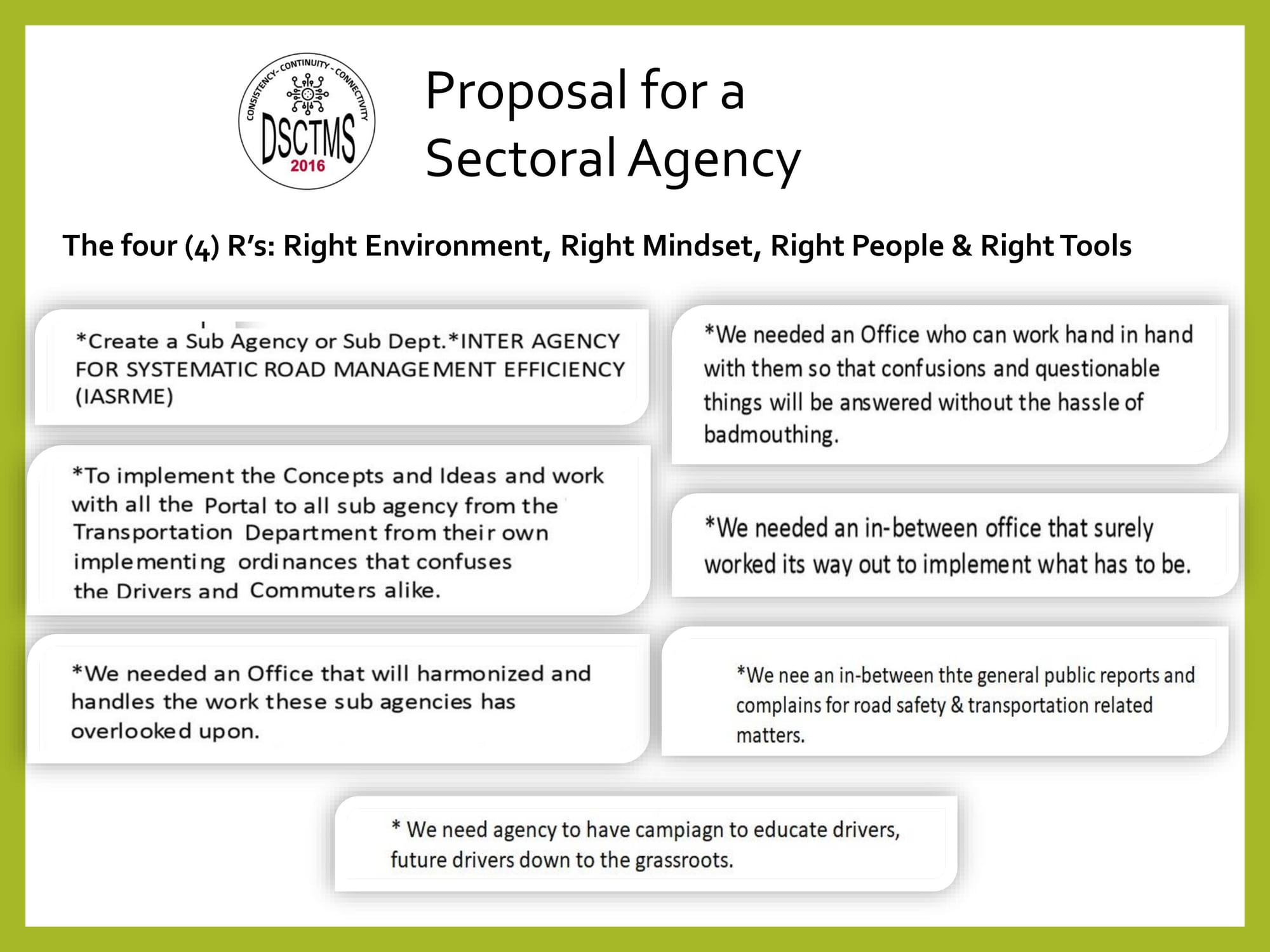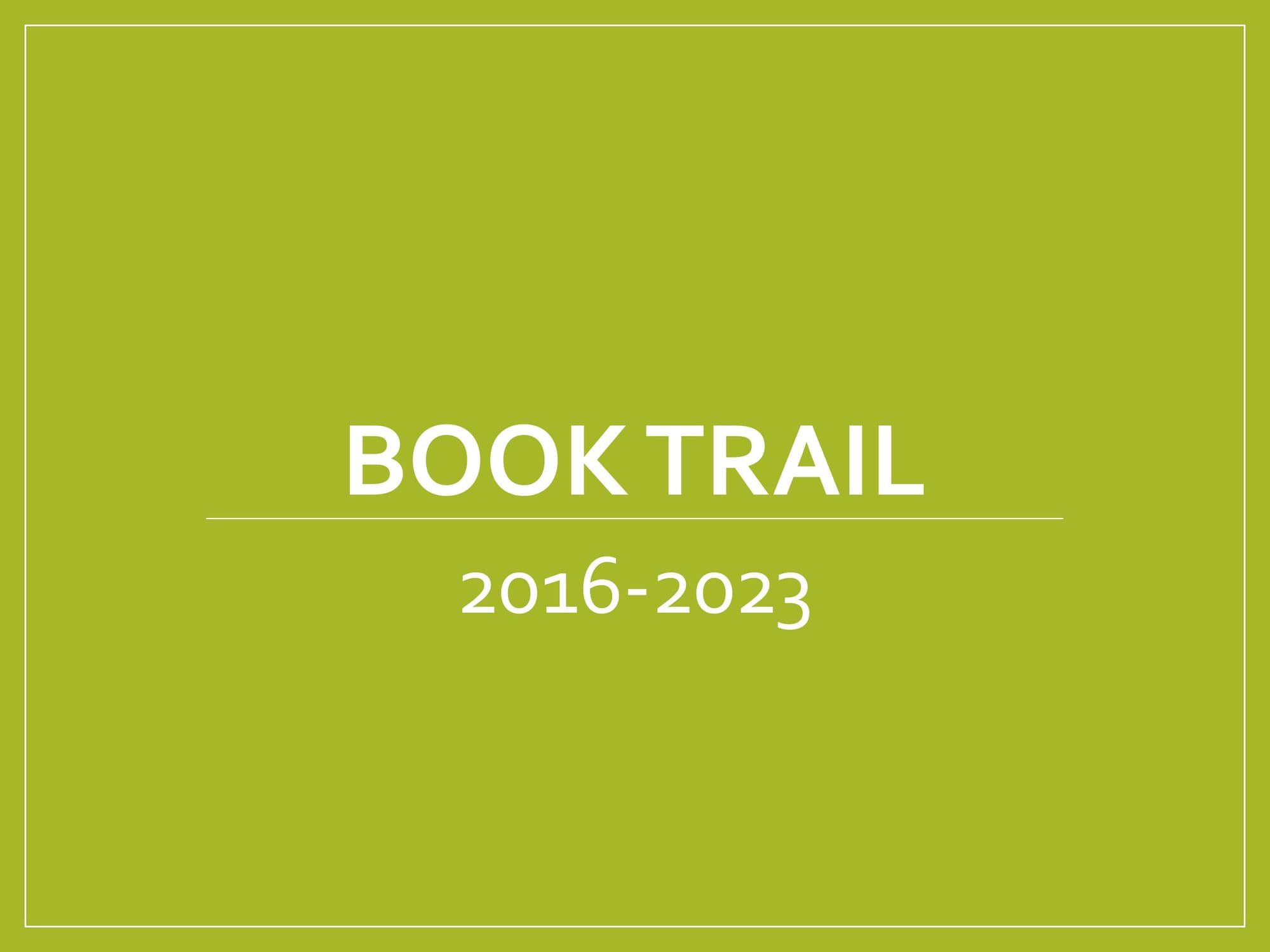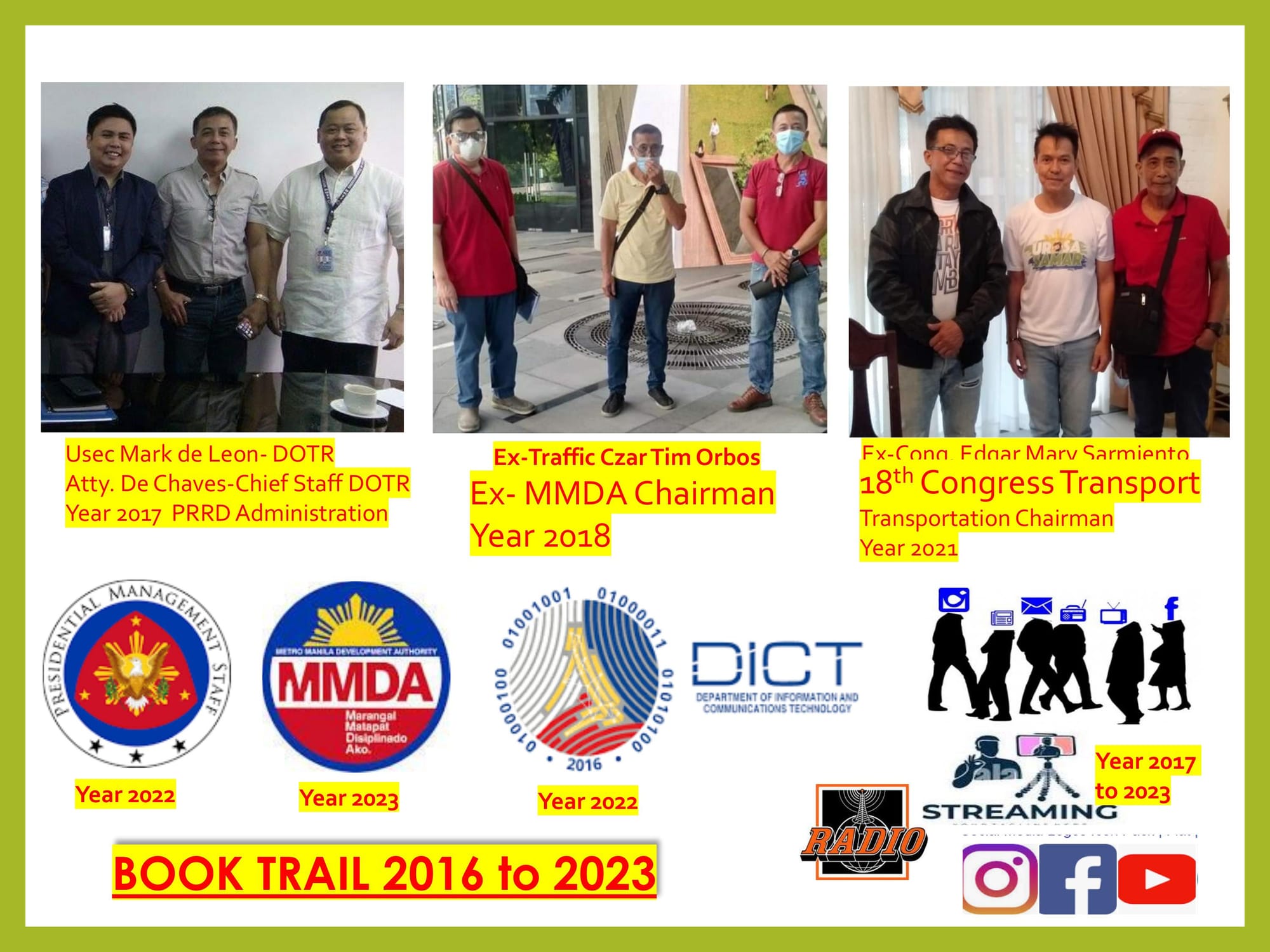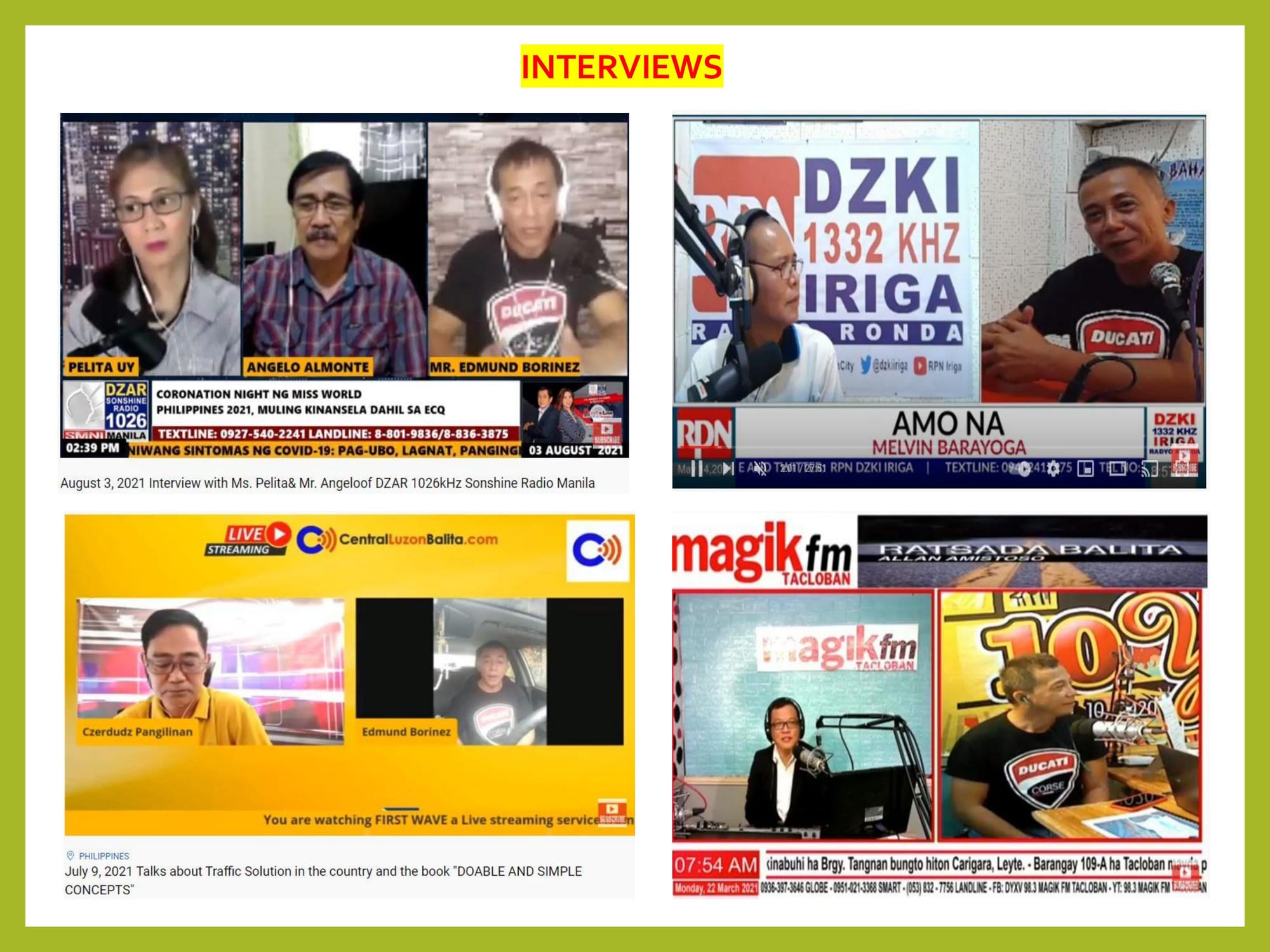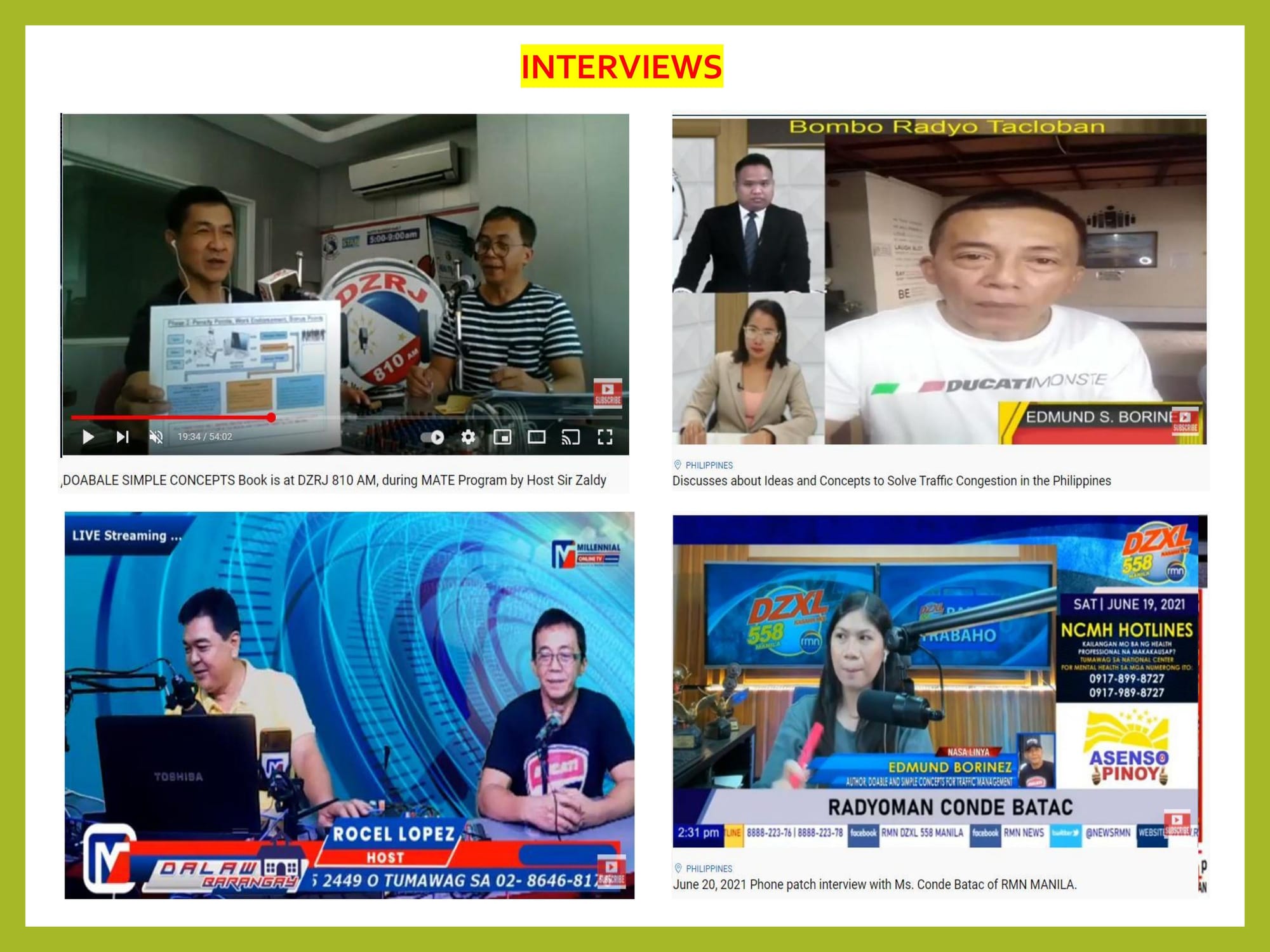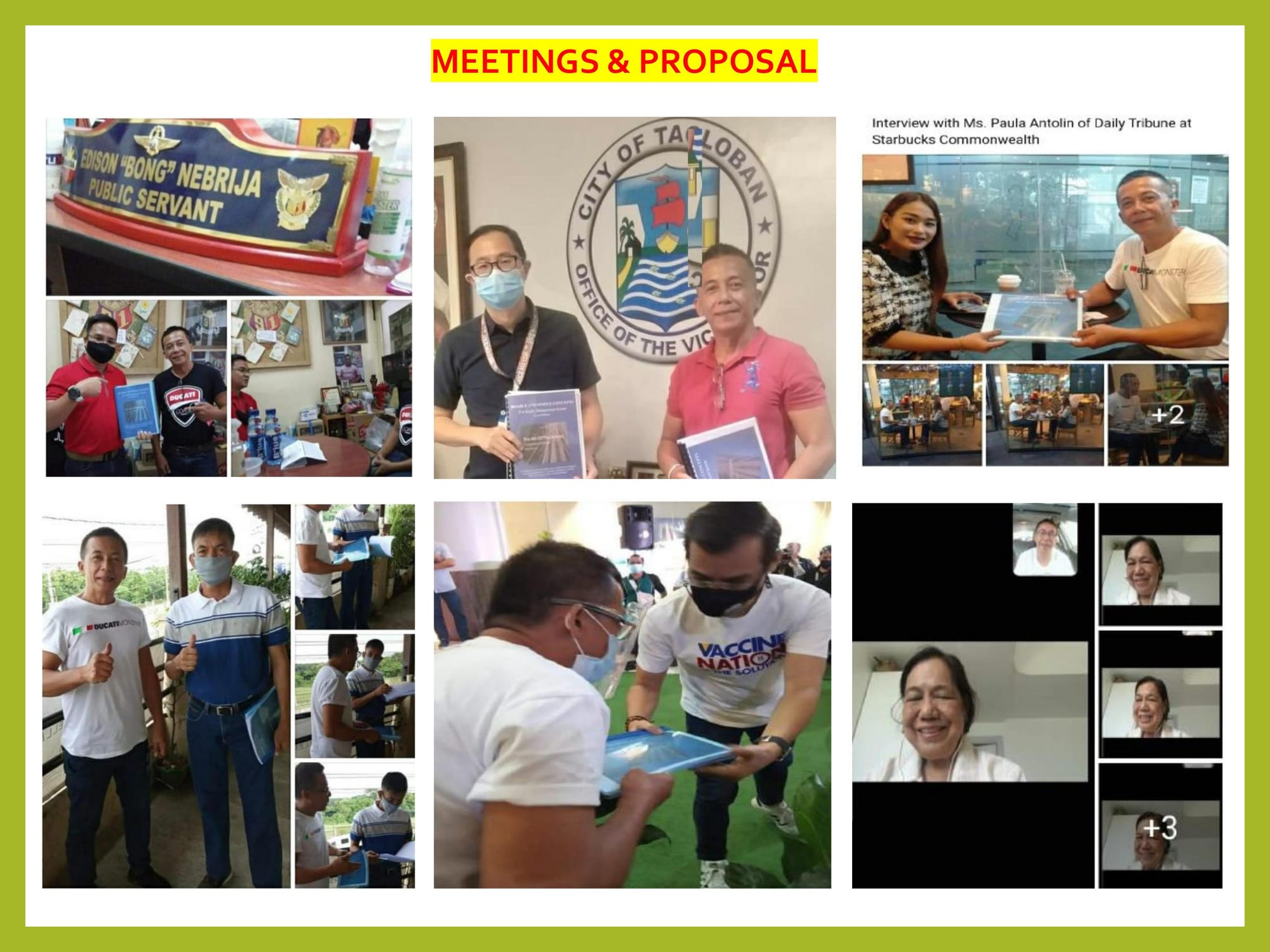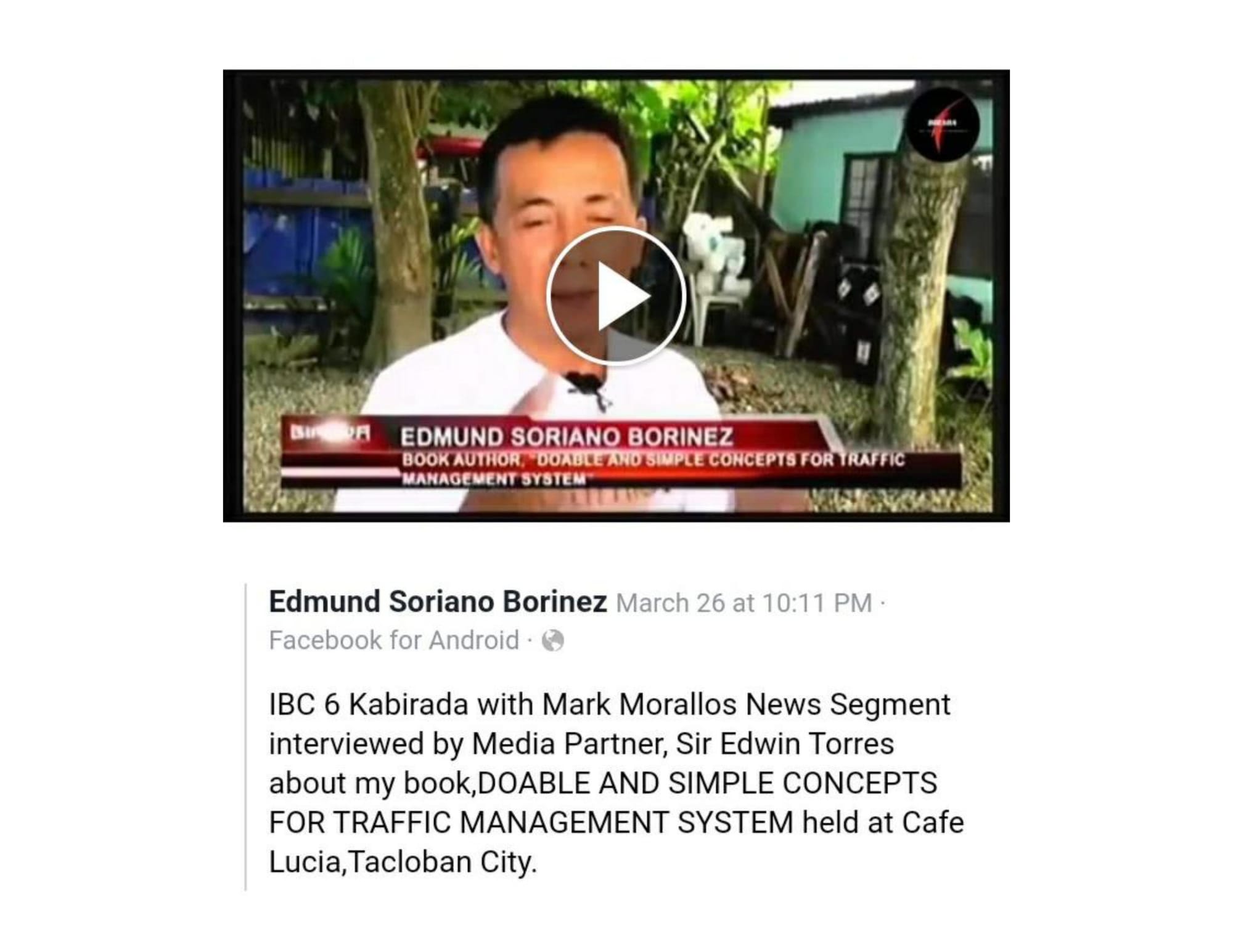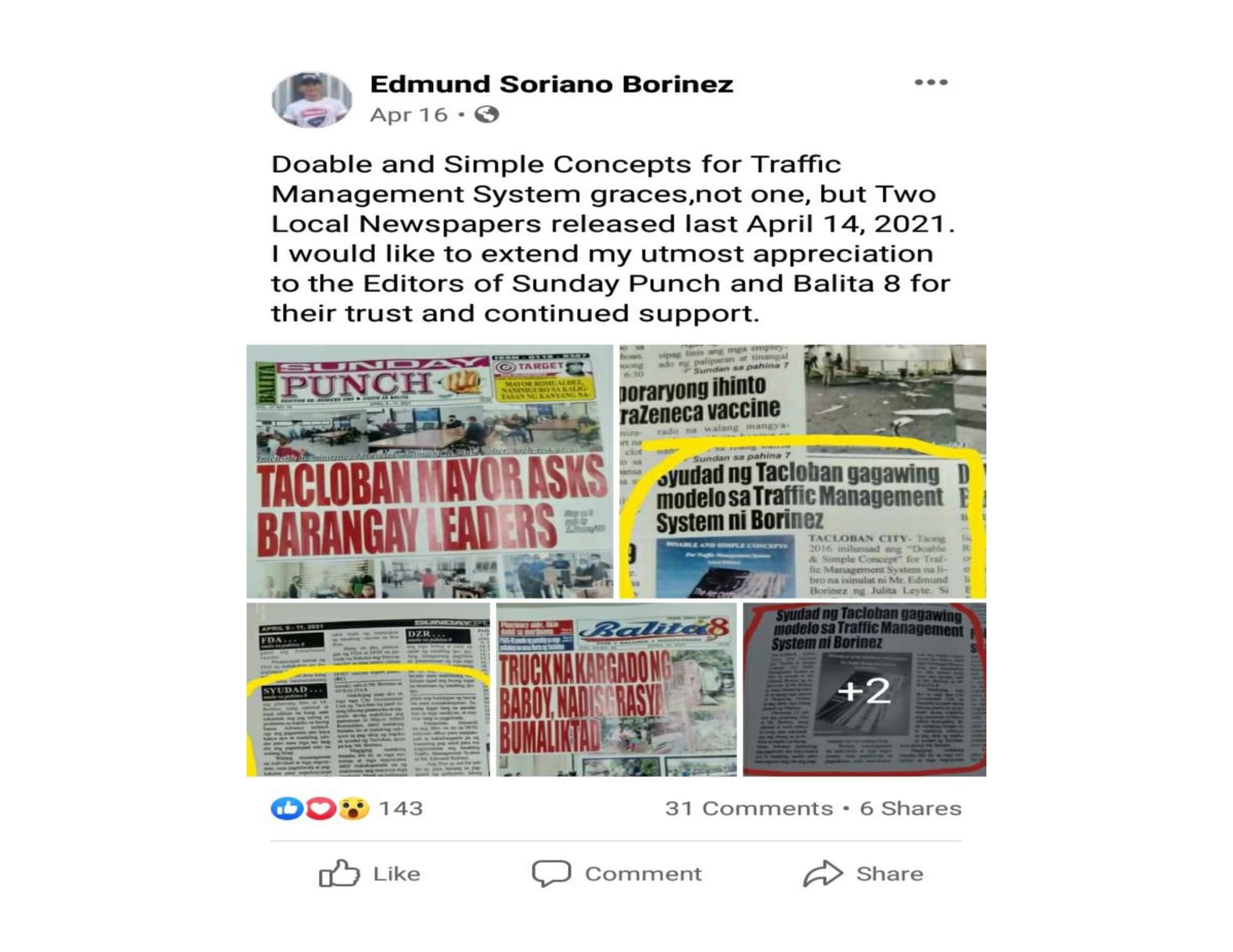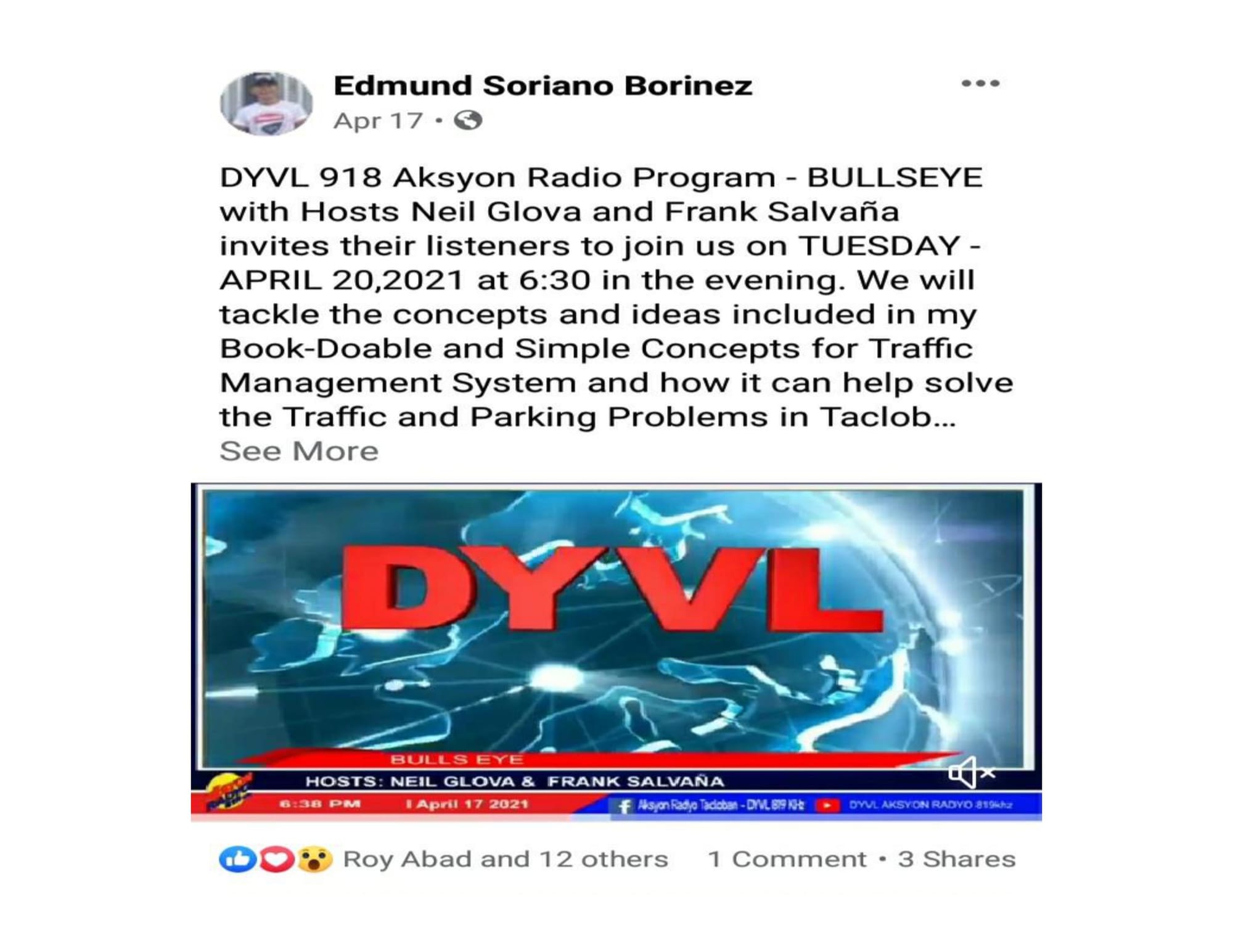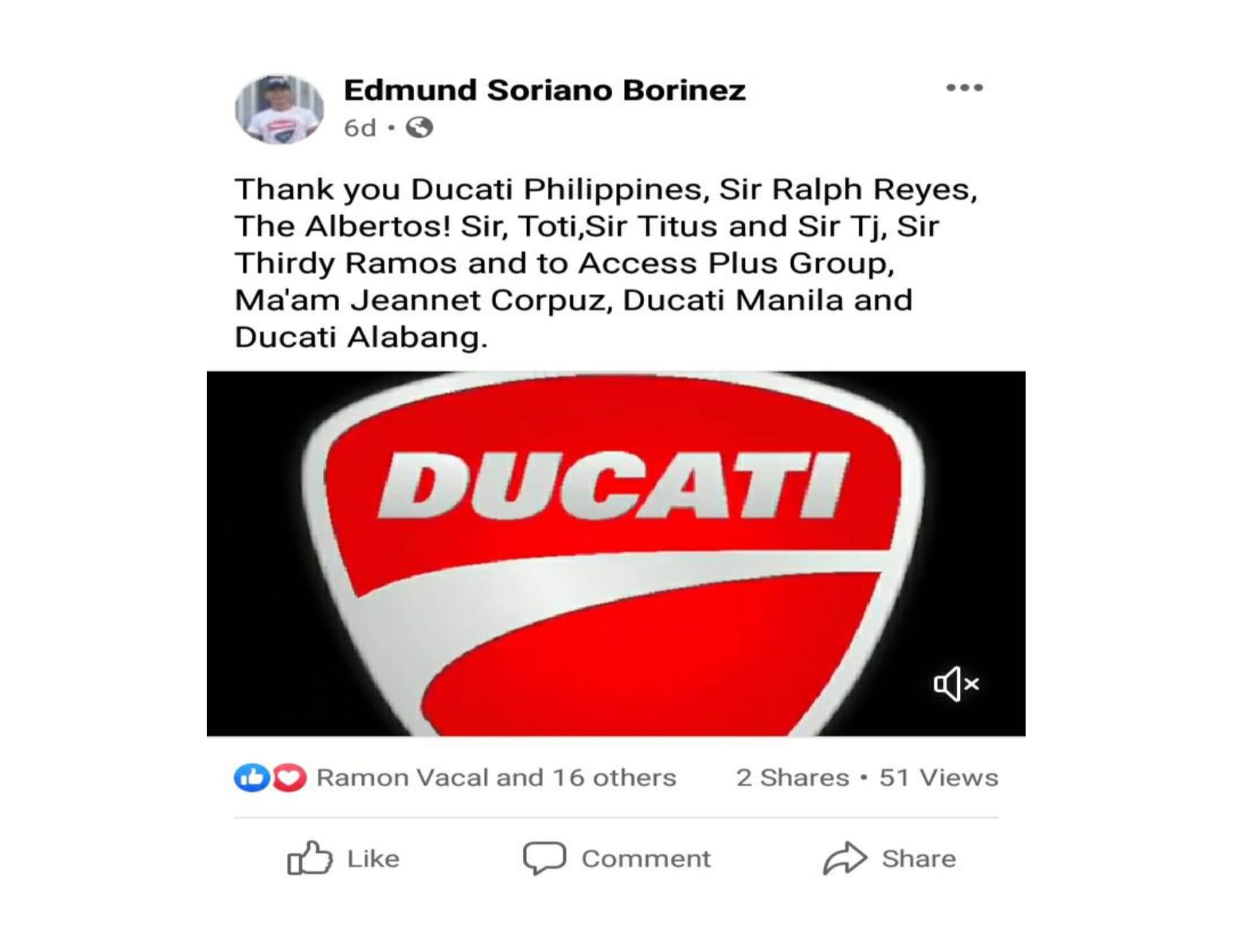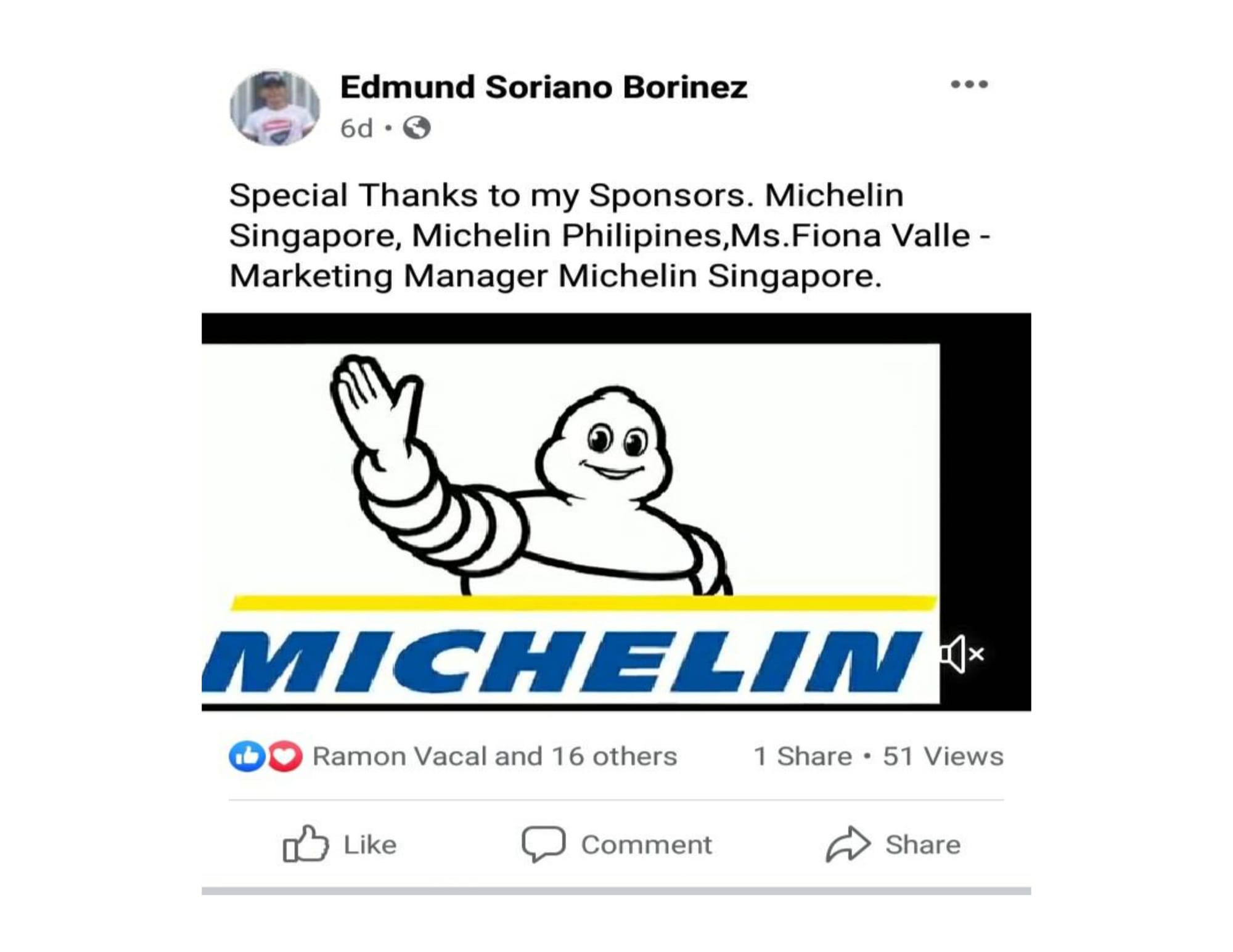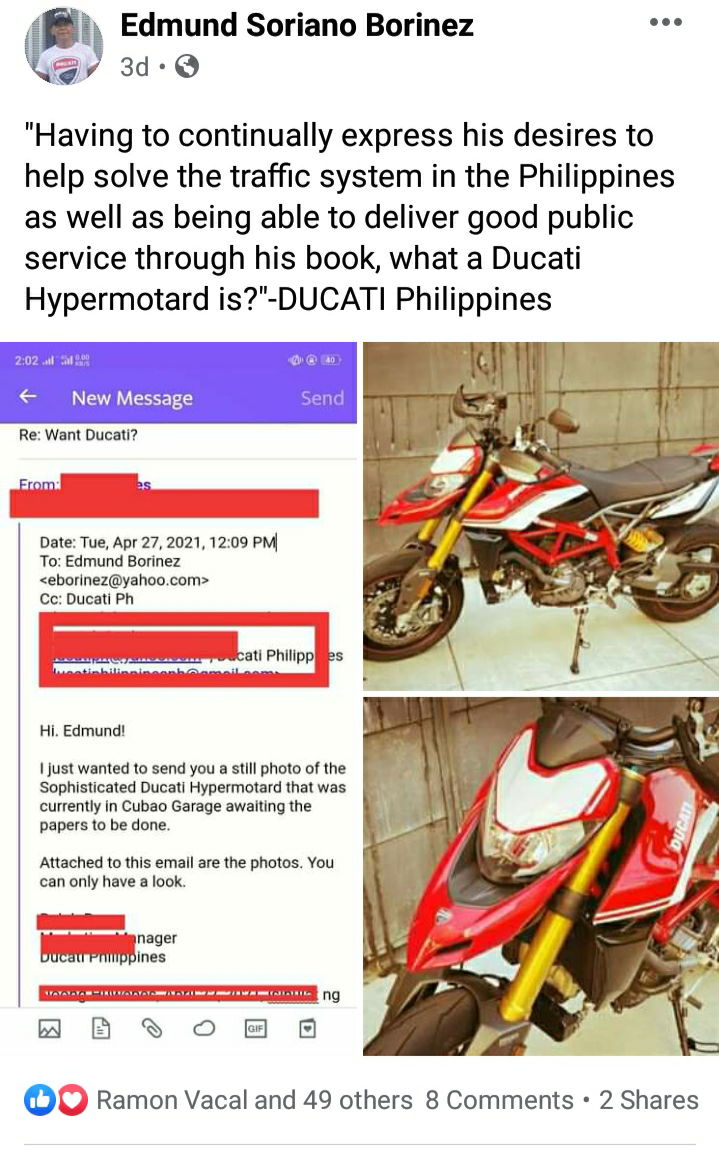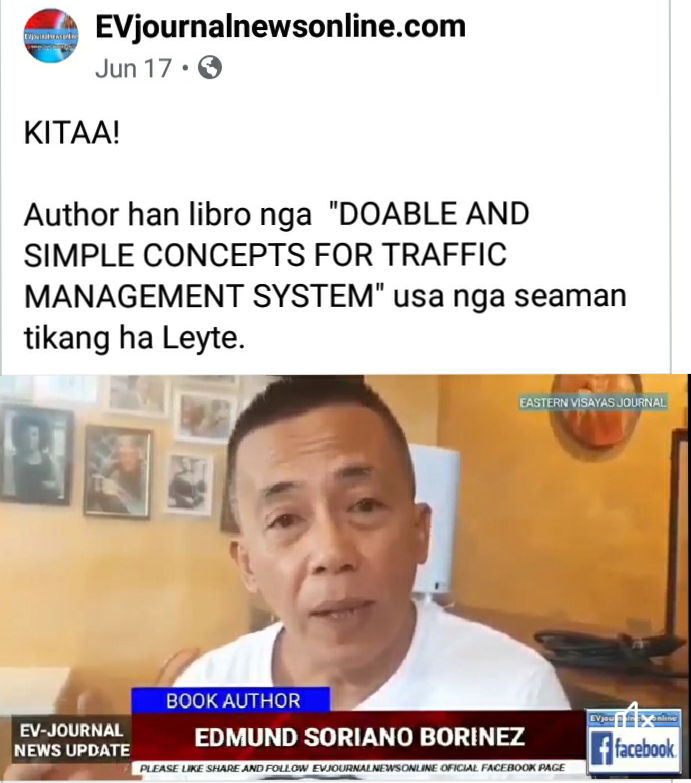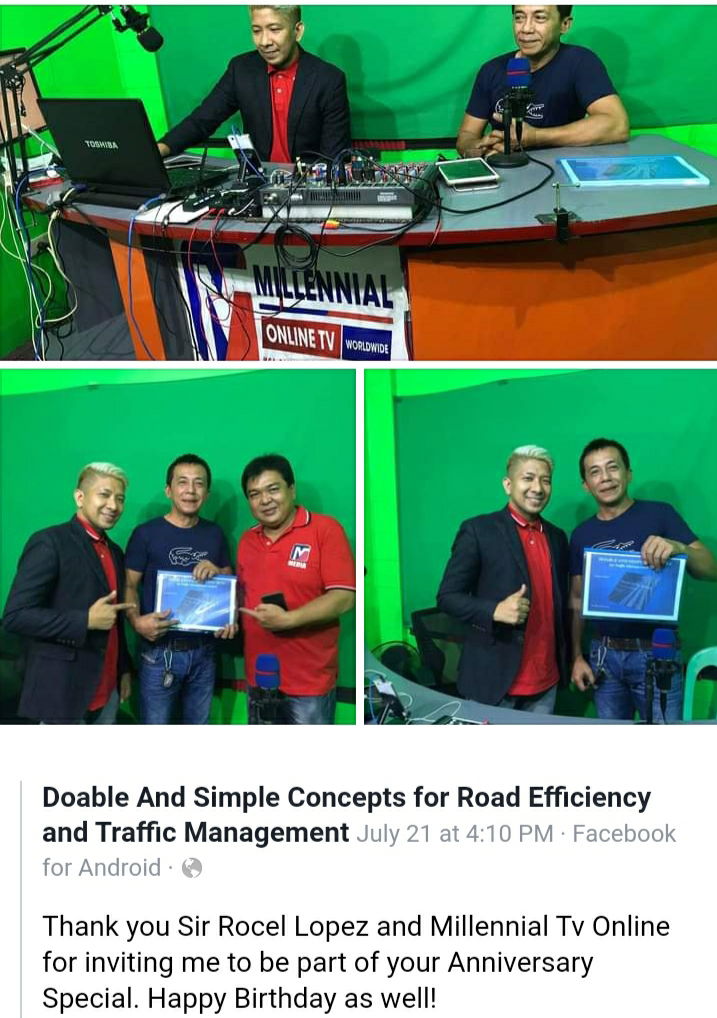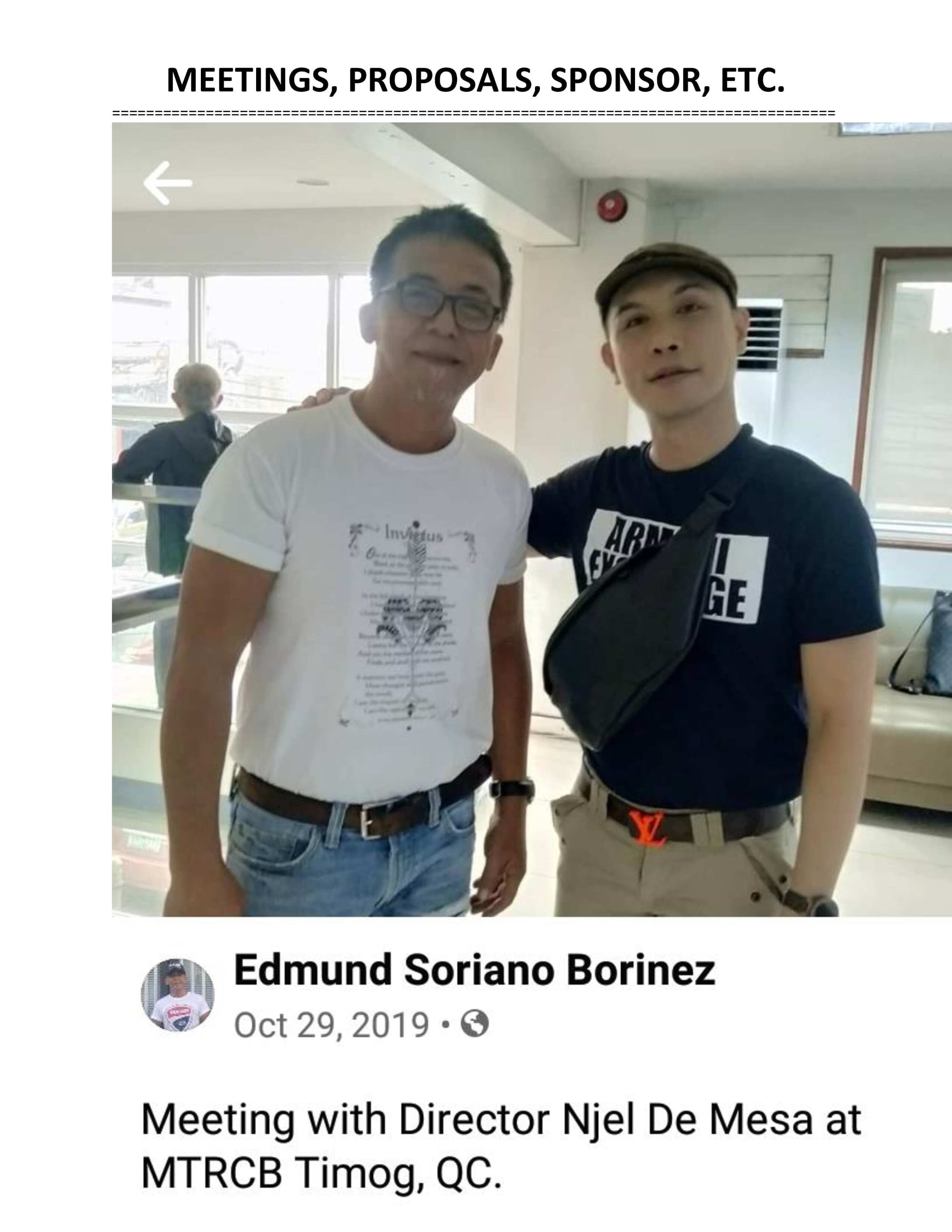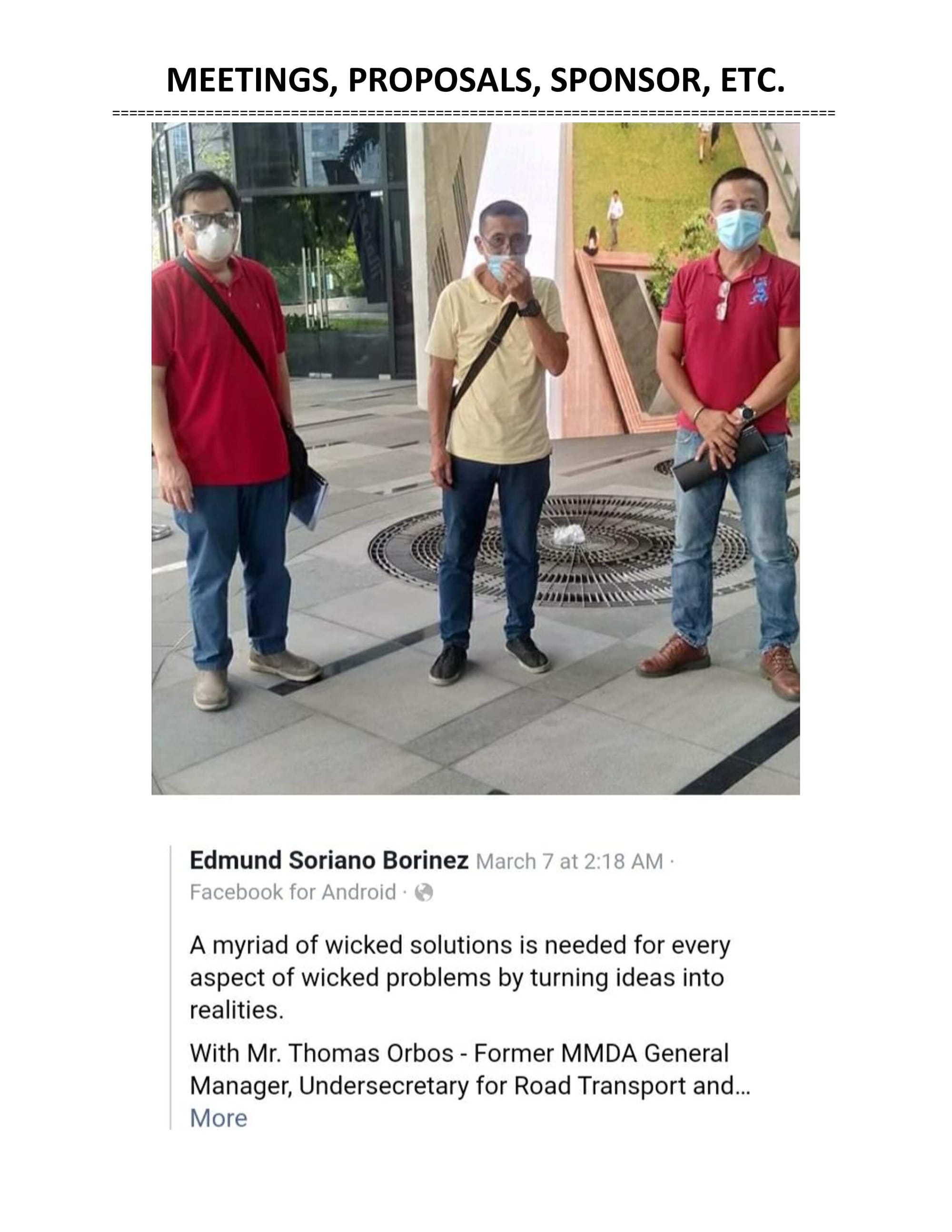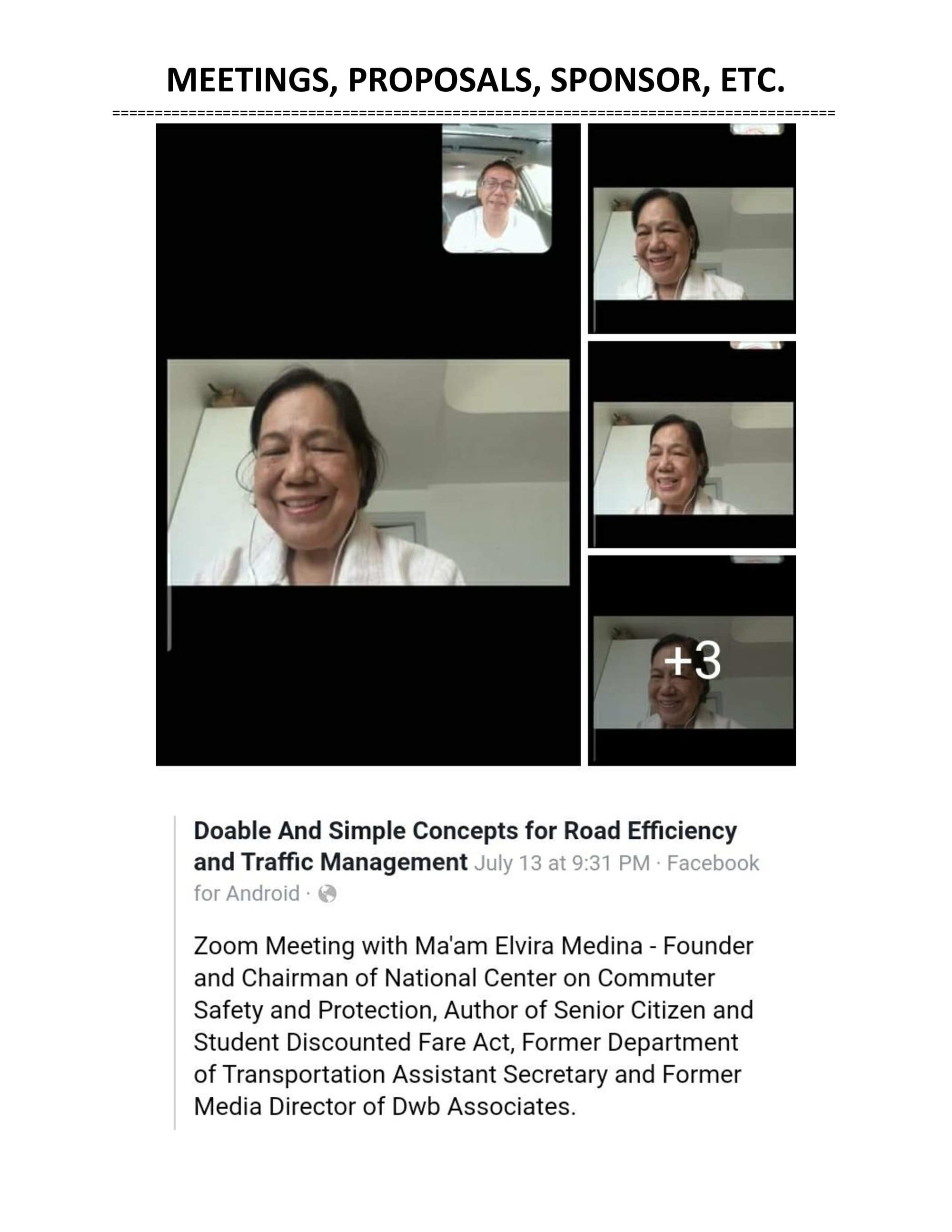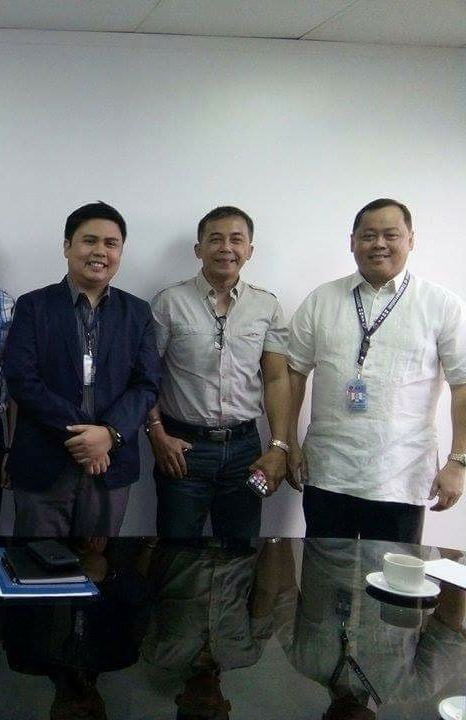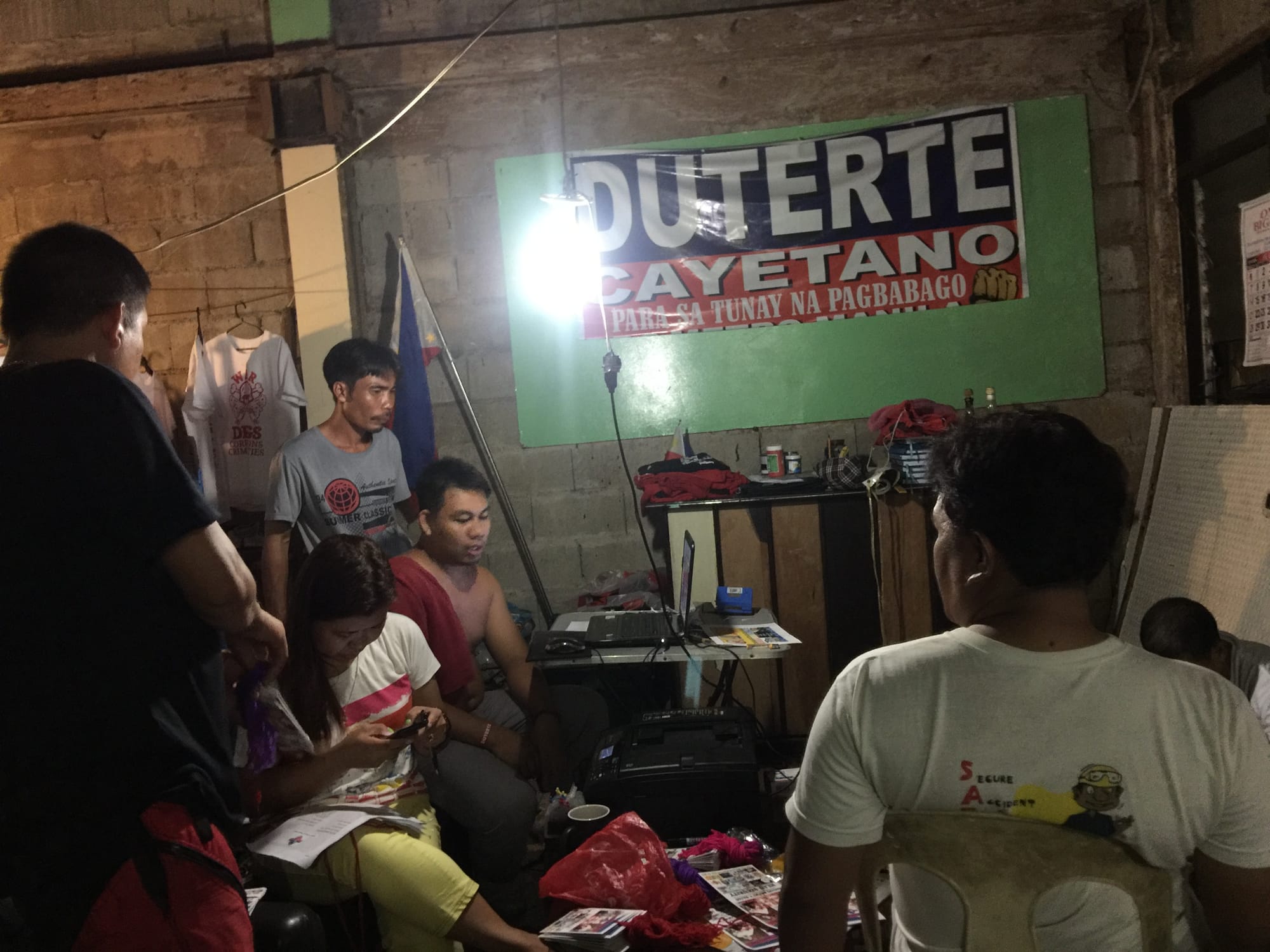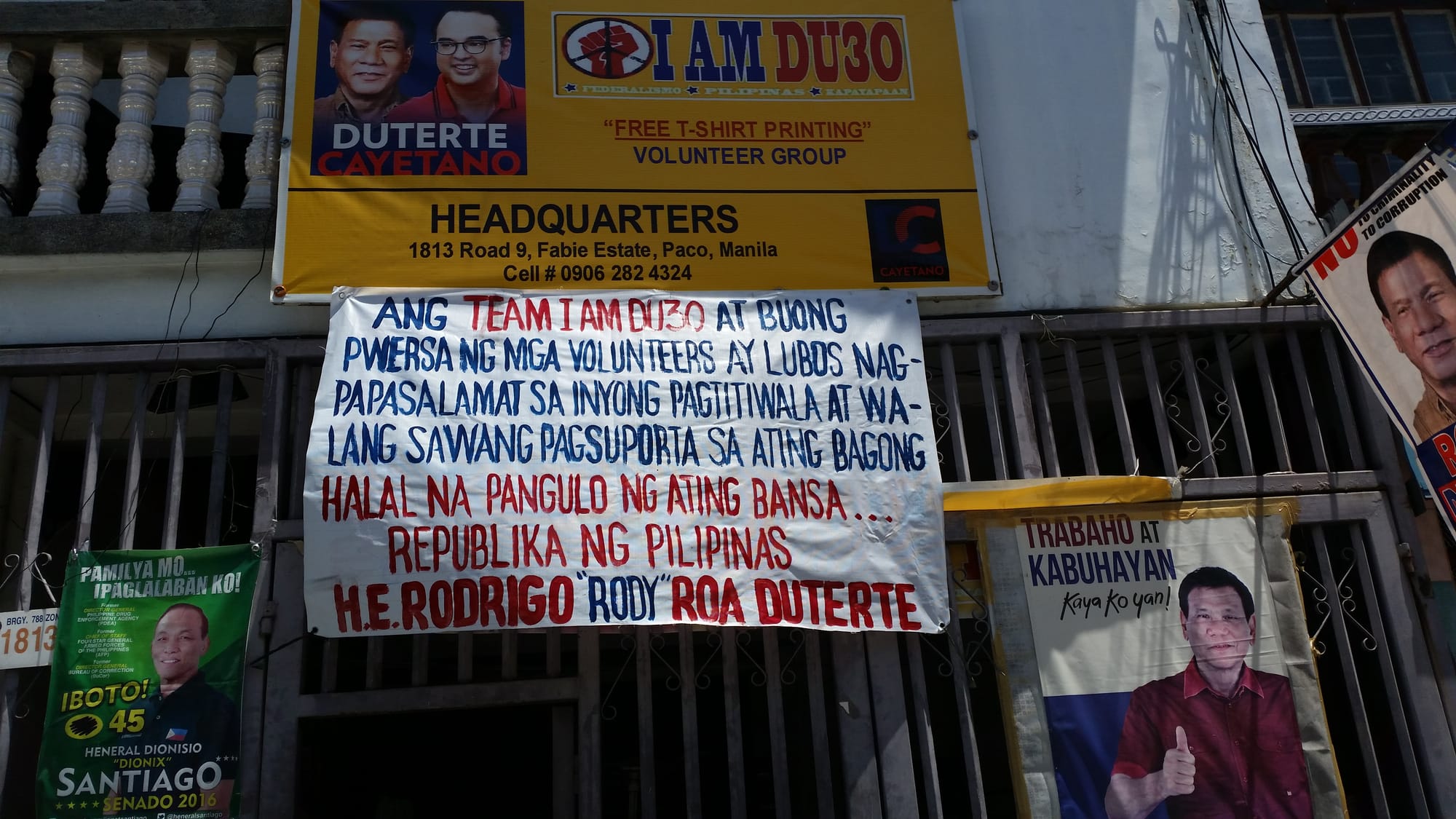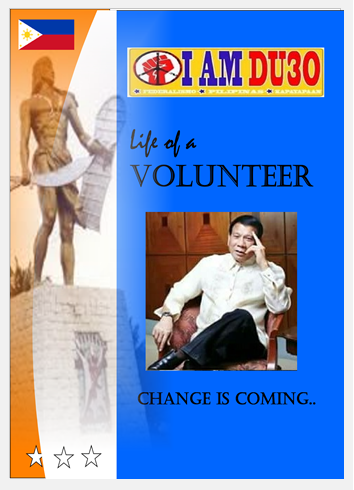TRANSFORMATIVE TRAFFIC SOLUTION (TTS)
by: Edmund Borinez

AUTHOR
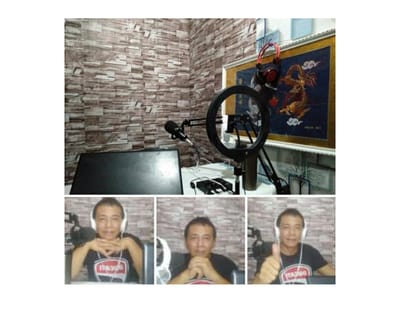

He believes that the country's problems can change with strong political will, a modern digital system, and unity among people.
In traffic solutions, sometimes a truly game-changing idea emerges. Edmund presents an innovative design that uses digitalization and modernization, never before seen in transportation history. This idea stems from his passion and belief in technology's power to solve our traffic issues.
Although he isn't a professional engineer, urban planner, or architect, history shows that many innovators, like the Wright brothers and Elon Musk, achieved great things without formal education in their fields. Edmund believes that vision and determination can make anything possible, especially in technology. His experience as a maritime officer and living in Australia has given him valuable insights into traffic management and urban planning.
His proposed system is designed to complement existing laws and frameworks, not conflict with them. The success of the Single Ticketing System in Metro Manila shows that such systems can work without causing issues.
Traffic problems affect everyone, so solutions should come from the people who experience them daily. Edmund calls for support for his innovation, emphasizing that the Philippines can become a "Smart City" by embracing digital transformation. Despite some skepticism, he believes in the feasibility and importance of his creation, which he has been advocating for since 2016.
Edmund invites everyone to explore his traffic solution design, highlighting the potential of combining passion and innovation.
PROBLEM STATEMENTS

Transformative Traffic Solution
Problem Statement:
In 2018, a JICA study highlighted a significant economic loss due to traffic congestion in our
country, amounting to PHP 3.5 billion daily. Projections indicate this could rise to PHP 5.4
billion per day by 2035 if no solution is found. As of 2024, we have only 11 years left to address
this critical issue.
Currently, Manila ranks as the worst city globally for traffic congestion. In response, President
Ferdinand "Bongbong" Marcos Jr. convened a meeting with transportation-related agencies
and Metro Manila LGUs to formulate a comprehensive solution.
Despite the efforts of successive administrations, the traffic problem remains unresolved. Tim
Orbos, former MMDA chairman and traffic czar, aptly described Philippine traffic as a
"basketful of wicked problems" requiring equally complex solutions. He emphasized that the
issue is a product of numerous interconnected problems, necessitating multifaceted
approaches.
The persistent traffic challenges in our urban areas—such as congestion, accidents, and illegal
parking—are influenced by the behaviors of drivers, pedestrians, commuters, and enforcers, as
well as the actions of sectoral agencies. These challenges have significant economic,
environmental, and social impacts, underscoring the need for innovative, comprehensive
solutions.
Problem Statement:
In 2018, a JICA study highlighted a significant economic loss due to traffic congestion in our
country, amounting to PHP 3.5 billion daily. Projections indicate this could rise to PHP 5.4
billion per day by 2035 if no solution is found. As of 2024, we have only 11 years left to address
this critical issue.
Currently, Manila ranks as the worst city globally for traffic congestion. In response, President
Ferdinand "Bongbong" Marcos Jr. convened a meeting with transportation-related agencies
and Metro Manila LGUs to formulate a comprehensive solution.
Despite the efforts of successive administrations, the traffic problem remains unresolved. Tim
Orbos, former MMDA chairman and traffic czar, aptly described Philippine traffic as a
"basketful of wicked problems" requiring equally complex solutions. He emphasized that the
issue is a product of numerous interconnected problems, necessitating multifaceted
approaches.
The persistent traffic challenges in our urban areas—such as congestion, accidents, and illegal
parking—are influenced by the behaviors of drivers, pedestrians, commuters, and enforcers, as
well as the actions of sectoral agencies. These challenges have significant economic,
environmental, and social impacts, underscoring the need for innovative, comprehensive
solutions.
Solution Overview:
Transformative Traffic Solution
Solution Overview:
Transformative Traffic Solution (TTS) is not just one, two, three, or four solutions; it is a myriad
of solutions within a well-structured system designed to address the wicked problem of traffic
congestion. It is a uniquely tailored and holistic initiative aimed at tackling persistent traffic
challenges through the integration of technology. It offers interconnected solutions that
emphasize the importance of consistency, continuity, and connectivity across all aspects of
urban mobility, and it is implemented simultaneously.
Proposed Solutions:
Our solution addresses traffic congestion, parking issues including illegal parking, and
behavioral attitudes through two main strategies: the Technological Integrated Approach and
the Collaborative Engagement Approach.
Technological Integrated Approach:
The Technological Integrated Approach of the Transformative Traffic Solution (TTS) uses
servers, CRM systems, websites, and mobile apps to create a unified system for easy
traffic management. This approach aims to keep traffic flowing smoothly and parking
organized in both cities and rural areas. By using real-time data, it helps make roads
safer and more orderly.
The great news is that once we finalize the concept, we can implement this system in
provinces too. This means better communication and coordination between local
government units (LGUs), traffic enforcers, and the public. The system allows for quick
responses to traffic incidents, makes managing parking and traffic violations easier, and
collects useful data for better planning and decision-making. Overall, the TTS aims to
make traffic management more efficient, reliable, and user- friendly for everyone.
Collaborative Engagement Approach:
Focused on fostering collaboration and transparency among various stakeholders,
including government agencies, local government units (LGUs), sectoral agencies, and
the public, this approach aims to cultivate a shared responsibility for traffic
management and urban safety. By encouraging participation and integrating diverse
perspectives, it ensures sustainable improvements and effective enforcement of traffic
regulations. Our approach tackles complex urban challenges by combining digital tools
with collaborative methods to address entrenched mindsets across diverse groups.
Using technology, we aim to deliver quick, efficient solutions that promote
coordination among stakeholders, turn ideas into practical actions, and make cities
safer, more efficient, while encouraging public involvement.
Solution Overview:
Transformative Traffic Solution (TTS) is not just one, two, three, or four solutions; it is a myriad
of solutions within a well-structured system designed to address the wicked problem of traffic
congestion. It is a uniquely tailored and holistic initiative aimed at tackling persistent traffic
challenges through the integration of technology. It offers interconnected solutions that
emphasize the importance of consistency, continuity, and connectivity across all aspects of
urban mobility, and it is implemented simultaneously.
Proposed Solutions:
Our solution addresses traffic congestion, parking issues including illegal parking, and
behavioral attitudes through two main strategies: the Technological Integrated Approach and
the Collaborative Engagement Approach.
Technological Integrated Approach:
The Technological Integrated Approach of the Transformative Traffic Solution (TTS) uses
servers, CRM systems, websites, and mobile apps to create a unified system for easy
traffic management. This approach aims to keep traffic flowing smoothly and parking
organized in both cities and rural areas. By using real-time data, it helps make roads
safer and more orderly.
The great news is that once we finalize the concept, we can implement this system in
provinces too. This means better communication and coordination between local
government units (LGUs), traffic enforcers, and the public. The system allows for quick
responses to traffic incidents, makes managing parking and traffic violations easier, and
collects useful data for better planning and decision-making. Overall, the TTS aims to
make traffic management more efficient, reliable, and user- friendly for everyone.
Collaborative Engagement Approach:
Focused on fostering collaboration and transparency among various stakeholders,
including government agencies, local government units (LGUs), sectoral agencies, and
the public, this approach aims to cultivate a shared responsibility for traffic
management and urban safety. By encouraging participation and integrating diverse
perspectives, it ensures sustainable improvements and effective enforcement of traffic
regulations. Our approach tackles complex urban challenges by combining digital tools
with collaborative methods to address entrenched mindsets across diverse groups.
Using technology, we aim to deliver quick, efficient solutions that promote
coordination among stakeholders, turn ideas into practical actions, and make cities
safer, more efficient, while encouraging public involvement.
Key Components
Key Components
1.Behavioral Changes:
Educational Campaigns: Promote responsible behavior among drivers, pedestrians, and commuters.
Public Empowerment: Provide incentives that inspire and motivate the general public to participate in creating a safe and responsible society.
2.Technology Integration
a. Digitalized and Modernized Approach:
Efficiency: Improves efficiency, streamlines processes, and reduces manual
intervention. Effectiveness: Enhances overall performance and effectiveness through
technology adoption.
Nationwide Implementation: Ensures benefits are accessible throughout the
country.
Standardization: Creates a standard framework for addressing traffic challenges
nationwide.
Interconnectivity: Facilitates seamless communication and data sharing among
agencies.
Collaboration: Promotes collaboration, real-time decision-making, and enhanced
coordination.
Optimization for Poor Network Signal Reliability: Optimizes functionality even in
areas with poor network signal.
Uninterrupted Access: Ensures uninterrupted access to critical features and services.
b. Server
i. City-LGU for Local Implementation:
Responsible for implementing and monitoring the system at the local level.
ii. Created Agency for National Implementation:
Requires the creation of an agency to implement and monitor the system
nationally.
c. Mobile Application
Validator (Monitoring, Apprehension) End-User: Enforcer:
Capabilities: Enhances law enforcement capabilities and traffic regulation
enforcement.
Monitoring: Status check for licenses and vehicle registration.
Digital Apprehension: Issues electronic tickets for violations, reducing
paperwork and processing time.
Streamline Processes: Respond immediately to accidents, car napping, or
any alarms, creating a safer and more organized road environment.
Patriot (Public Engagement) End-User: General Public:
Education and Involvement: Disseminates information, educates, issues
e-tickets for violations, and provides updates on city ordinance violations and
traffic conditions.
Inspire and Motivate: Empowers users to actively participate in promoting a
safer and more responsible society.
Mandatory Updates: Allows users to update license and vehicle details.
Faster Response & Credible: Provides access to emergency services, with
capabilities for panic alarms and emergency reporting.
Easy Parking and Convenience: Includes a park locator for convenient,
compliant parking, online payment options, and notifications before maximum
parking time expires.
Supports the National Ferry CRM System Nationwide: Leverages technology
and public participation to ensure hassle-free travel experiences for passengers,
private vehicles, trucks, and others using the Patriot Mobile apps.
Supports LGU CRM Systems Nationwide: Contributes to local governance by
providing real-time information on road safety, security, and emergencies,
facilitating efficient communication between local officials and the public through
geo-fencing using the Patriot mobile apps
Park Order (Smarter Parking Management) End-User: Park Supervisor:
Regulation: Enforces parking regulations through monitoring, ticketing, and
towing assistance in barangay areas and roadside areas.
Supports Illegal Parking Concept: Implemented by barangays for roadside
parking in barangay areas.
Park Order (Efficient Management -Roadside Areas) - End-User: Parking Attendant:
Assistance: Assists in parking cars in available slots, collects payment, monitors
online payments, and tracks illegally parked cars and expired parking.
d. Govern Website:
e. CRM System:
3.Benefits
Economic:
Revenue Generation: Efficient traffic and parking management can generate
additional revenue for the government through better utilization of parking fees & fines.
Cost Savings: Reduced congestion leads to lower fuel consumption and transportation
costs for citizens and businesses.
Govern Website (Ordinance Enforcement) End-User: Government Agency:
Compliance: Aims to enhance the enforcement of city ordinances and
promote compliance.
LGU CRM (Safety, Security, and Emergency) End-User: LGU/Barangay:
Response: Strengthens safety, security, and facilitates a faster response to
emergencies.
Port Ferry Company CRM (Efficiency) End-User: Ferry Company:
Optimization: Eliminates hassles, reduces waiting times, and prevents
congestion and corruption.
Environmental:
Reduced Emissions: Decreasing traffic congestion and promoting public transport can
lead to lower greenhouse gas emissions.
Improved Air Quality: Less traffic congestion contributes to better air quality in urban
areas.
Social:
Increased Safety: Fewer accidents result in safer roads for all users.
Enhanced Quality of Life: Reduced travel times and smoother traffic flow improve the
overall quality of life for urban residents.
Mindset Change: Solutions through digitalization foster a shift in mindset towards
sustainable and responsible practices.
4. Collaborative Opportunities:
To bring this vision to life, we need collaboration and support from various stakeholders:.
Government Agencies: Provide policy support, funding, and enforcement mechanisms.
Local Government Units: Implement and oversee localized aspects of the project.
Technology Partners: Supply and manage the technological infrastructure for real-time
monitoring and enforcement.
Community Stakeholders: Participate in educational campaigns and adopt
recommended practices.
